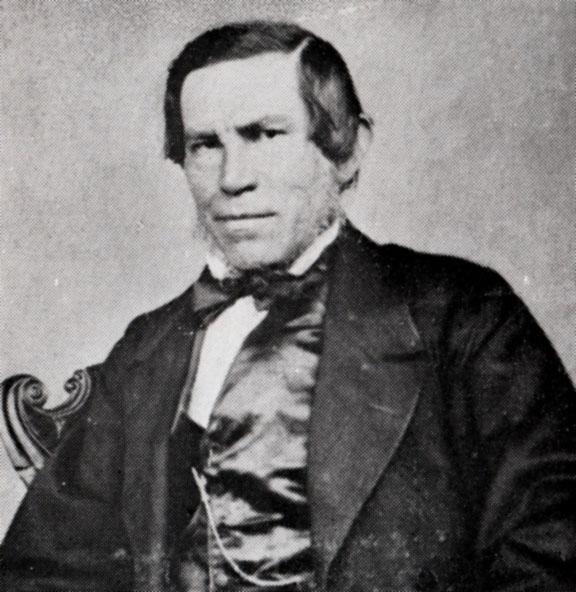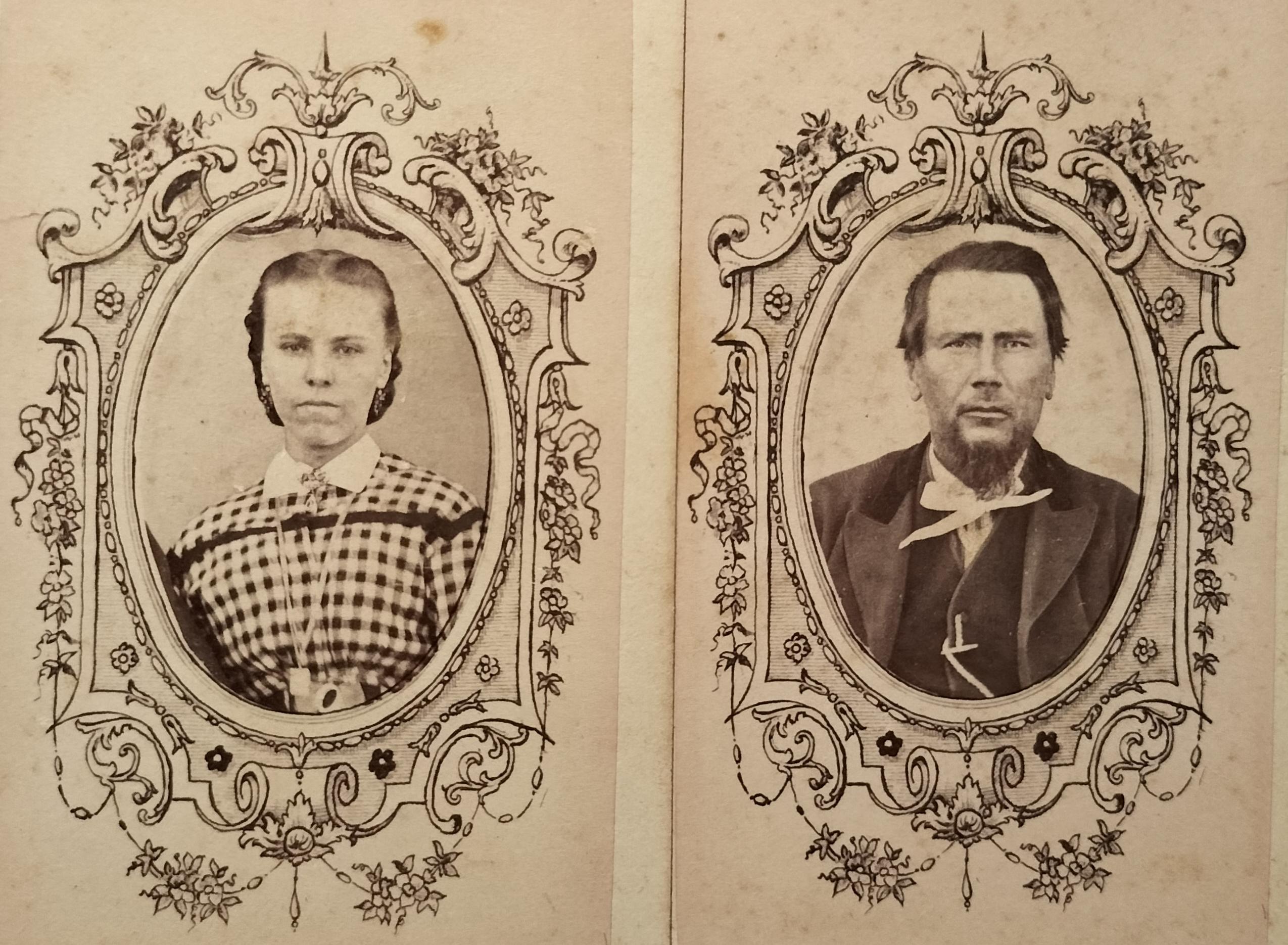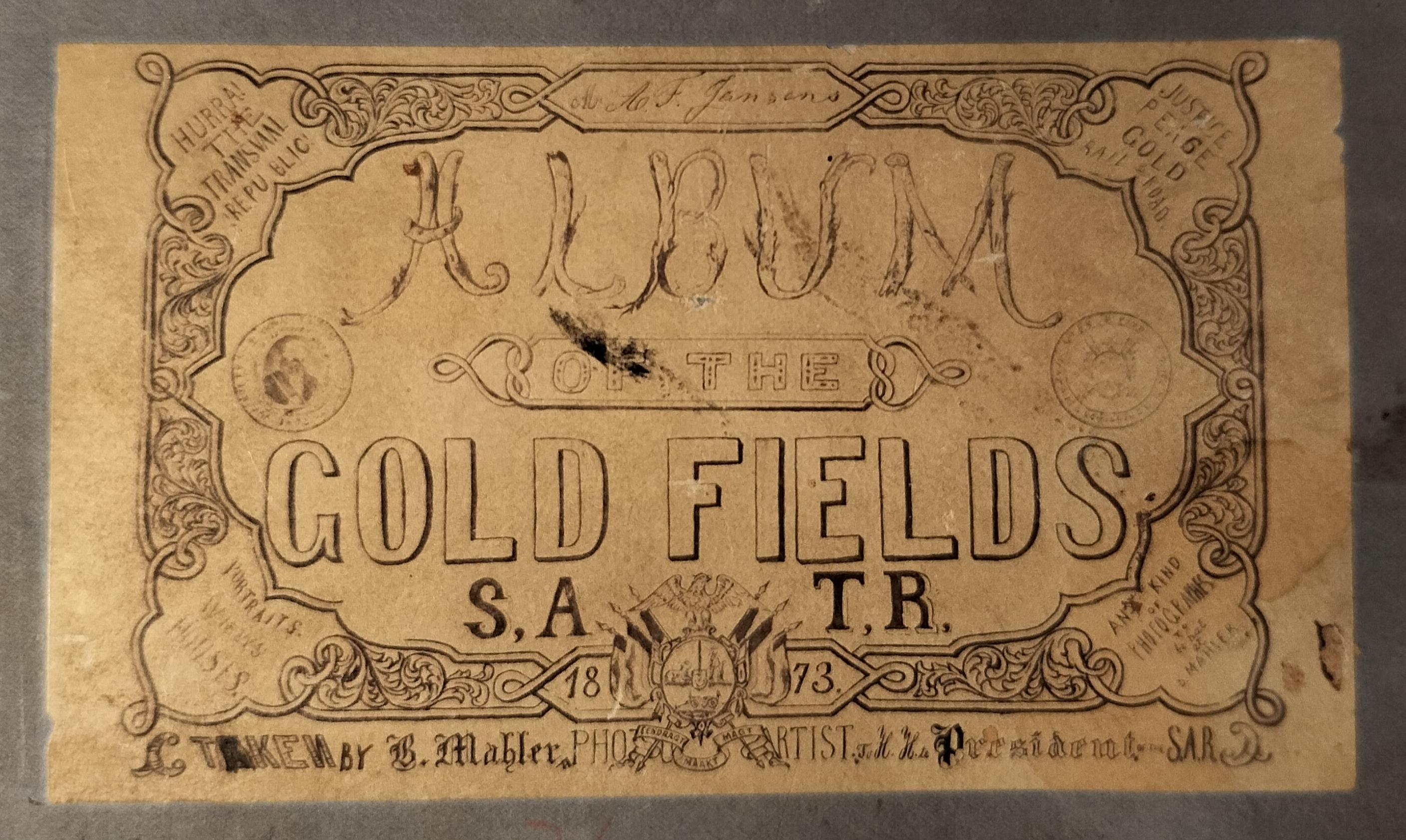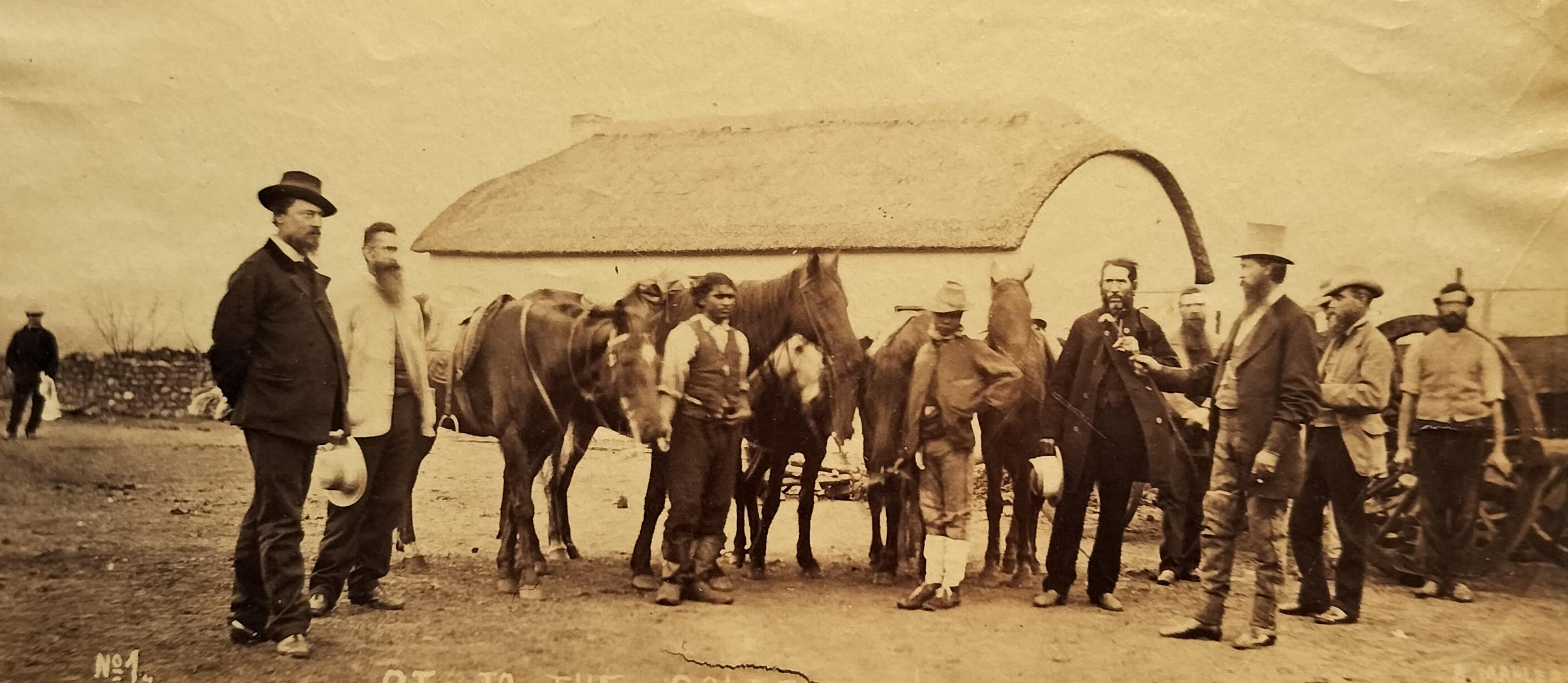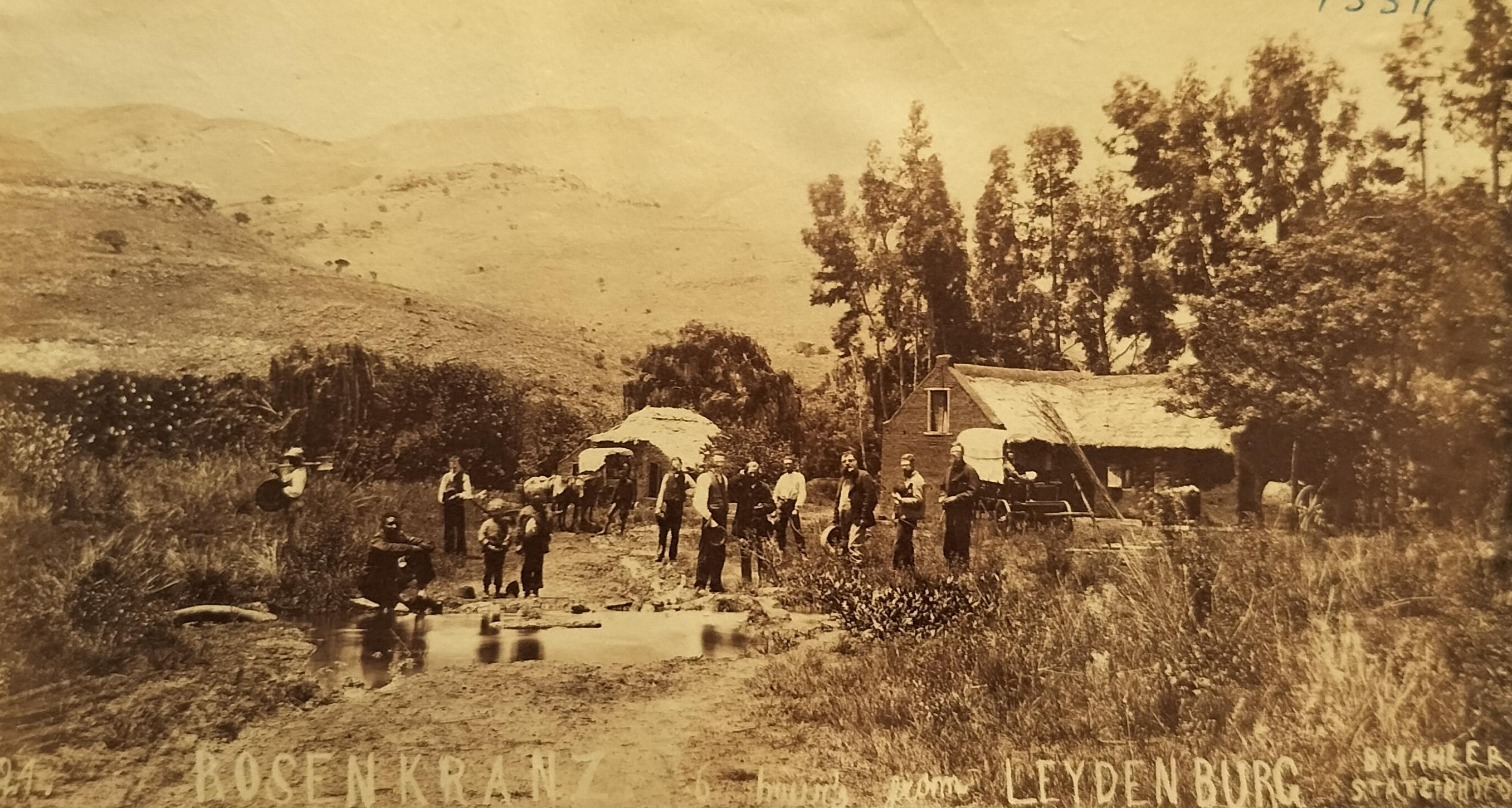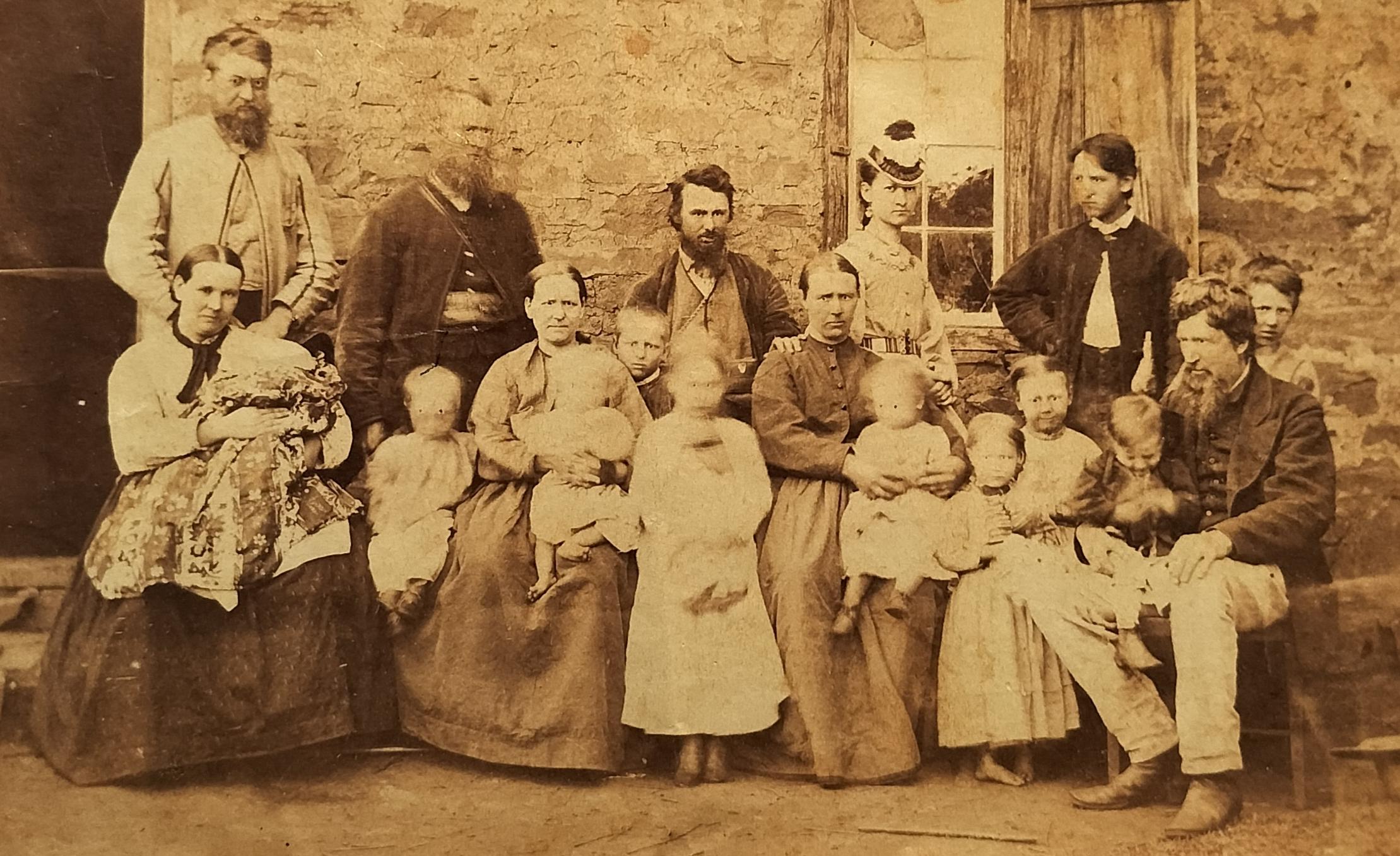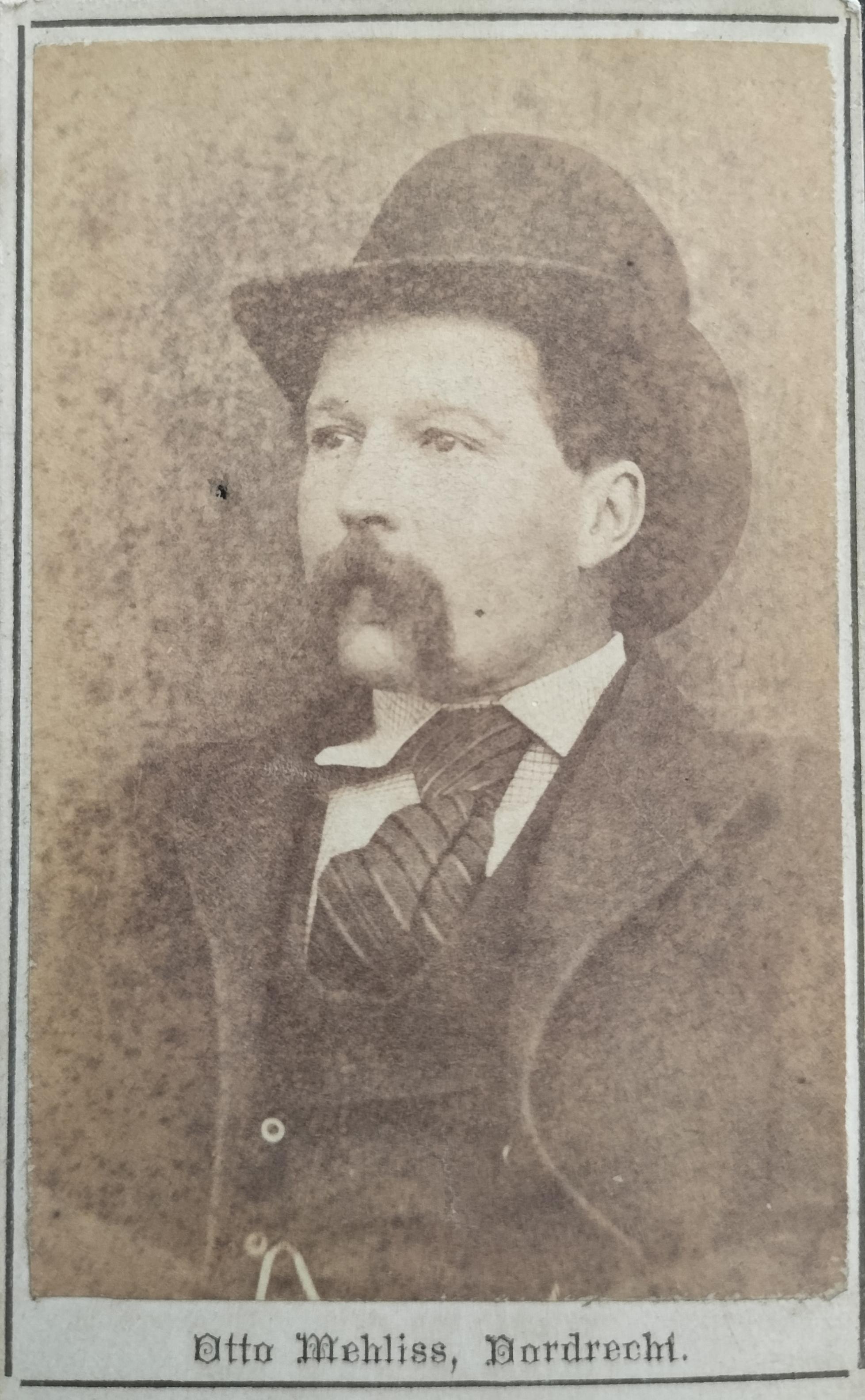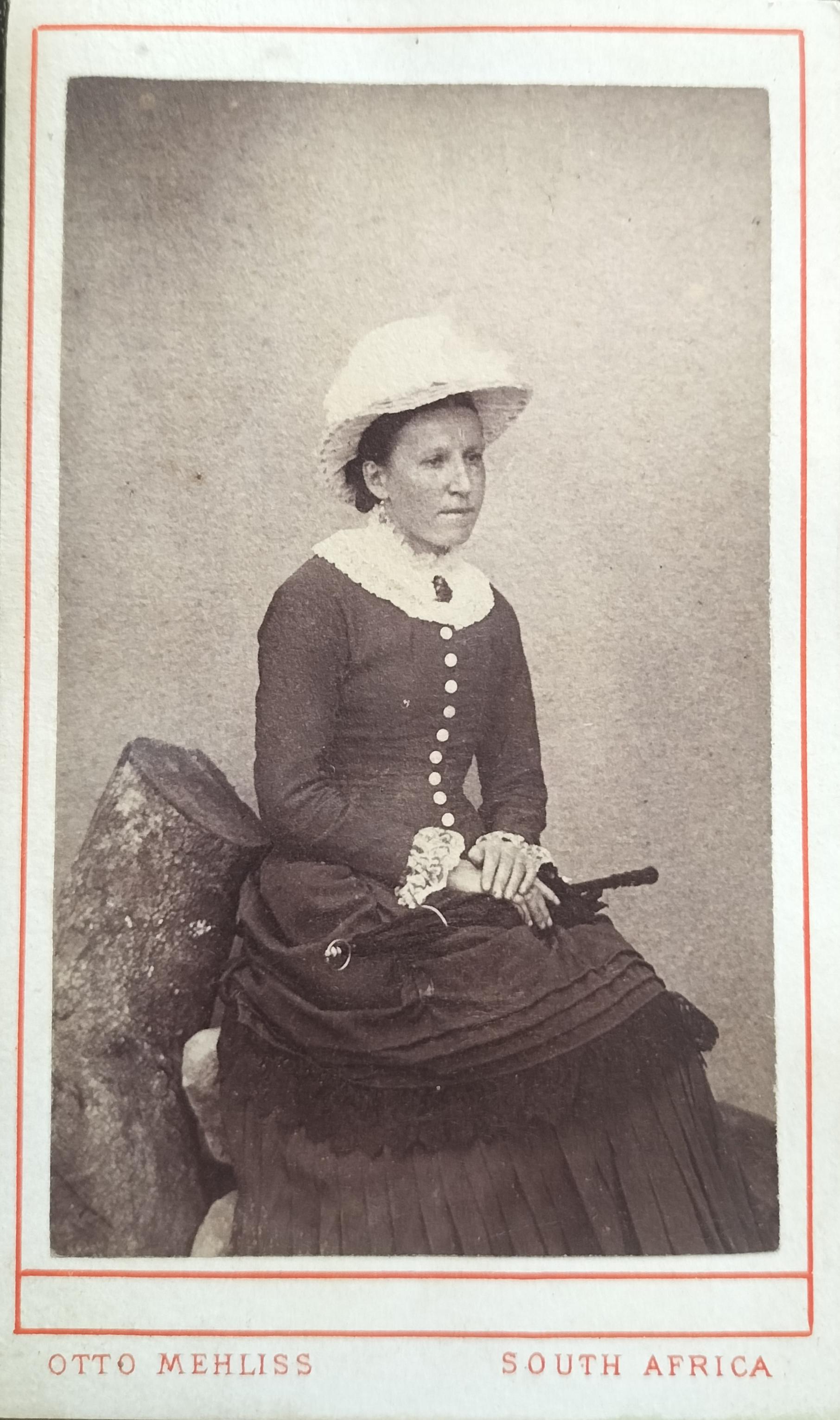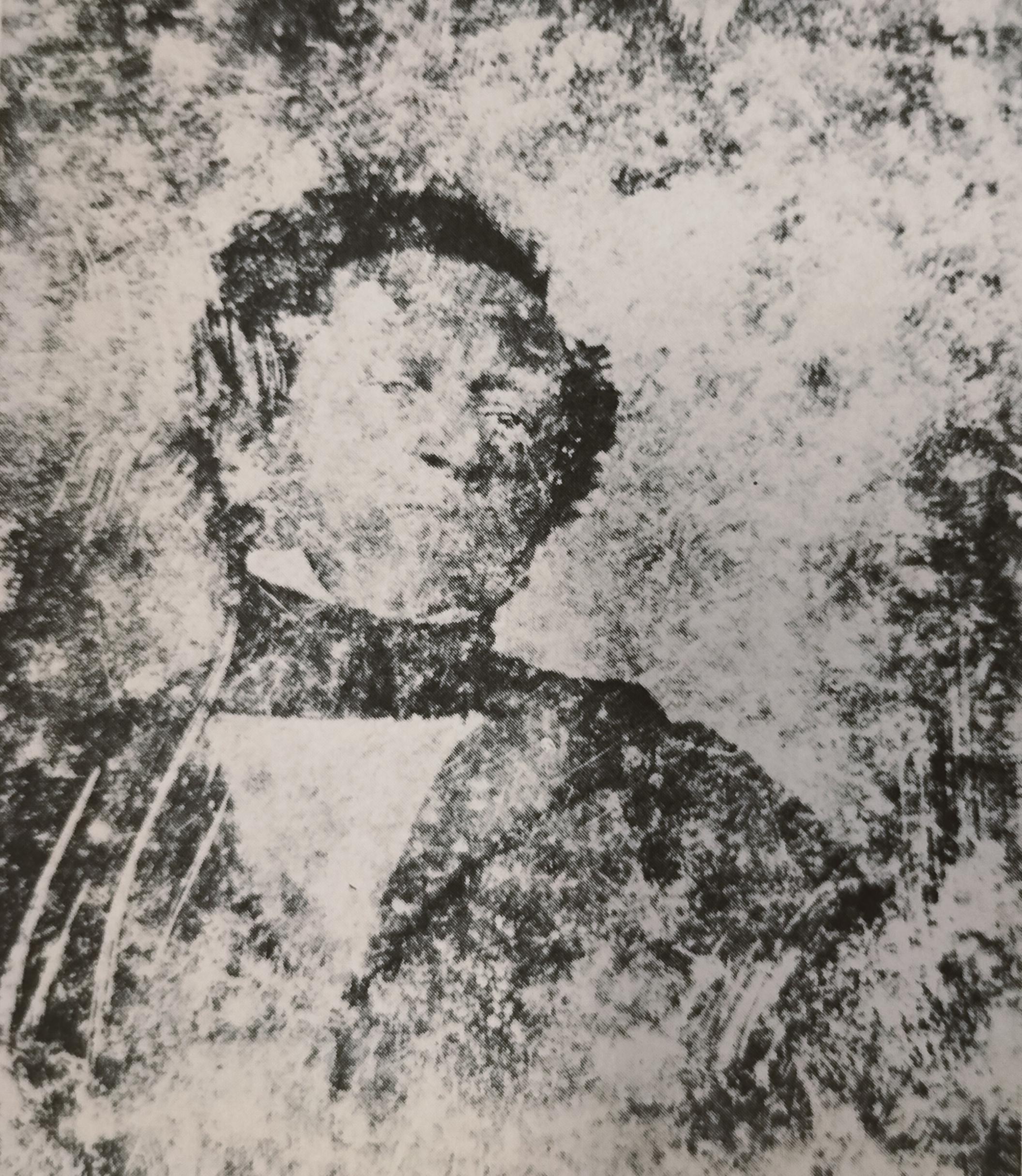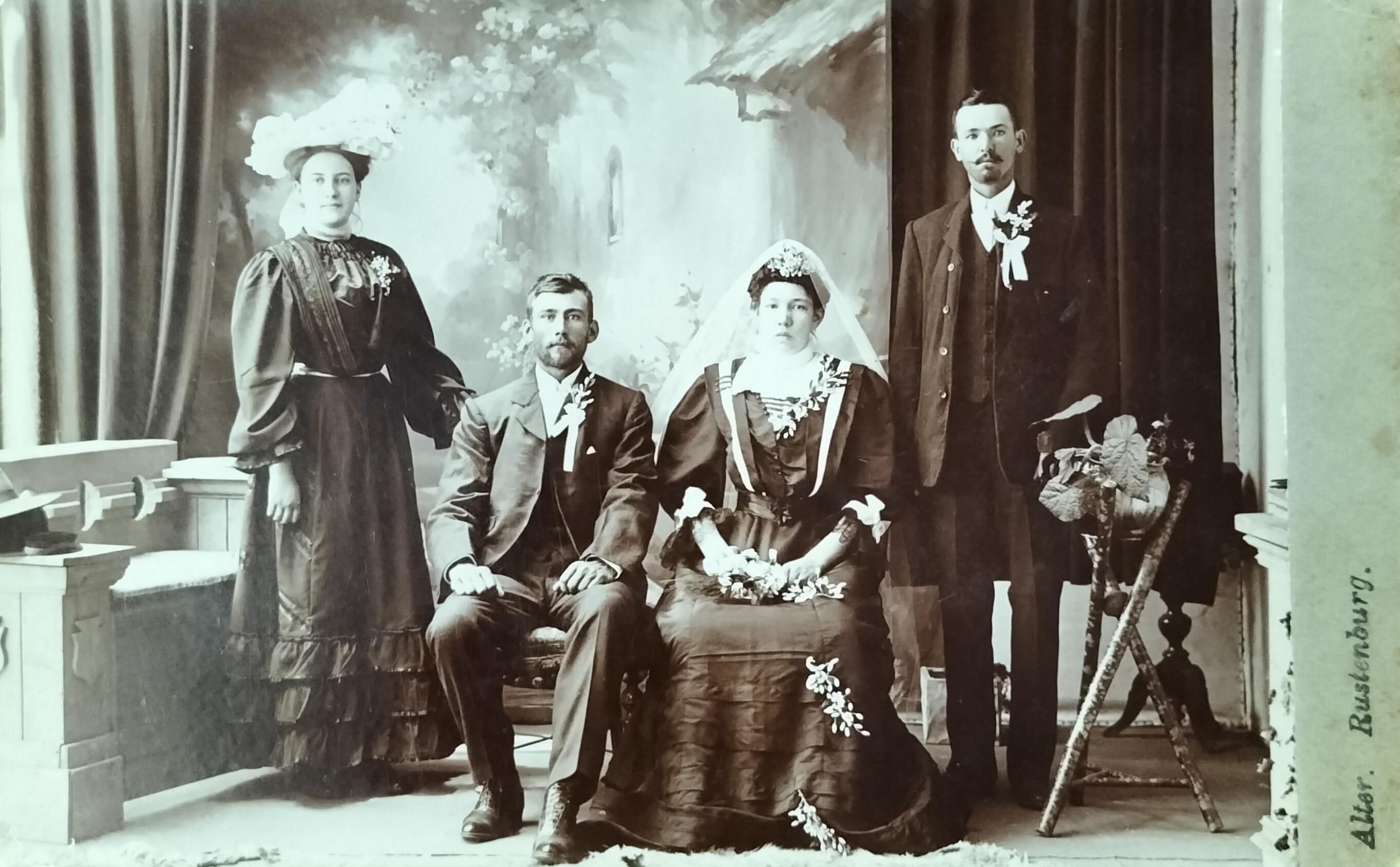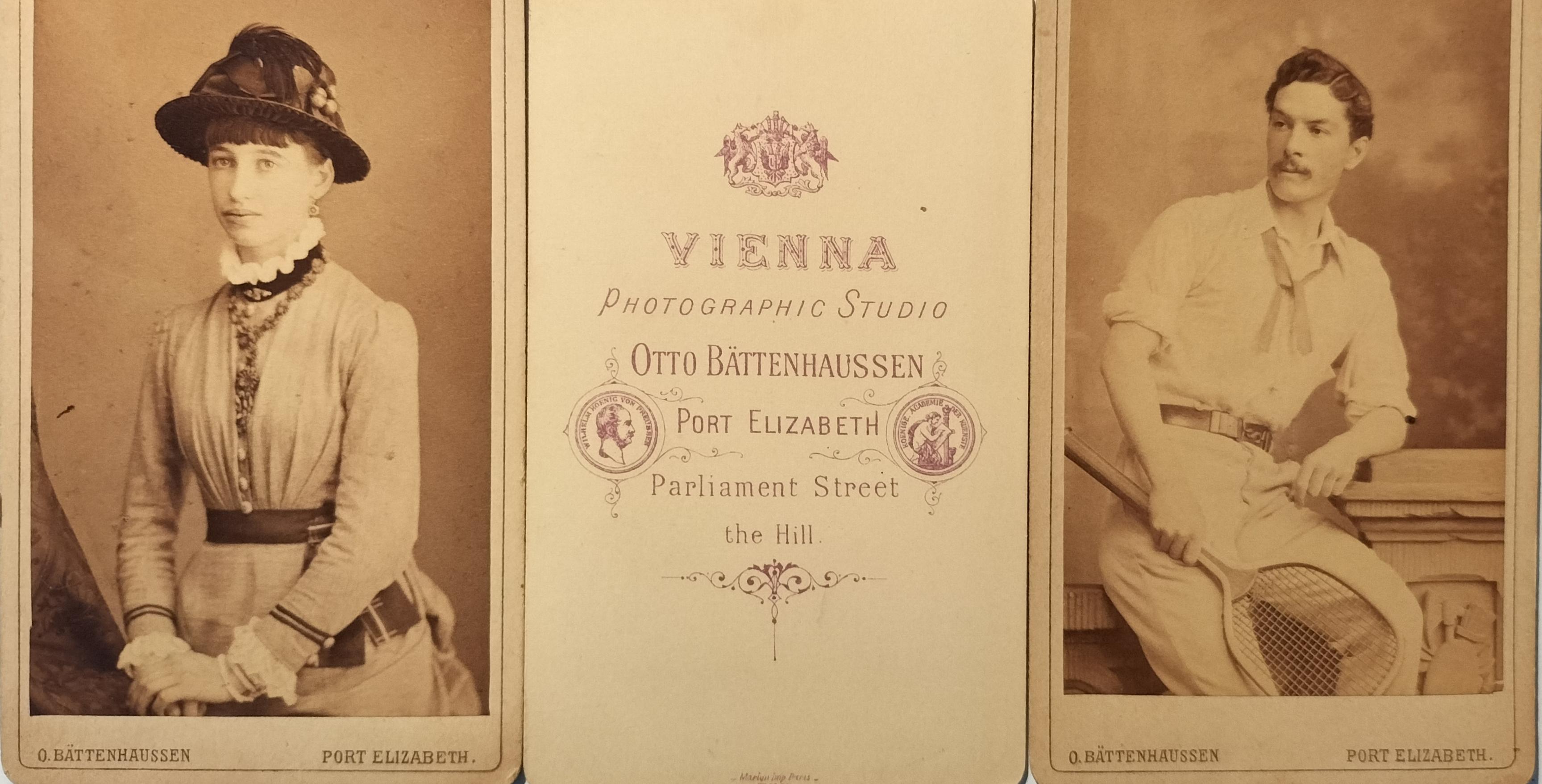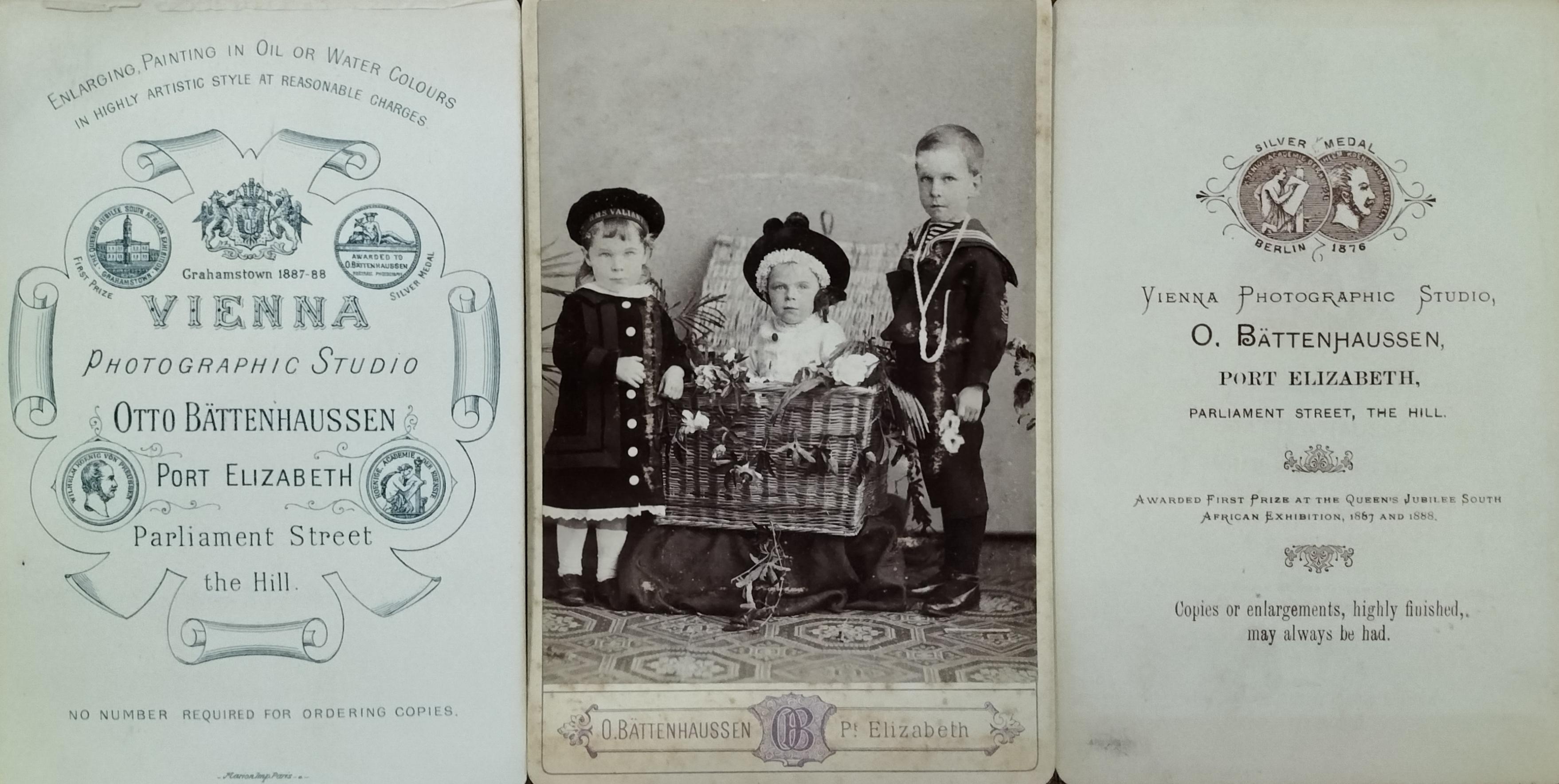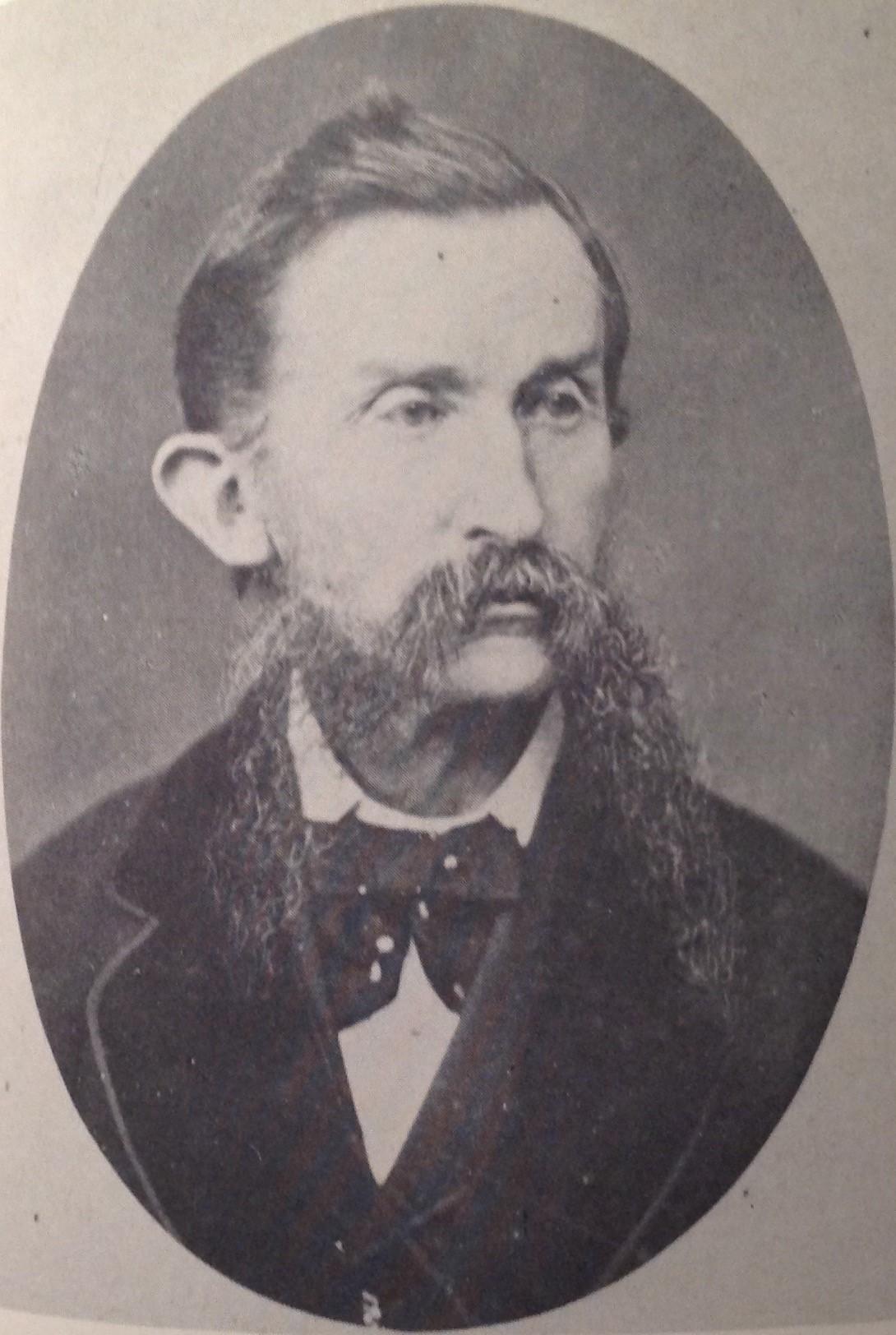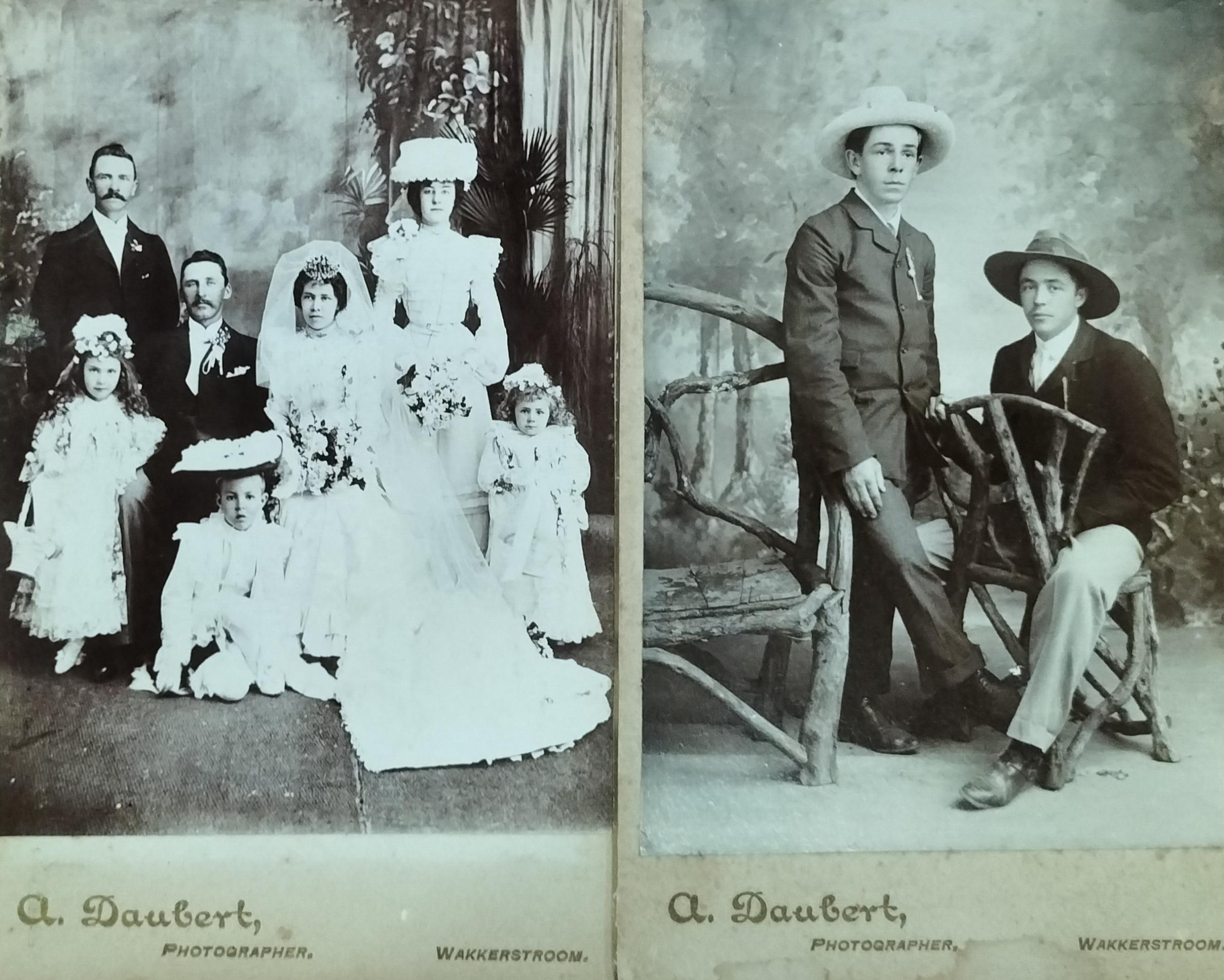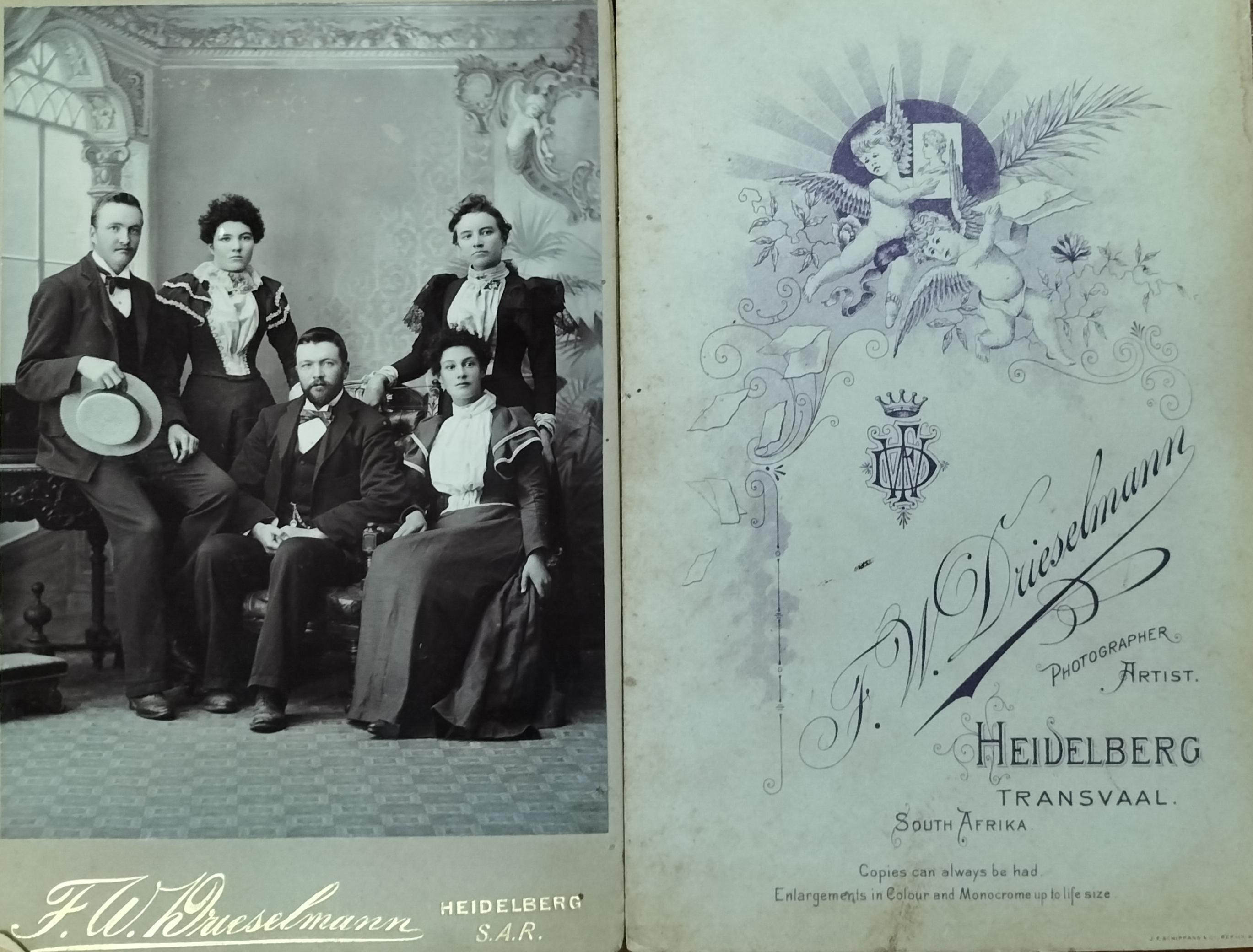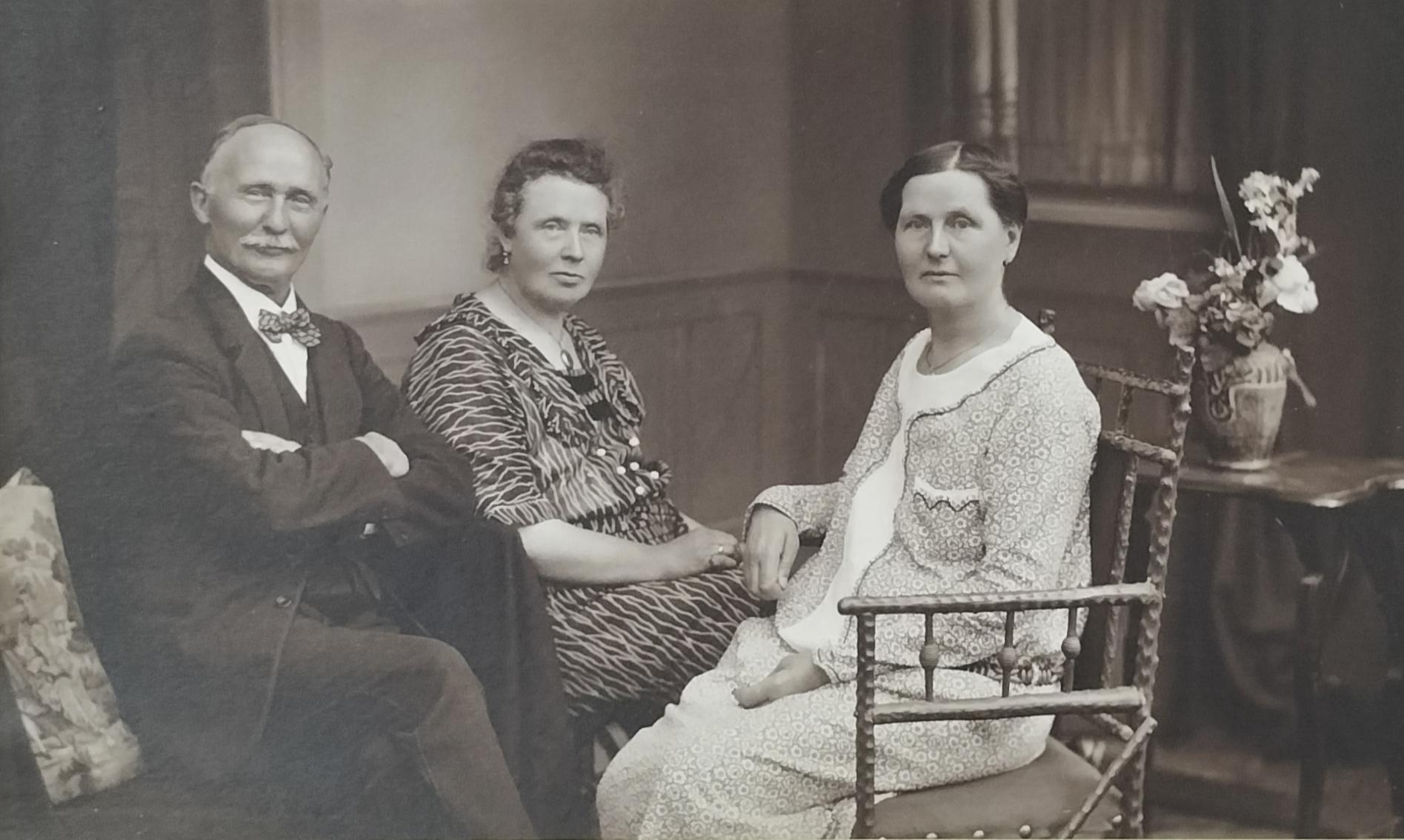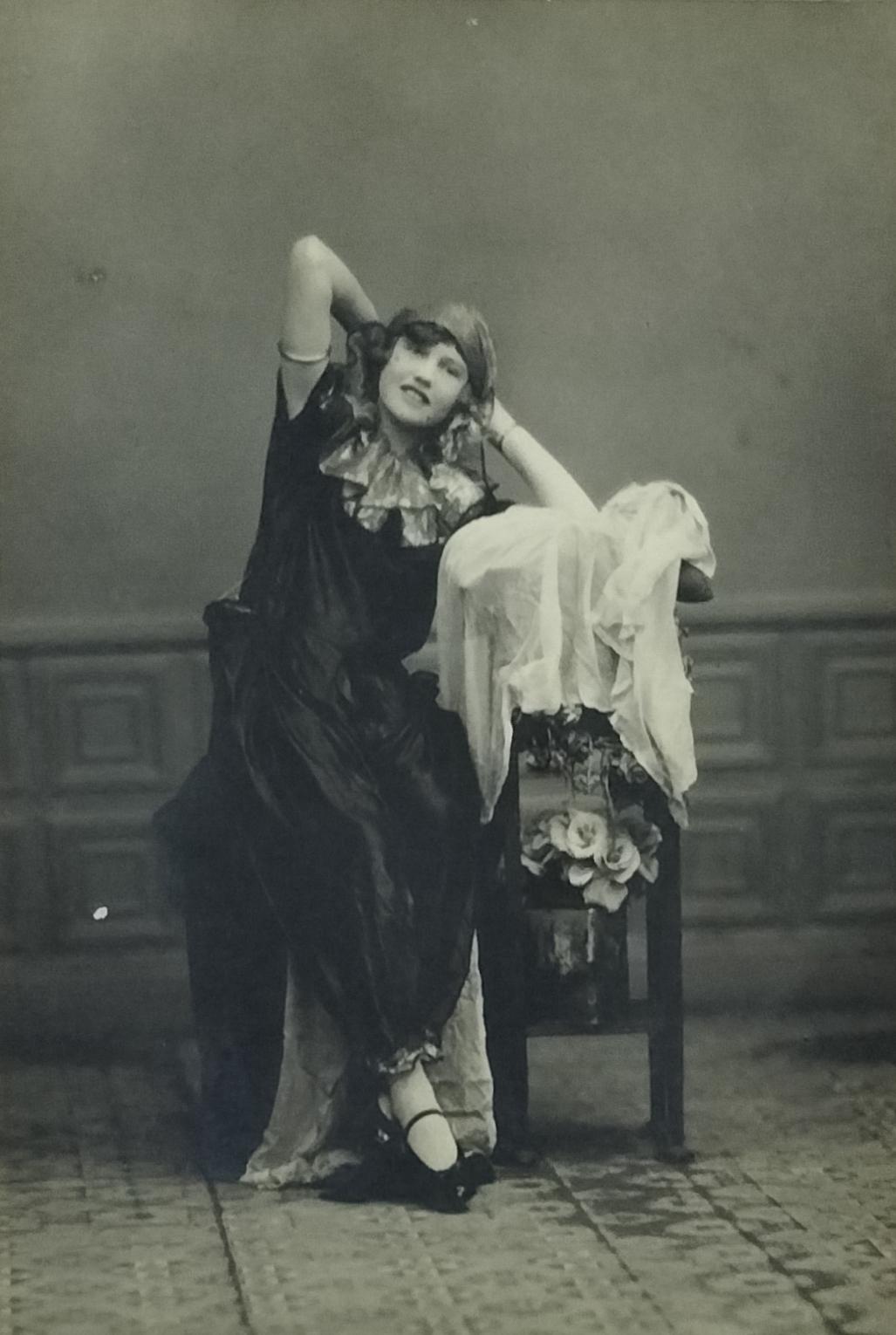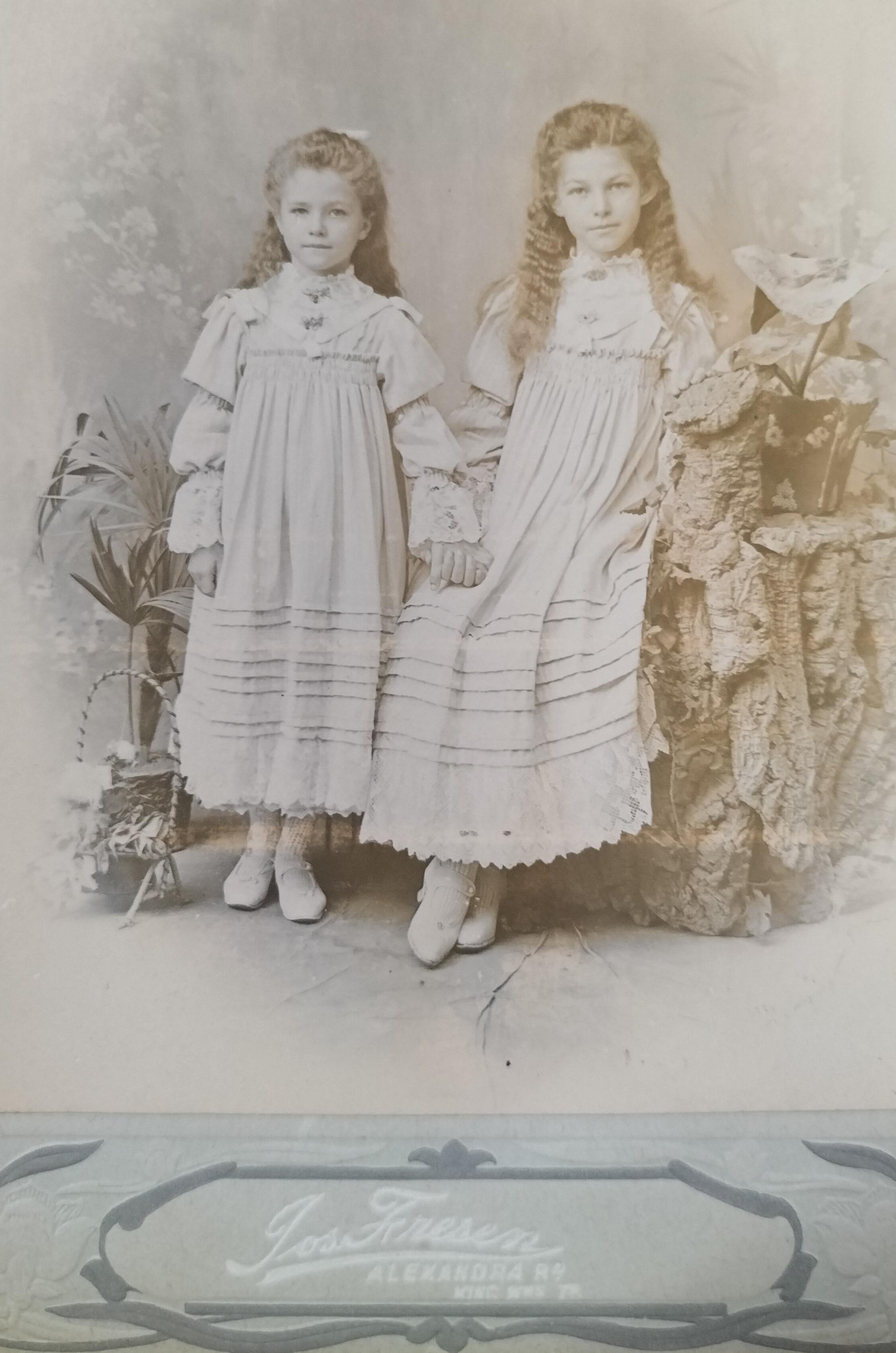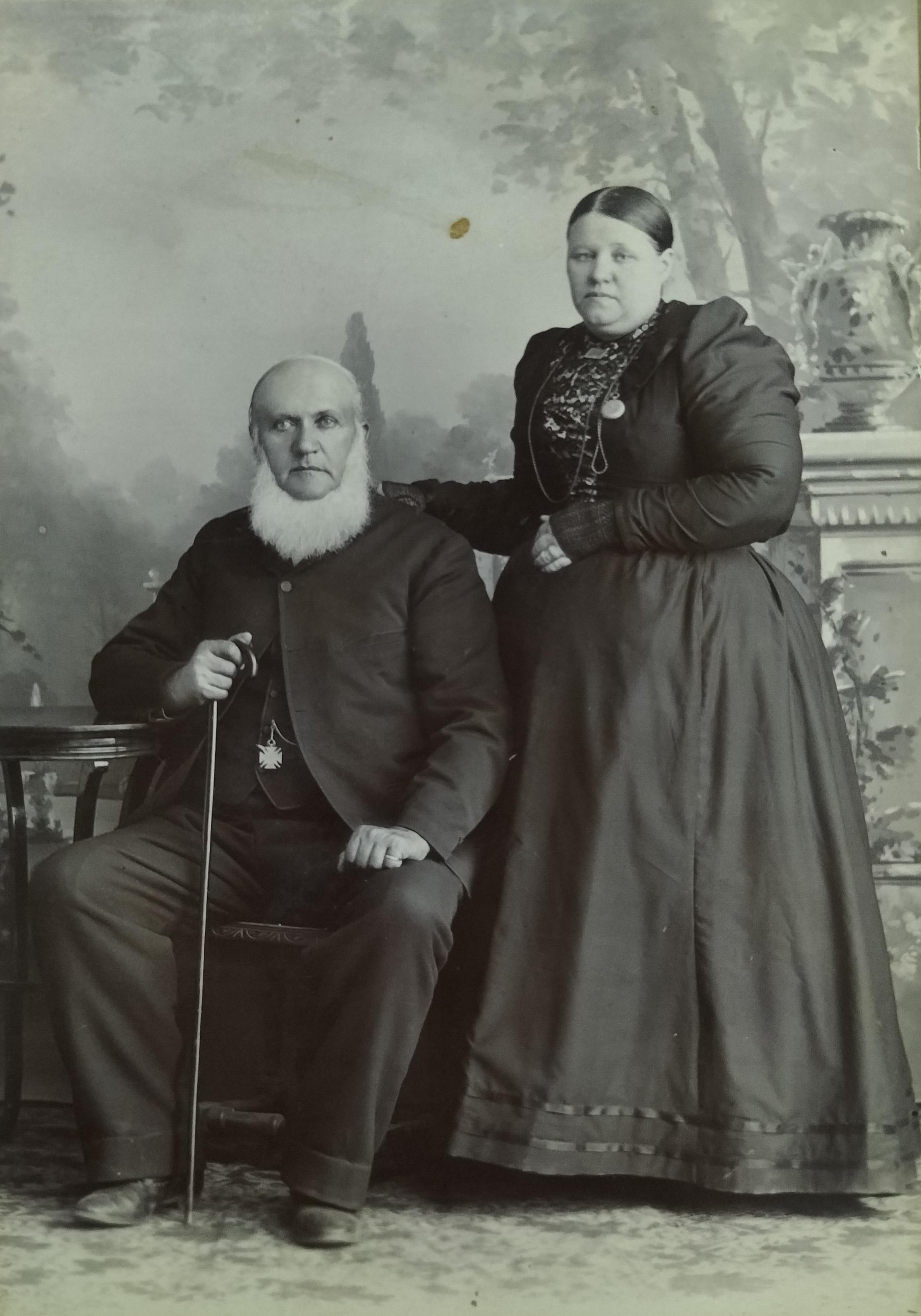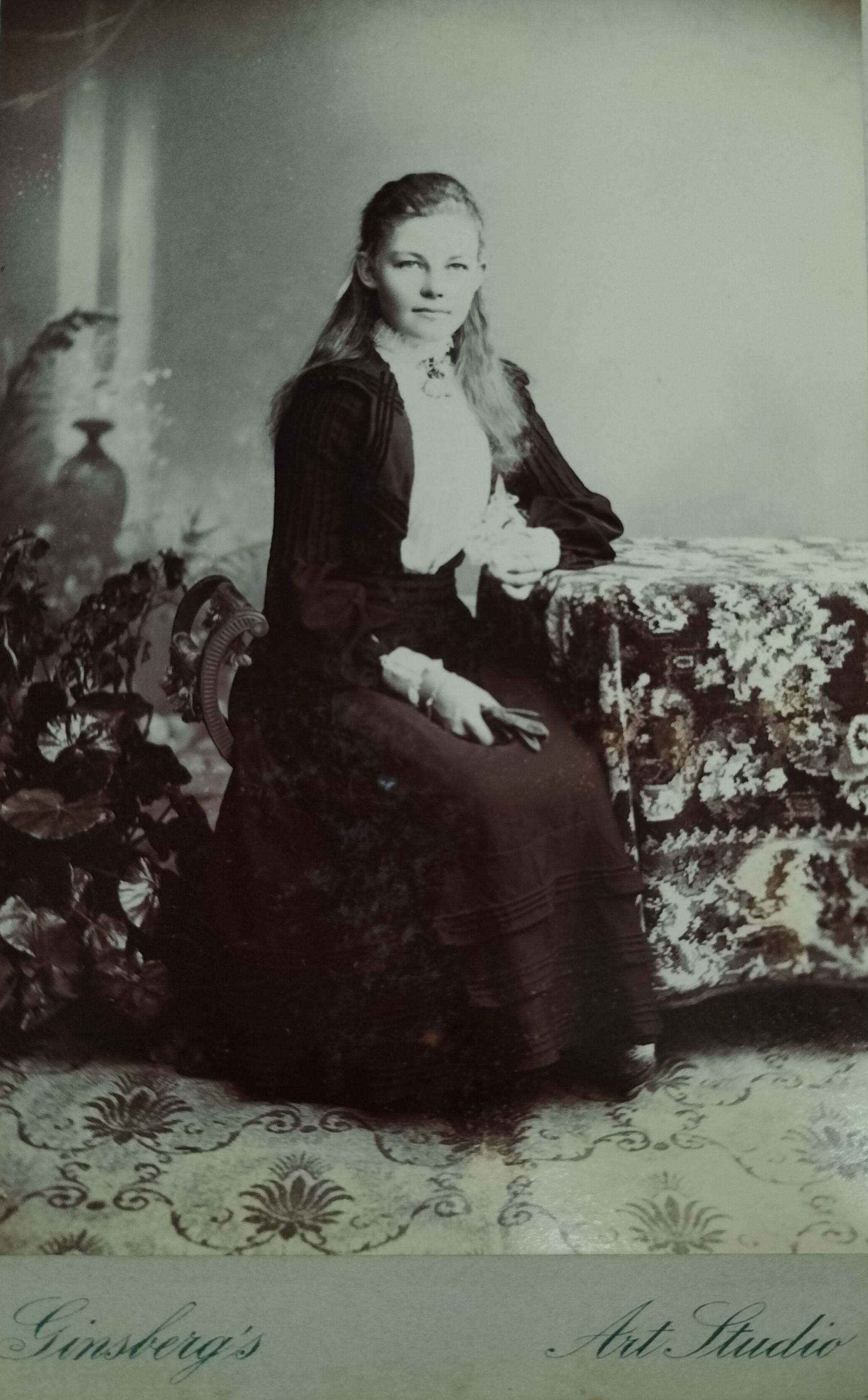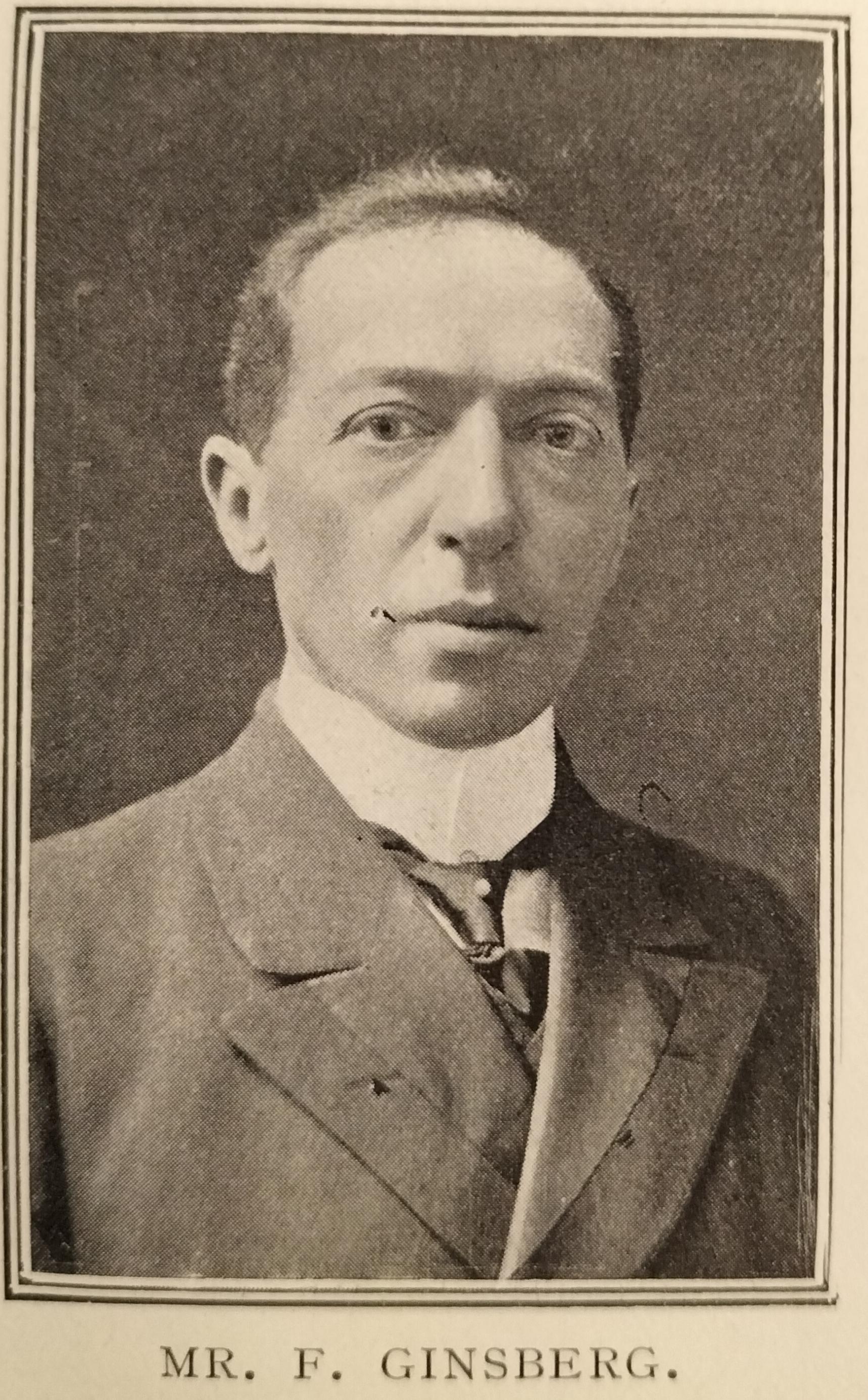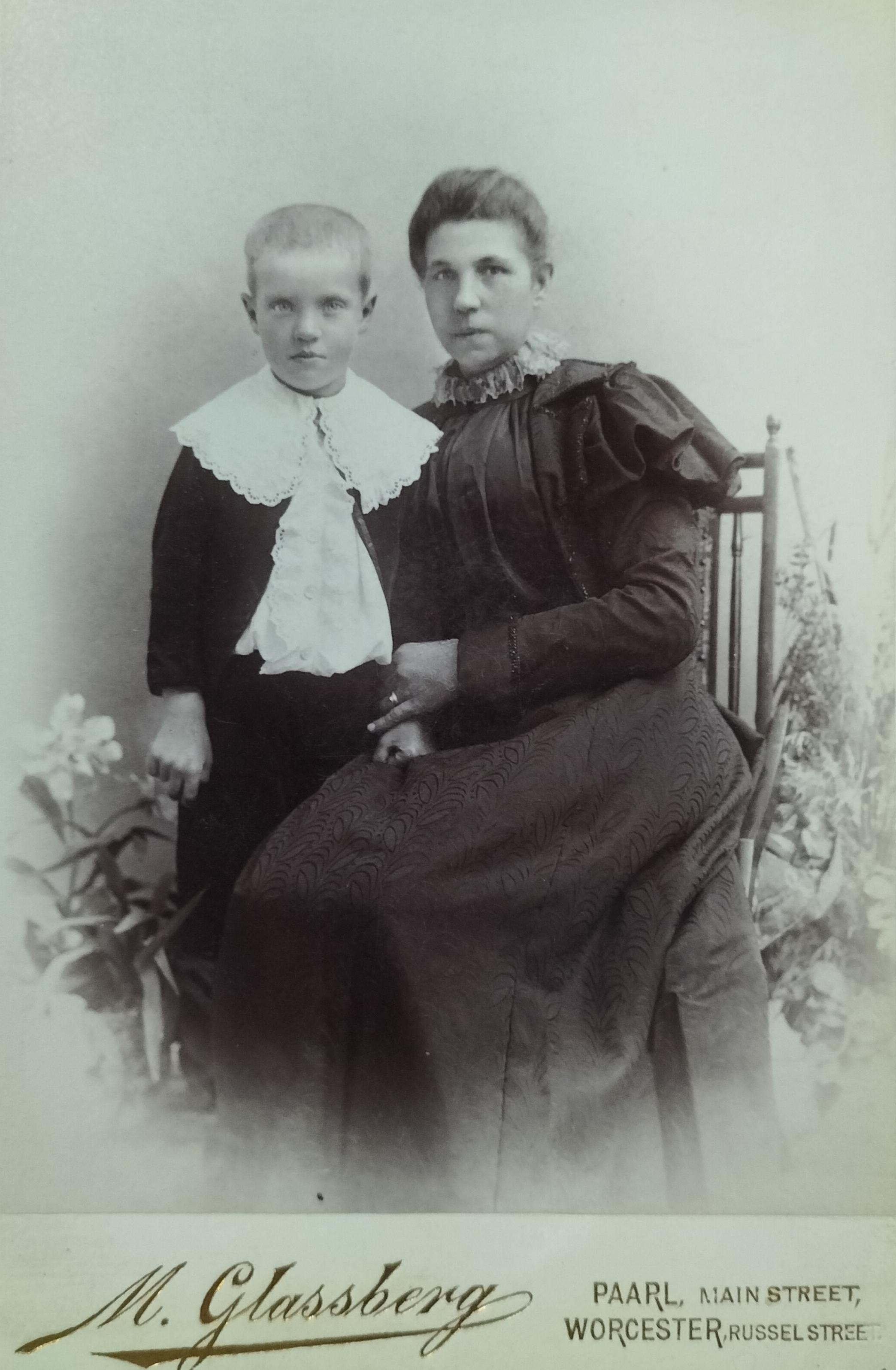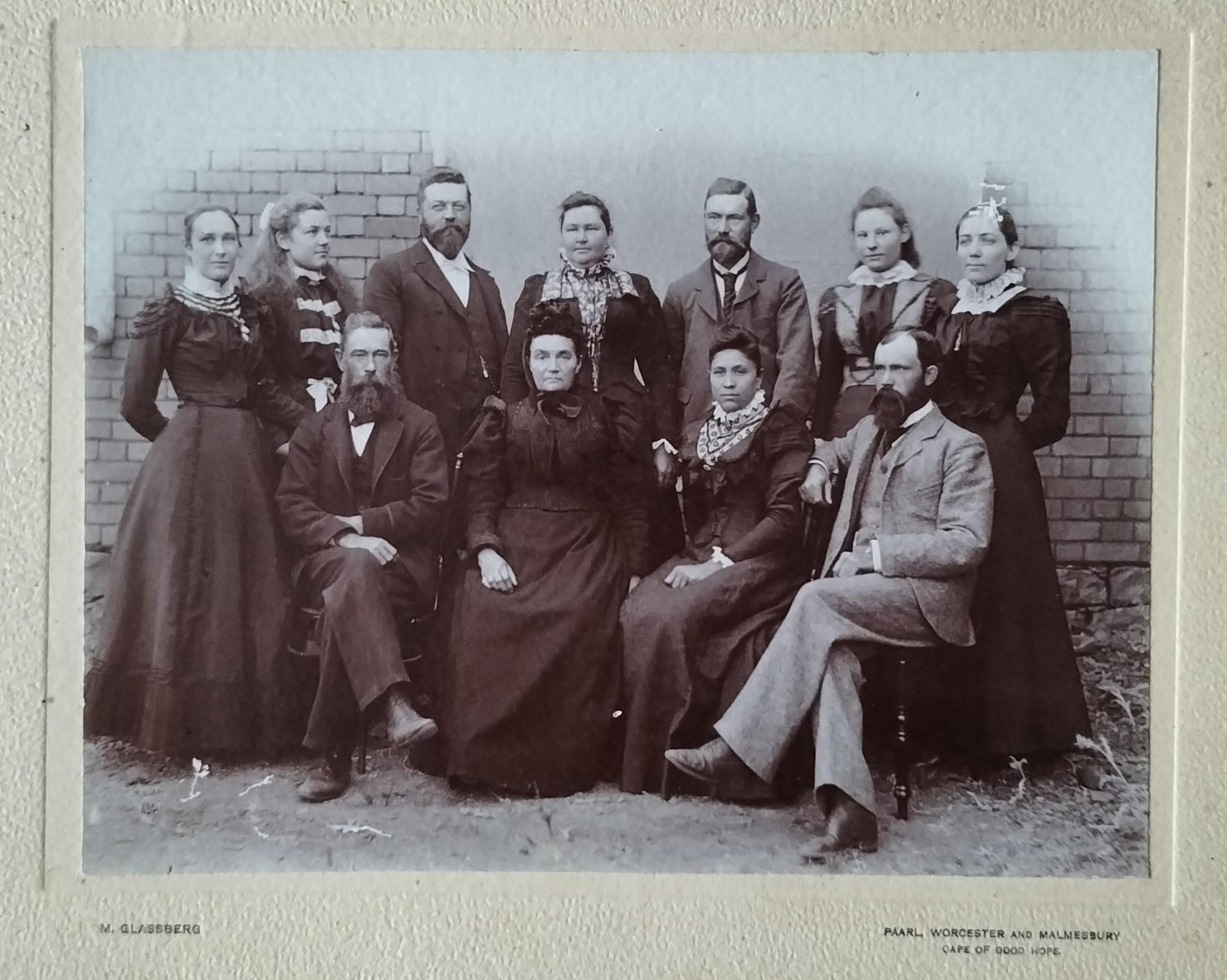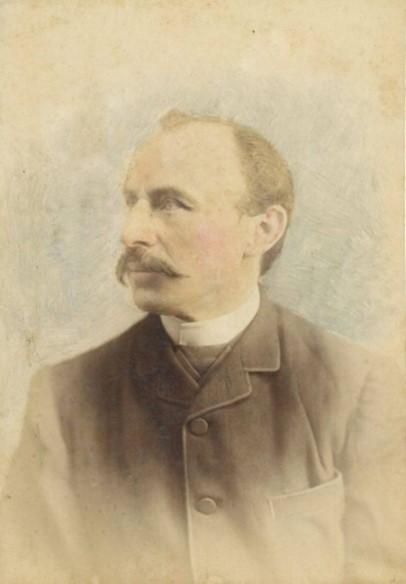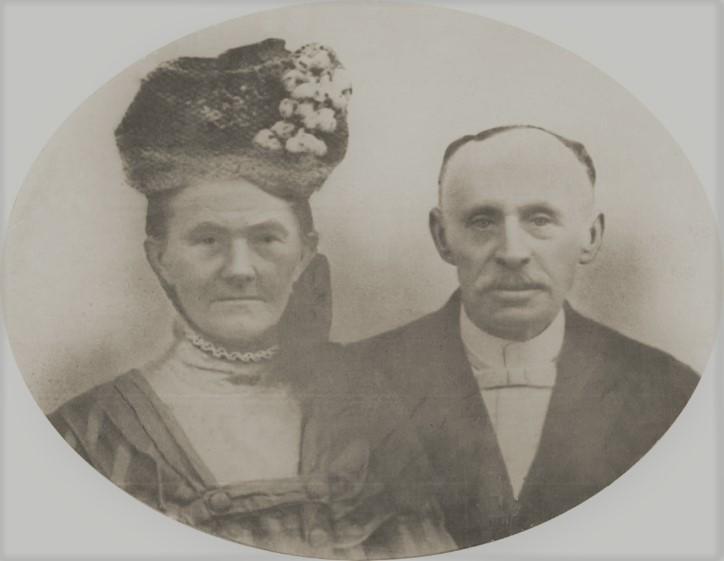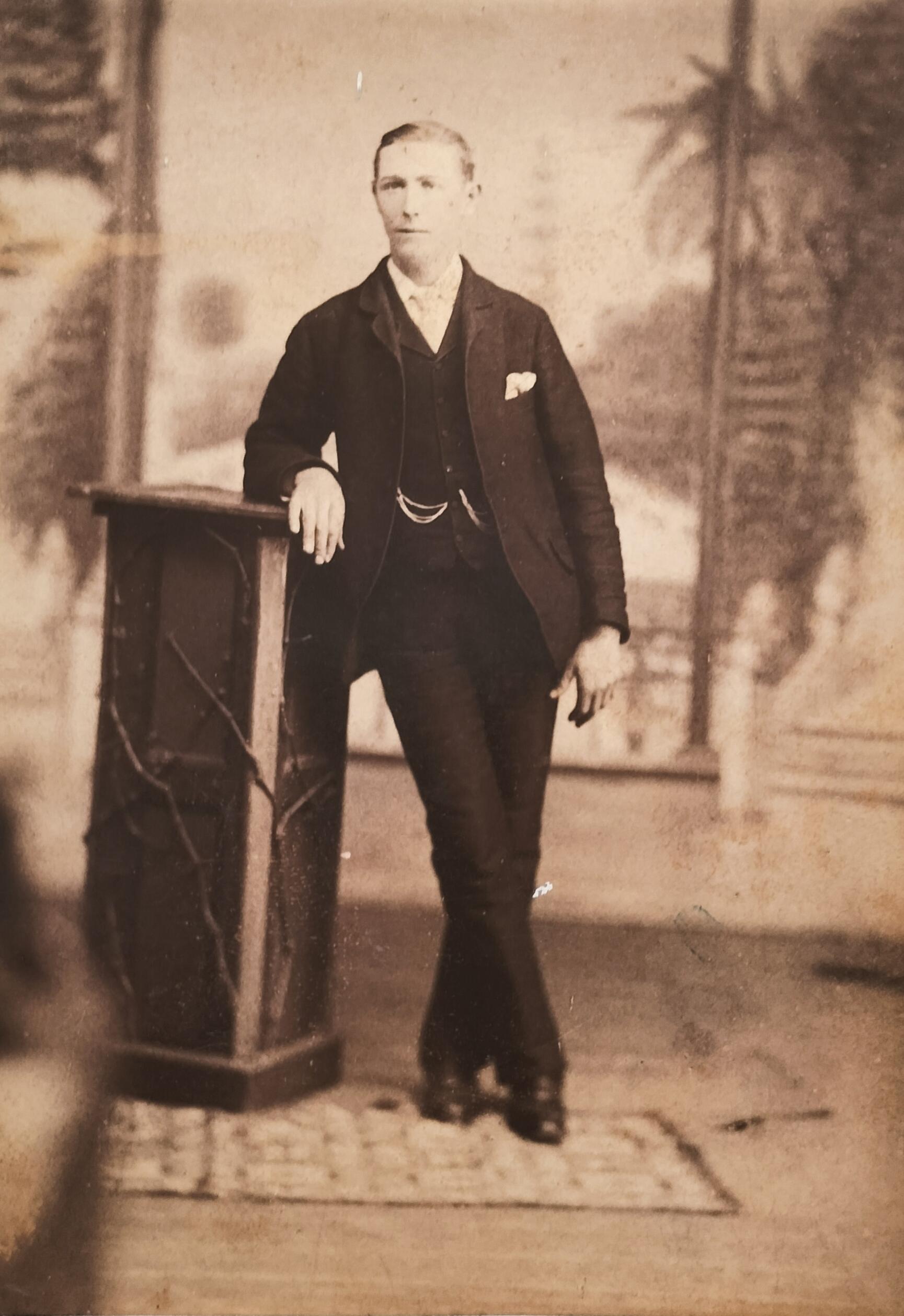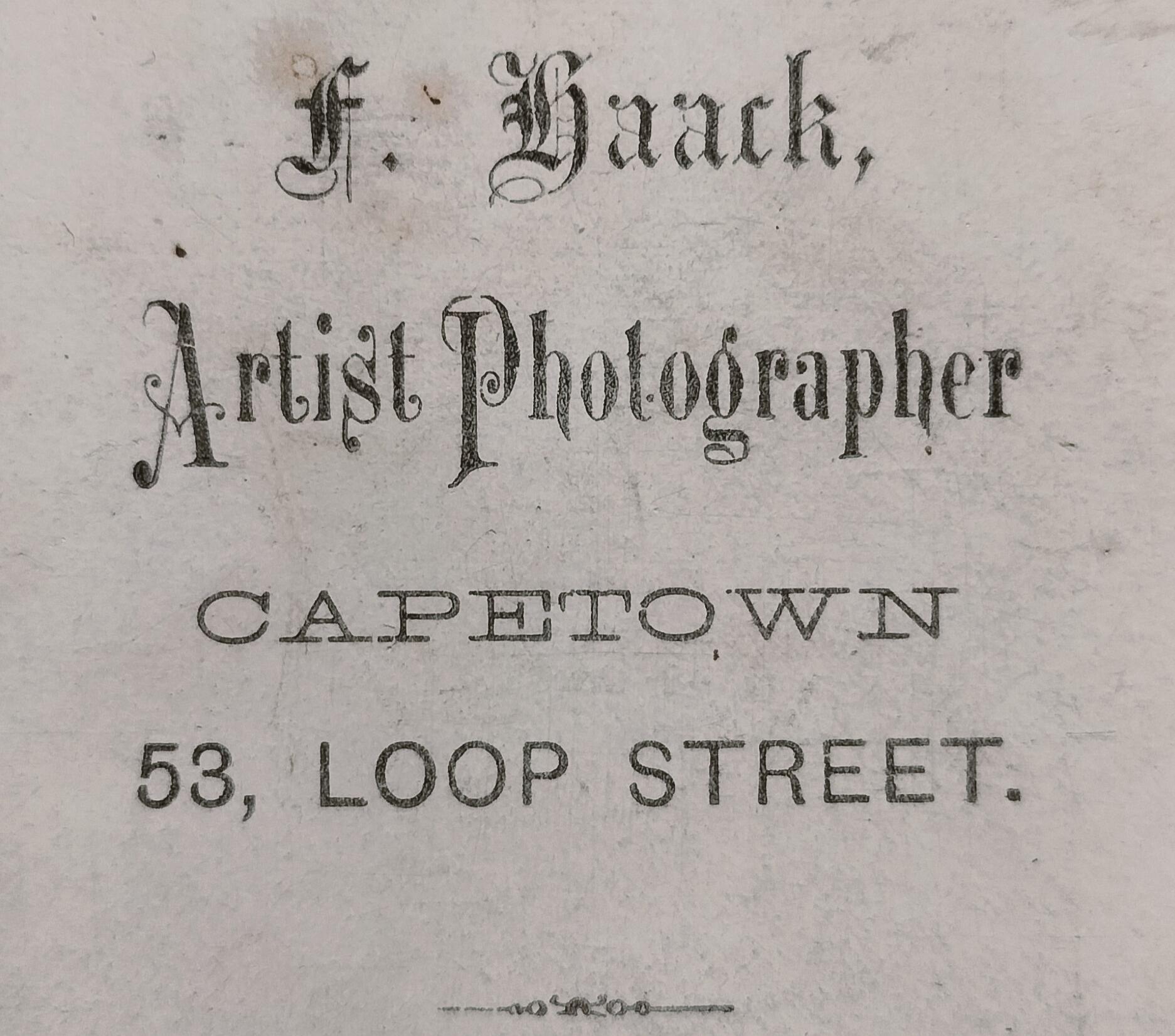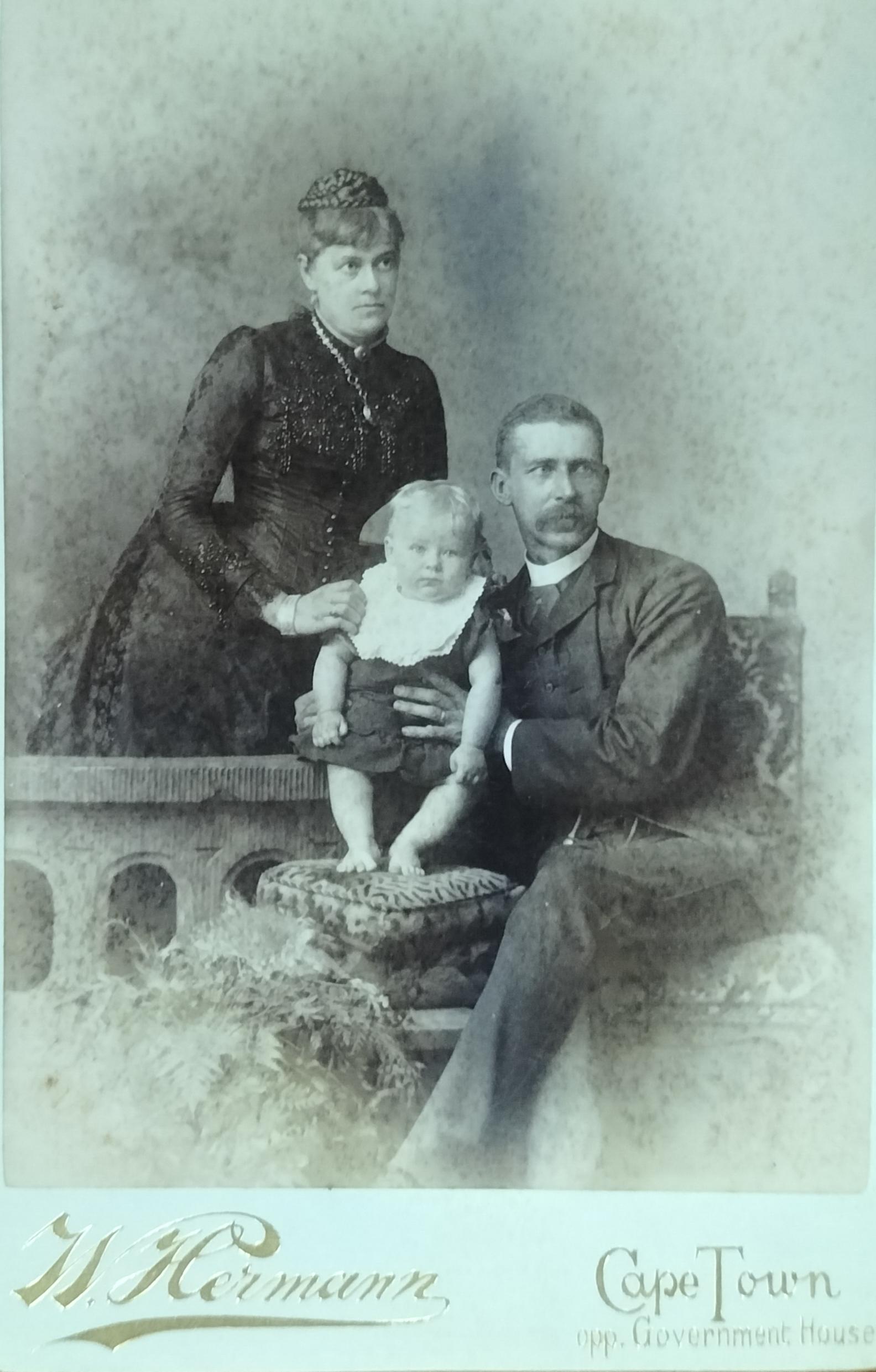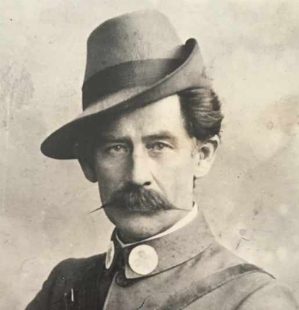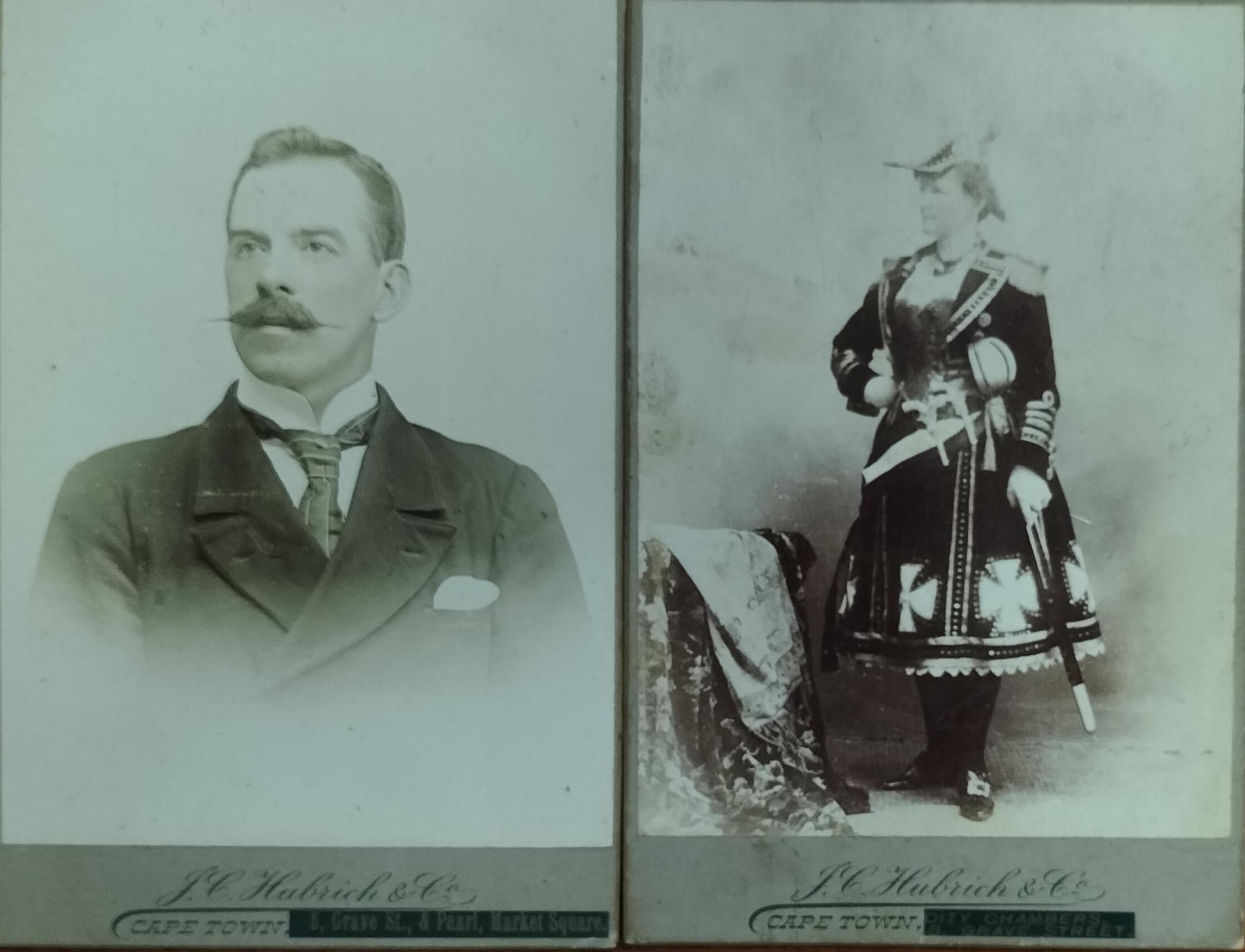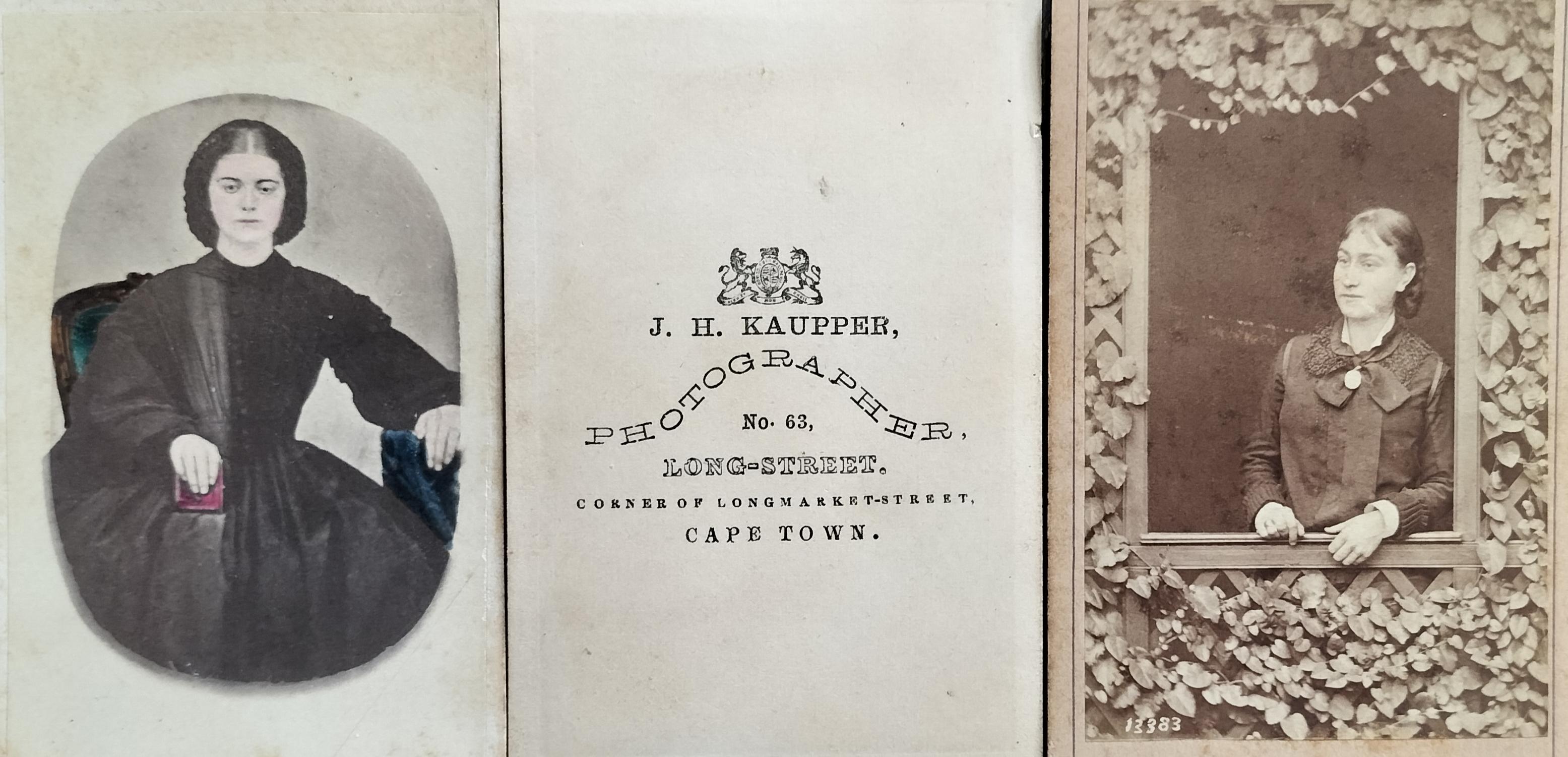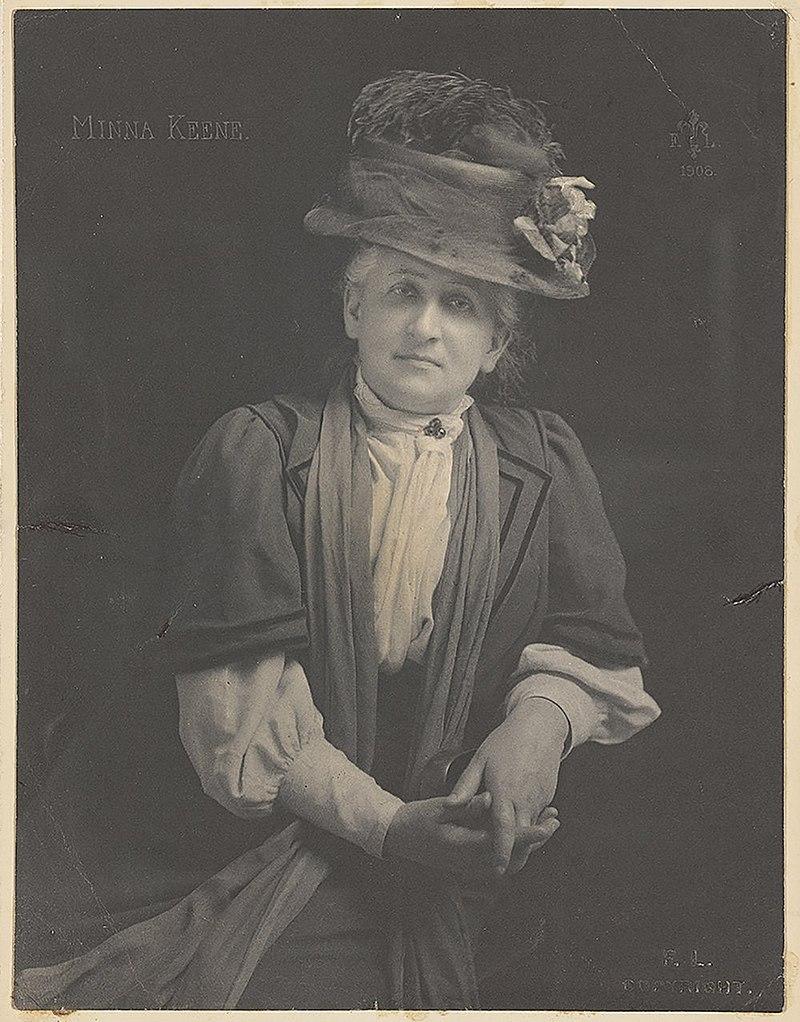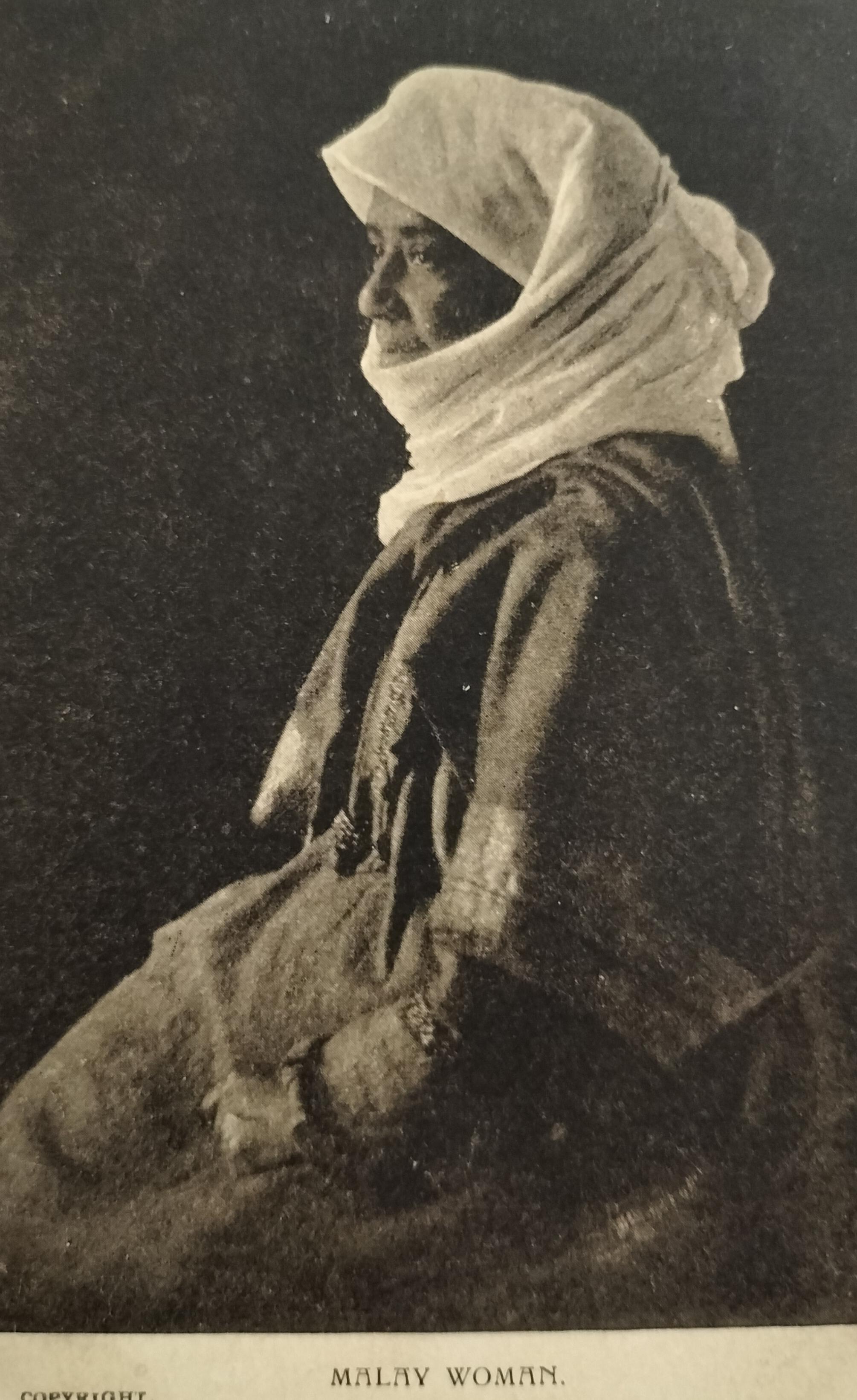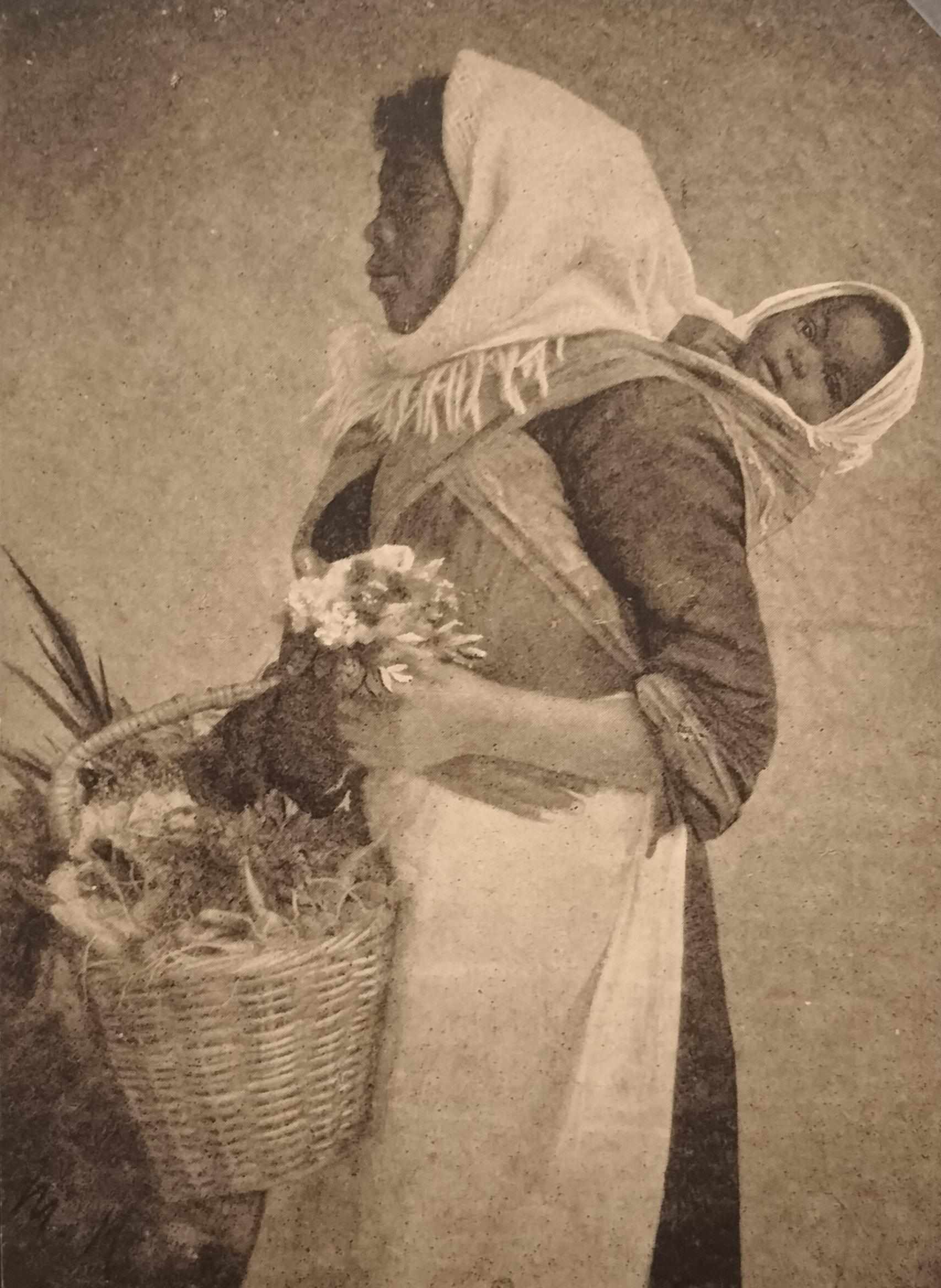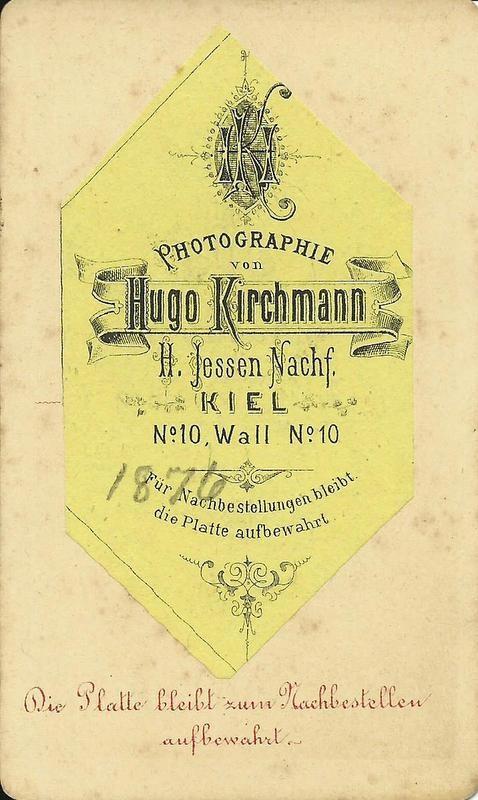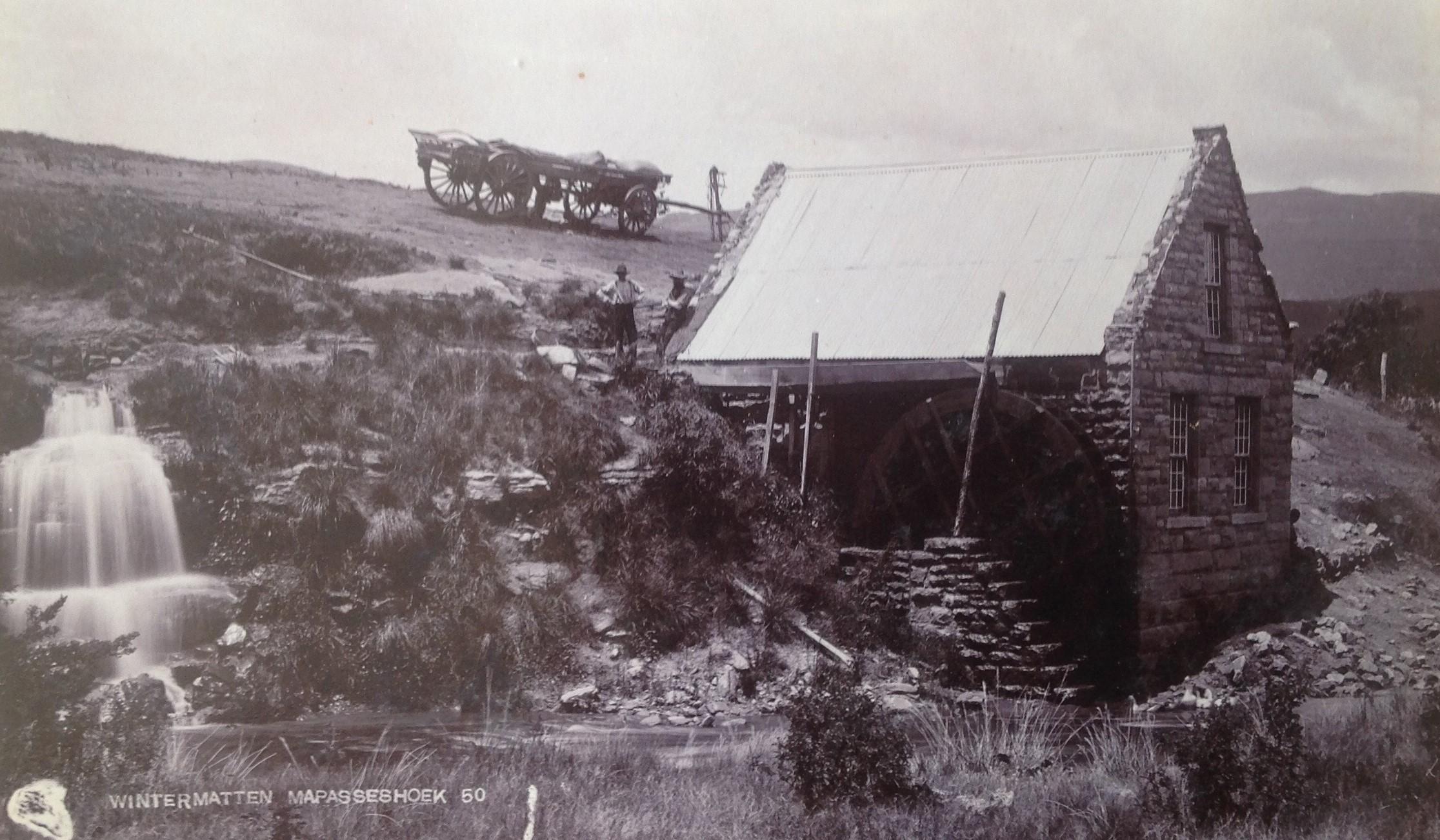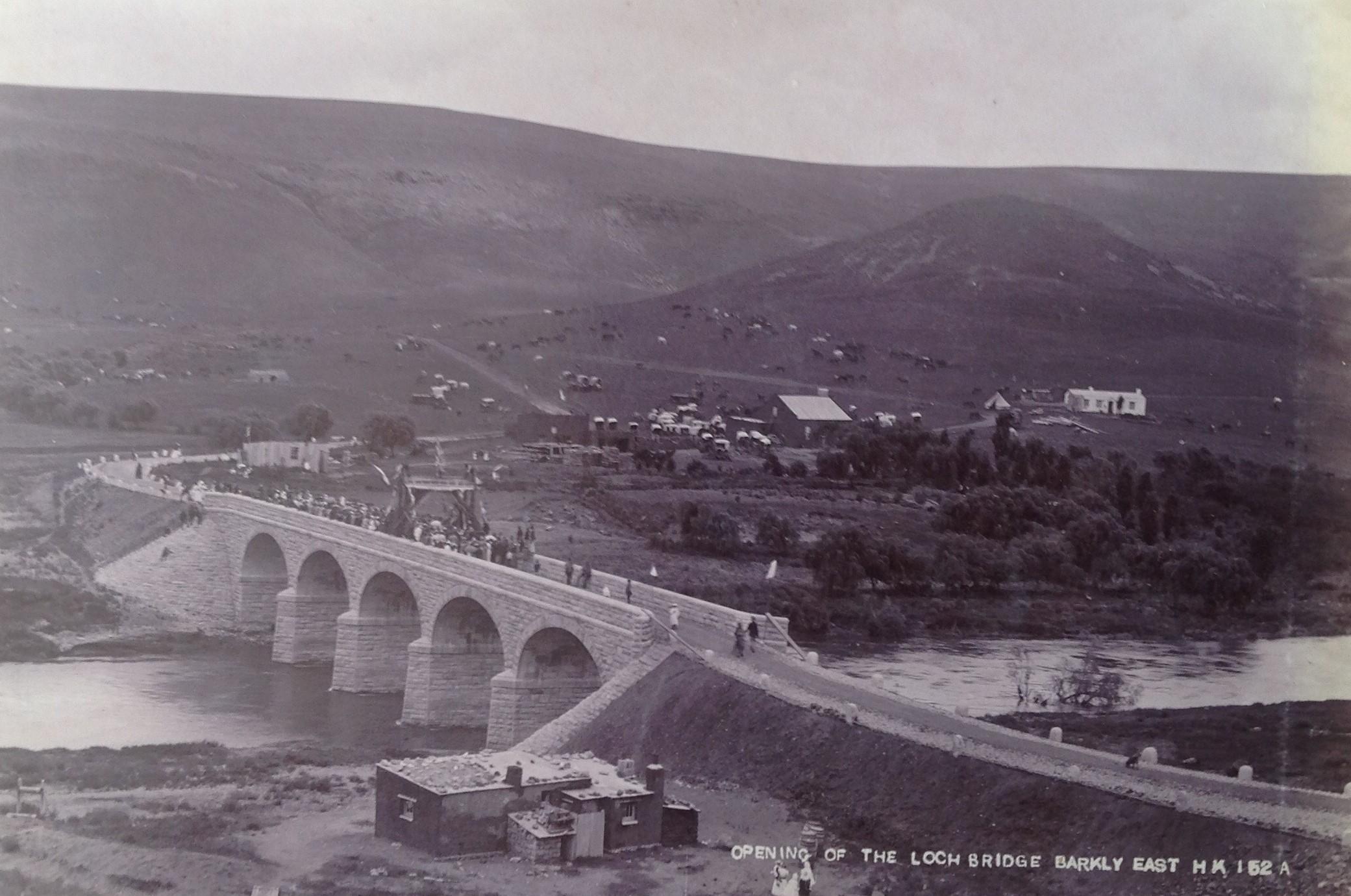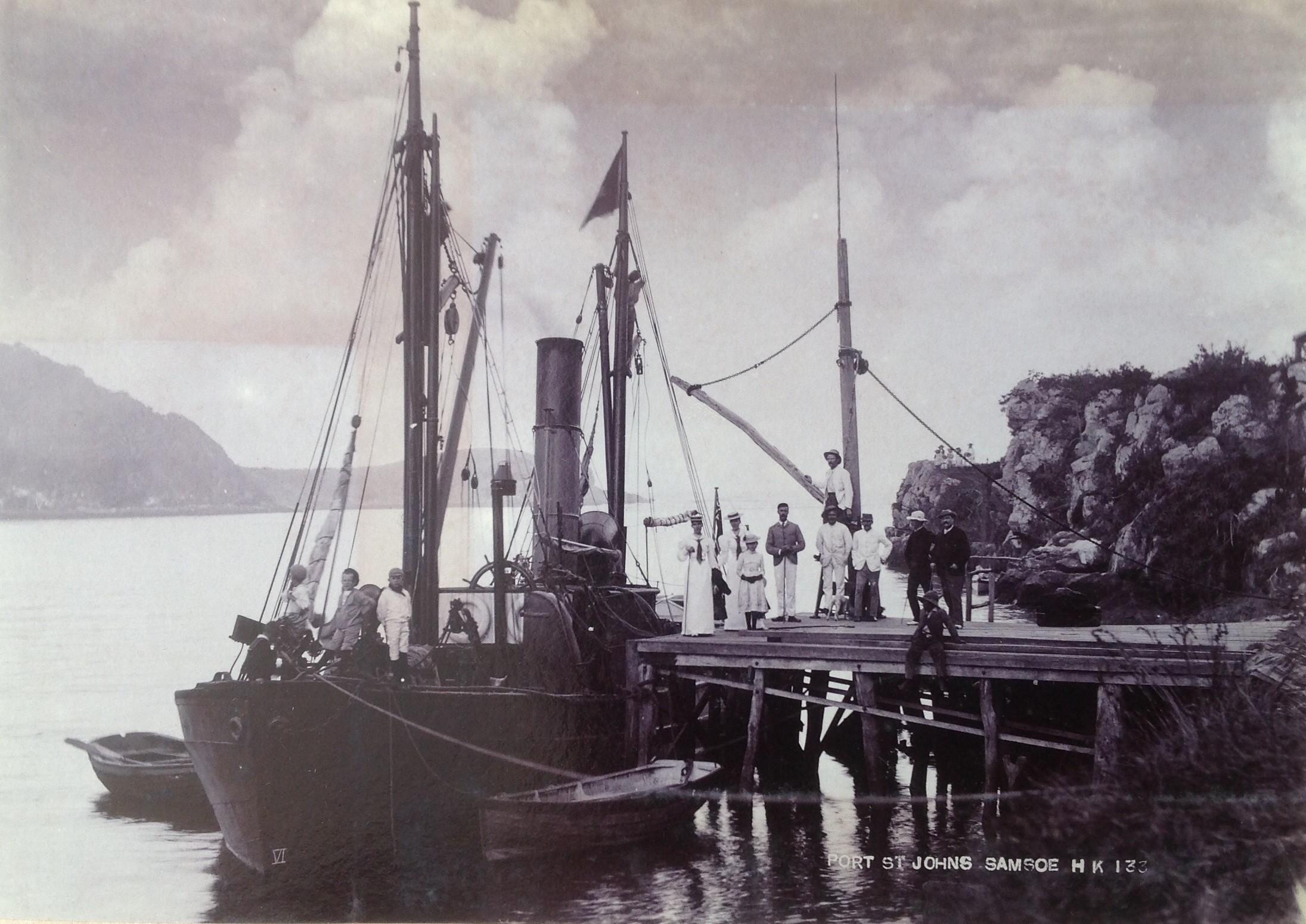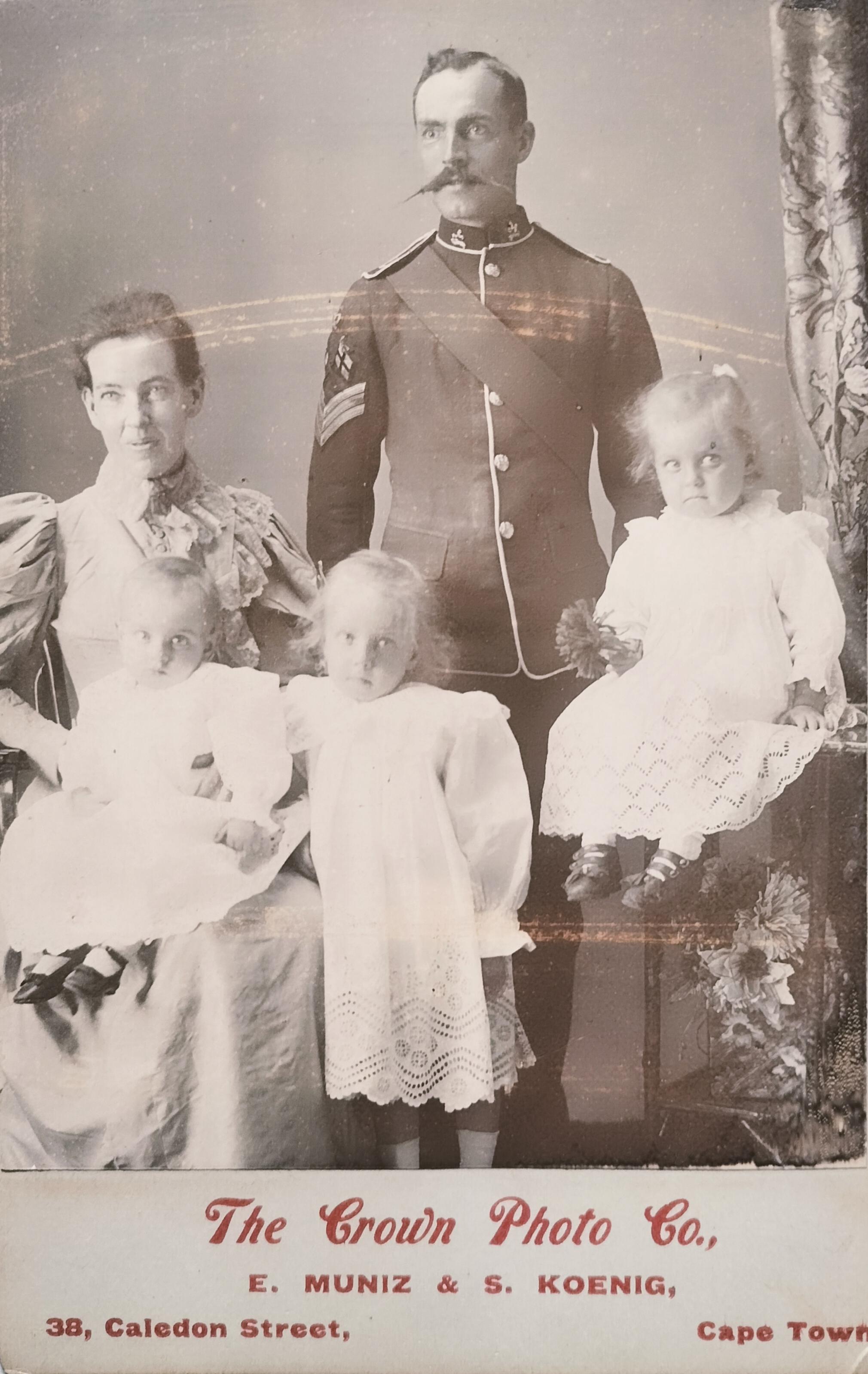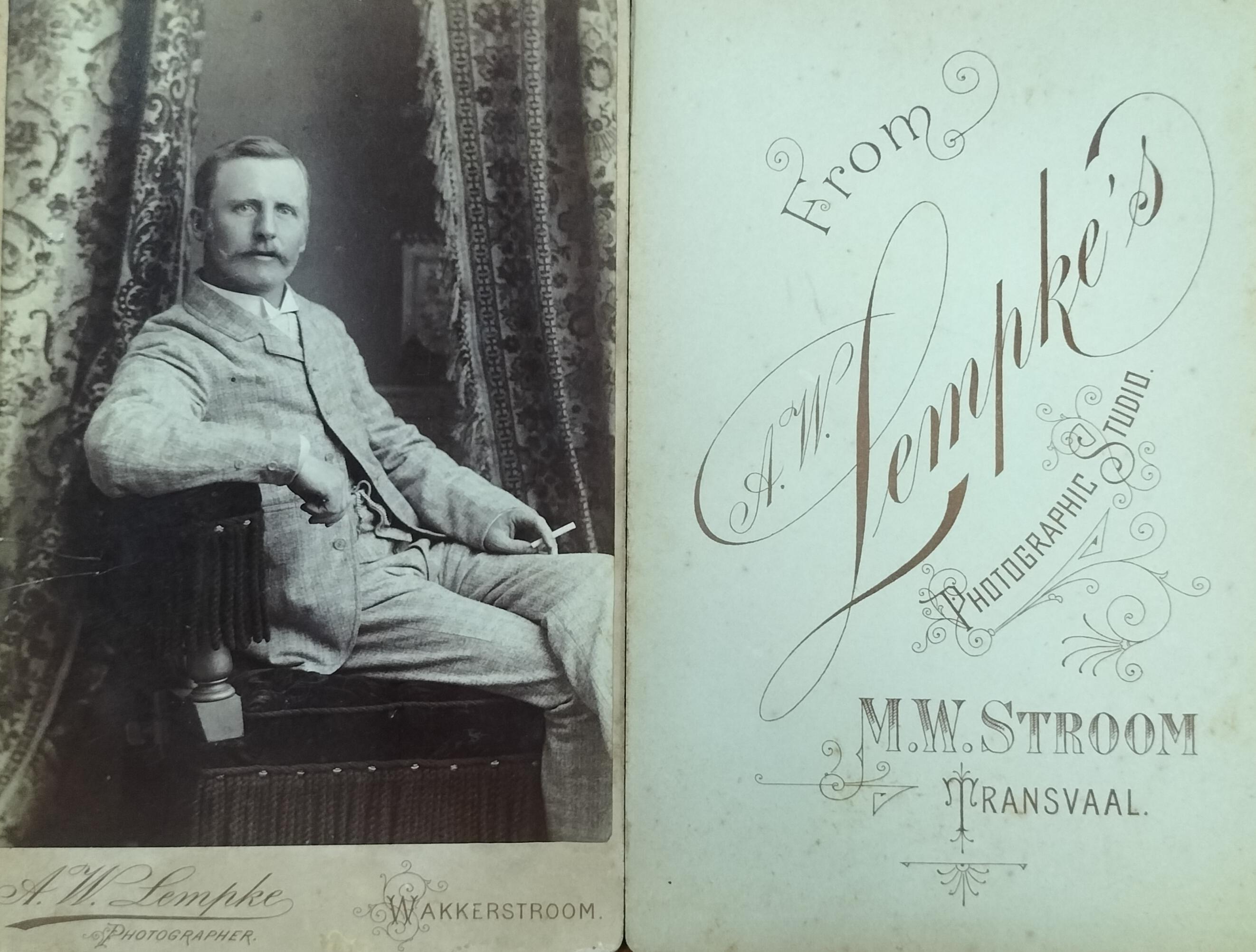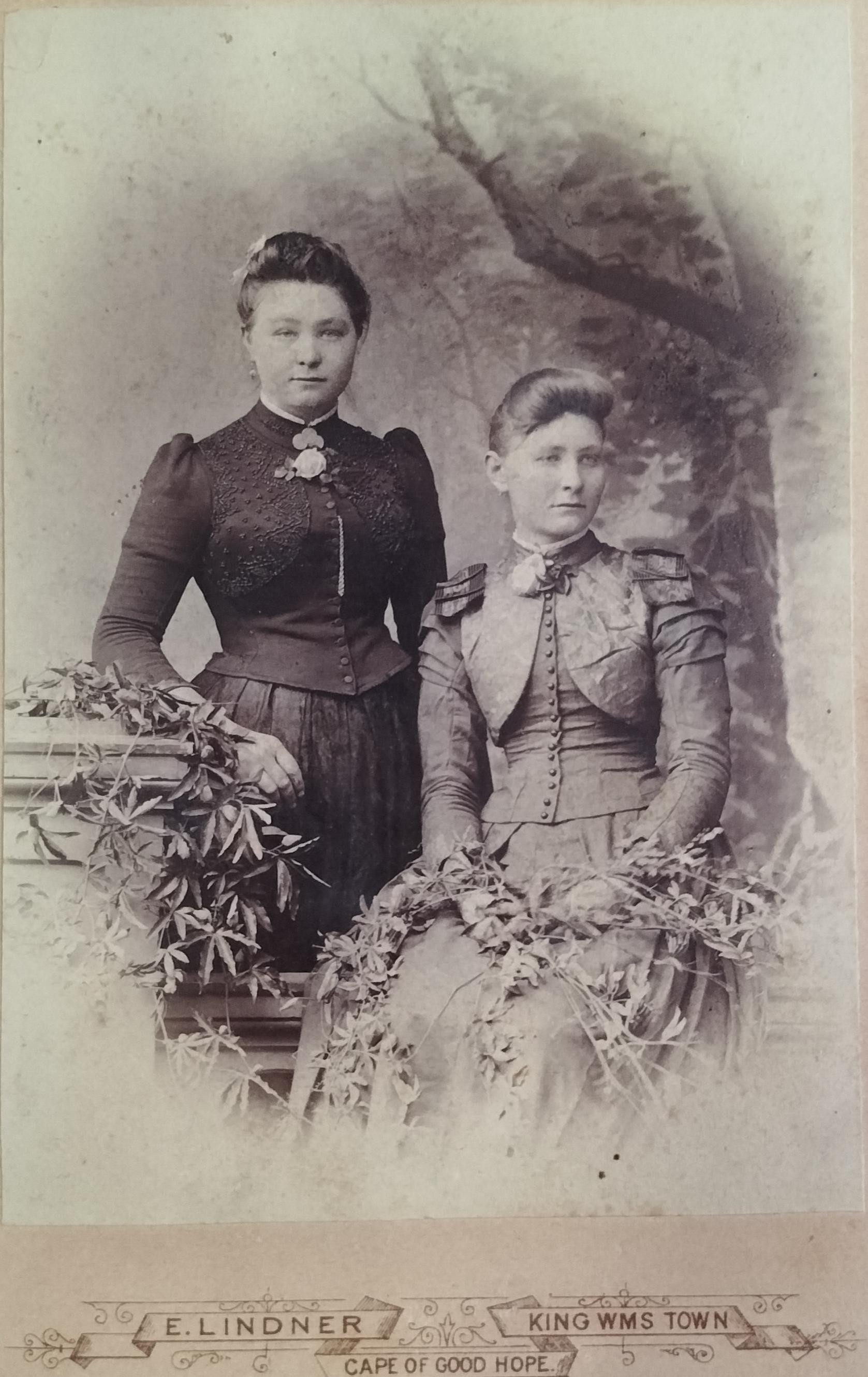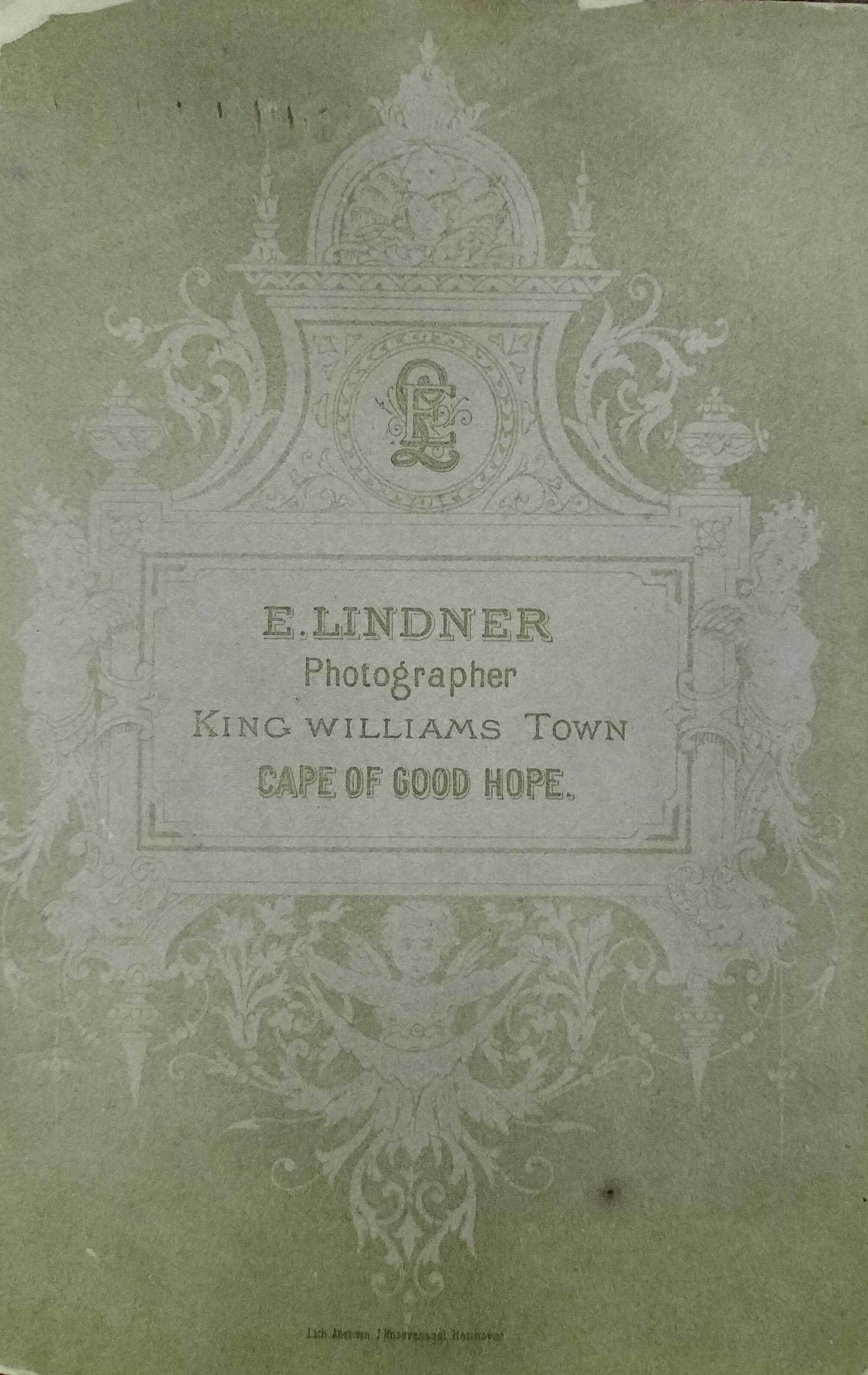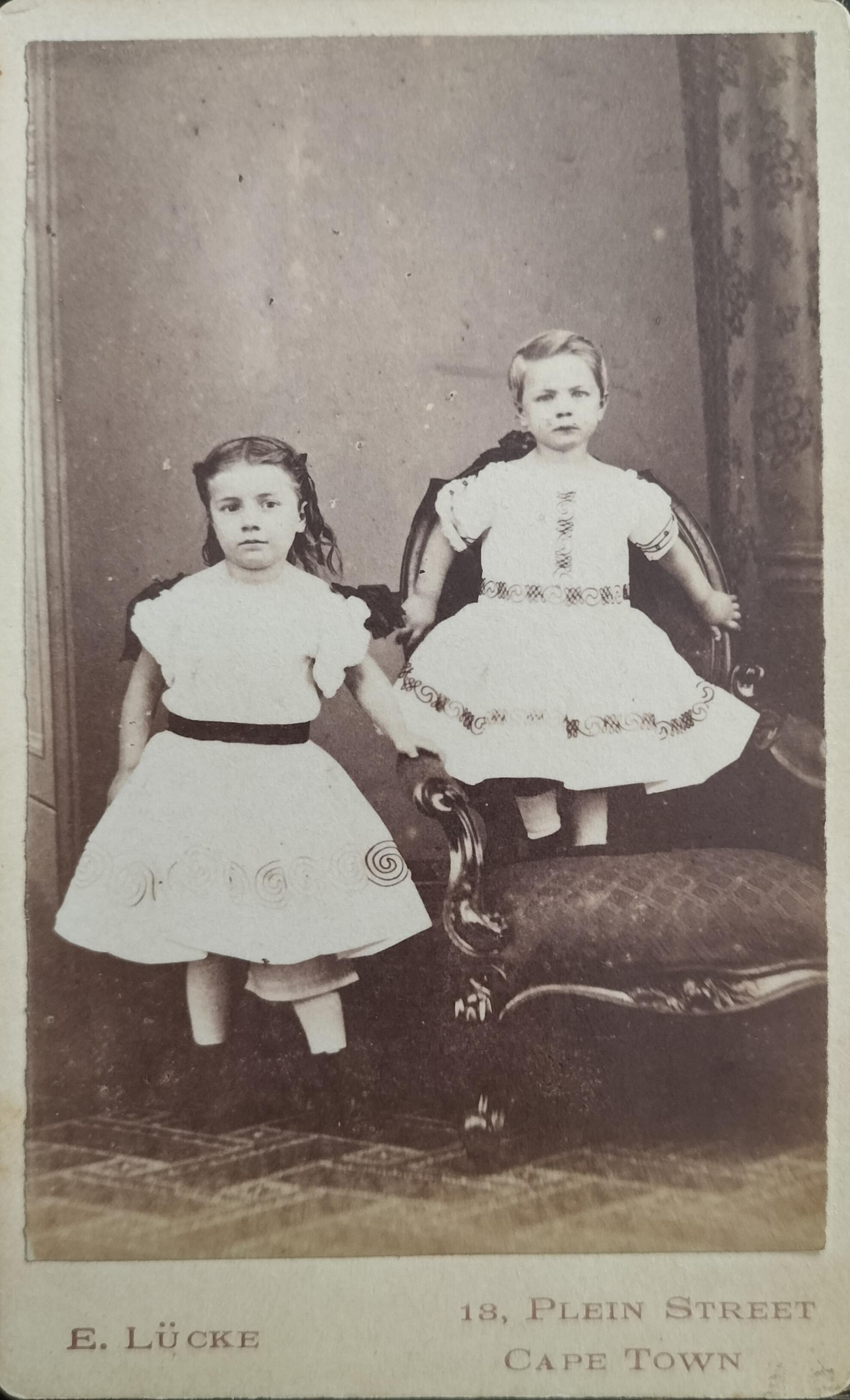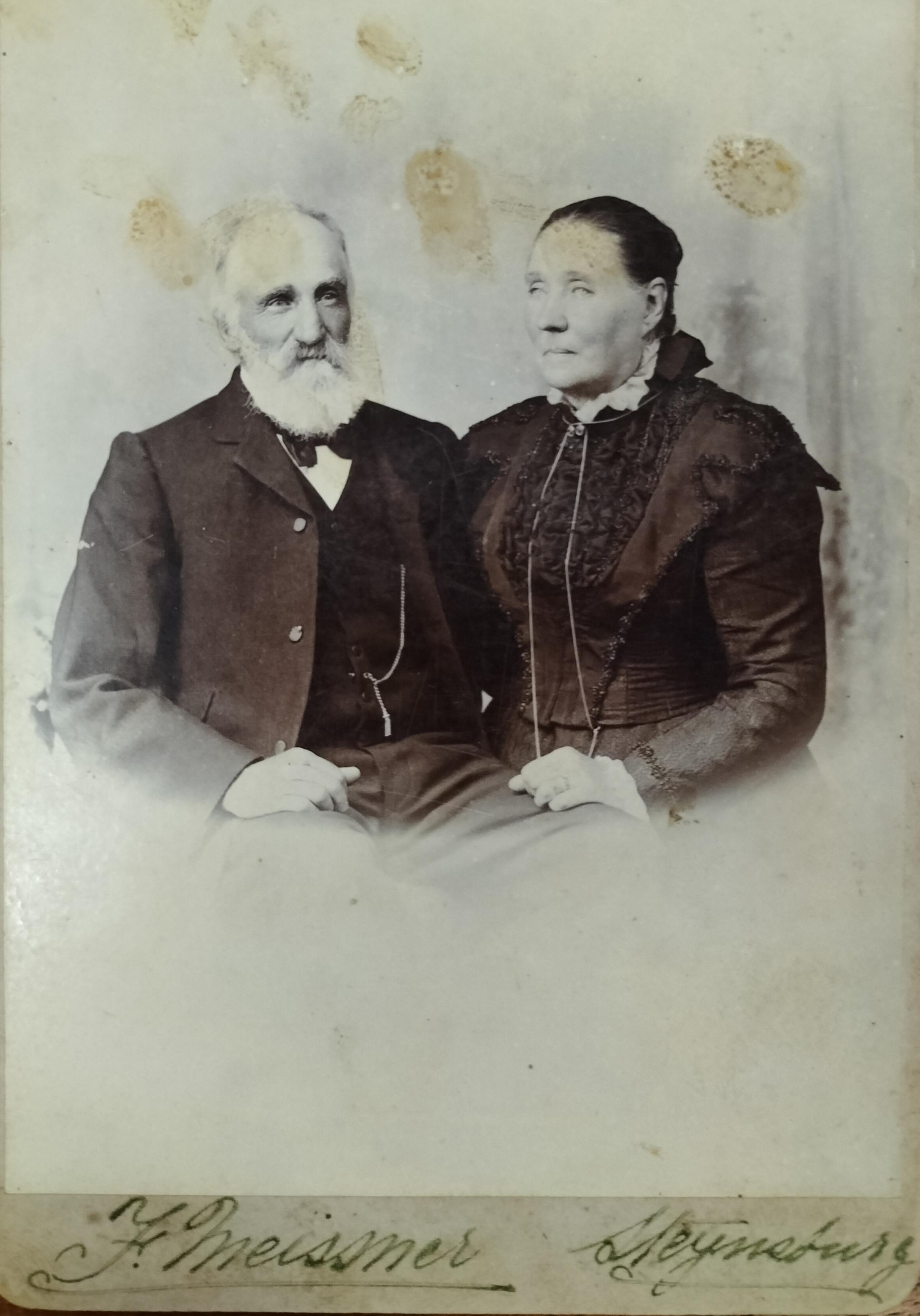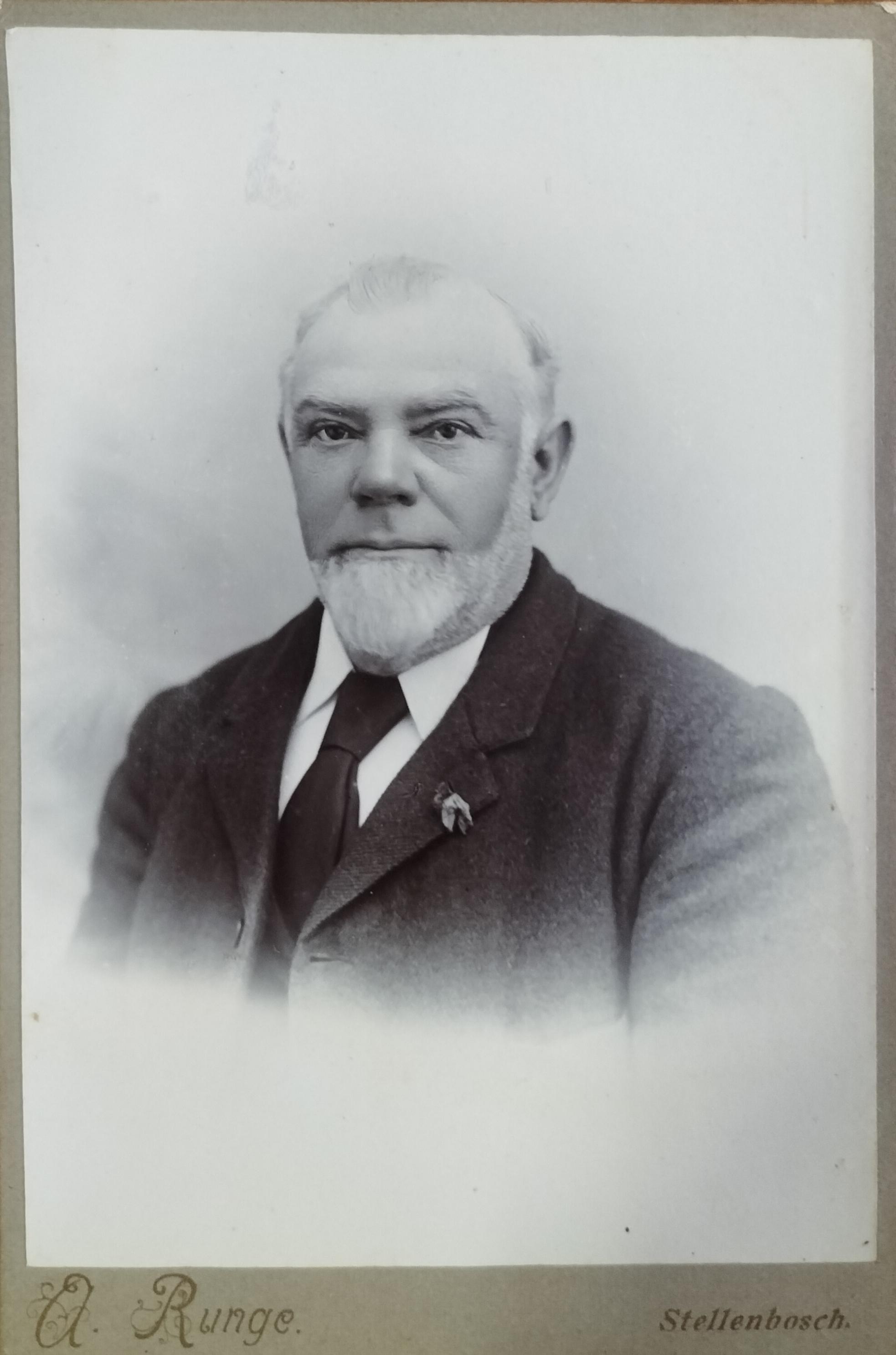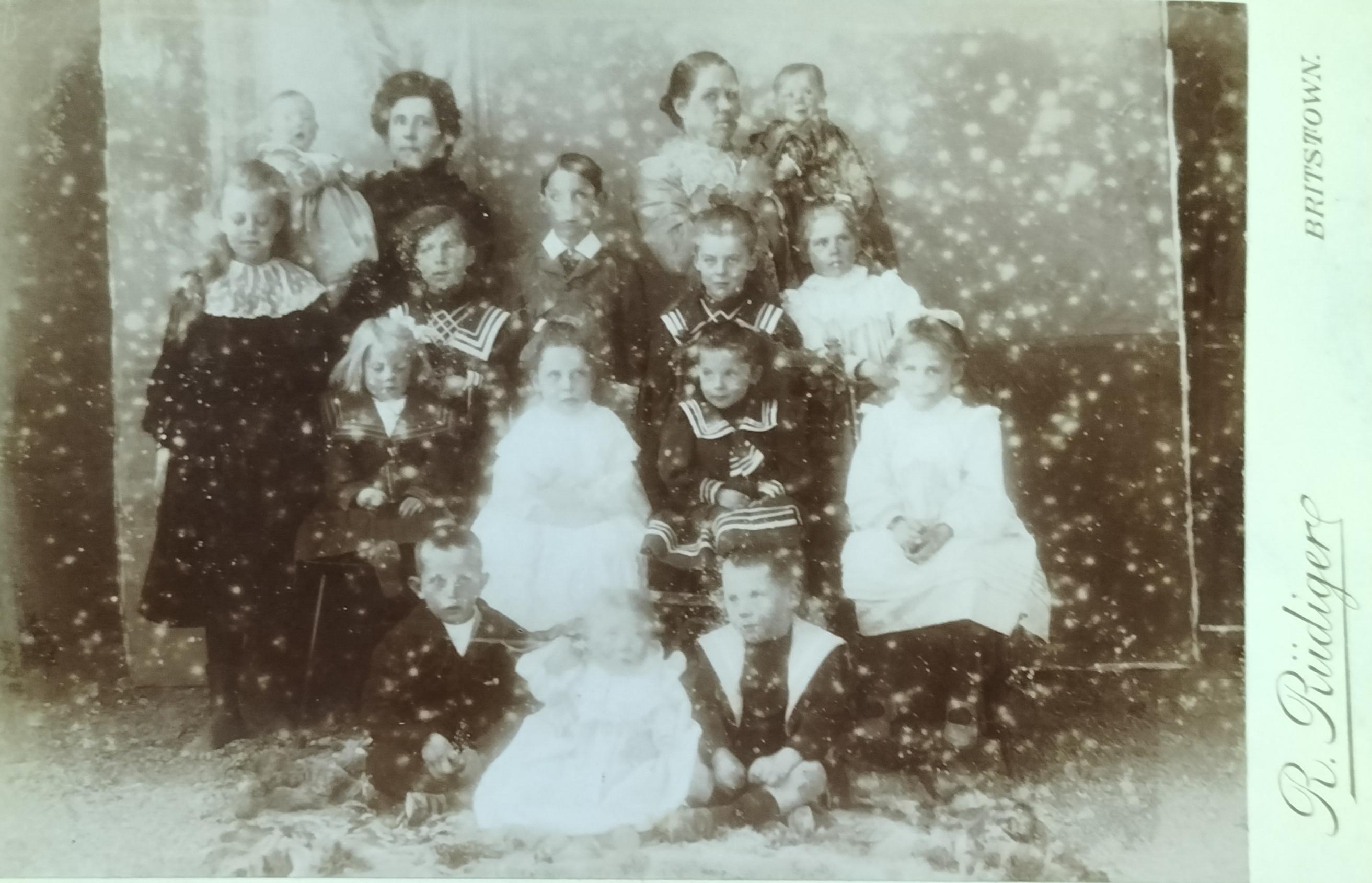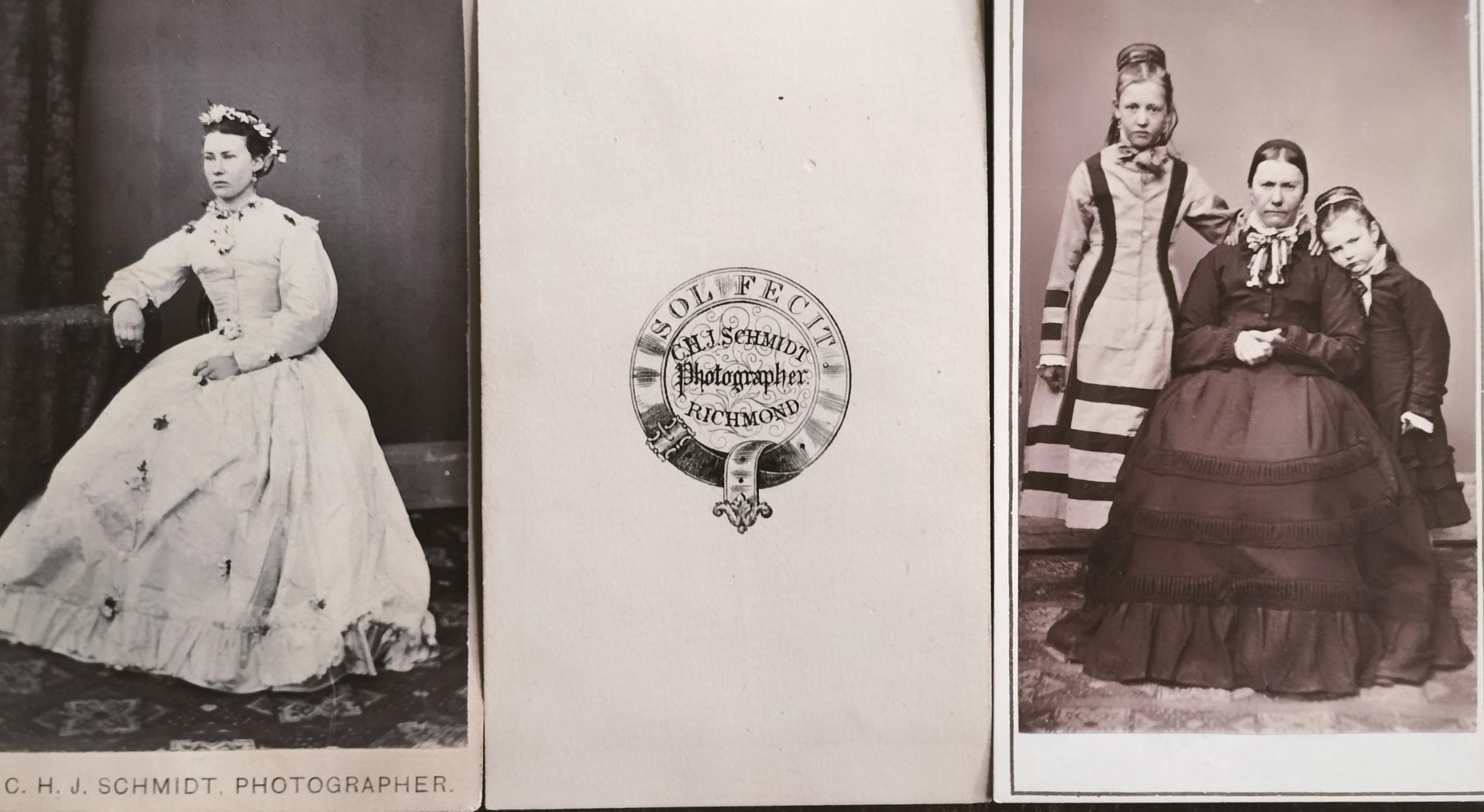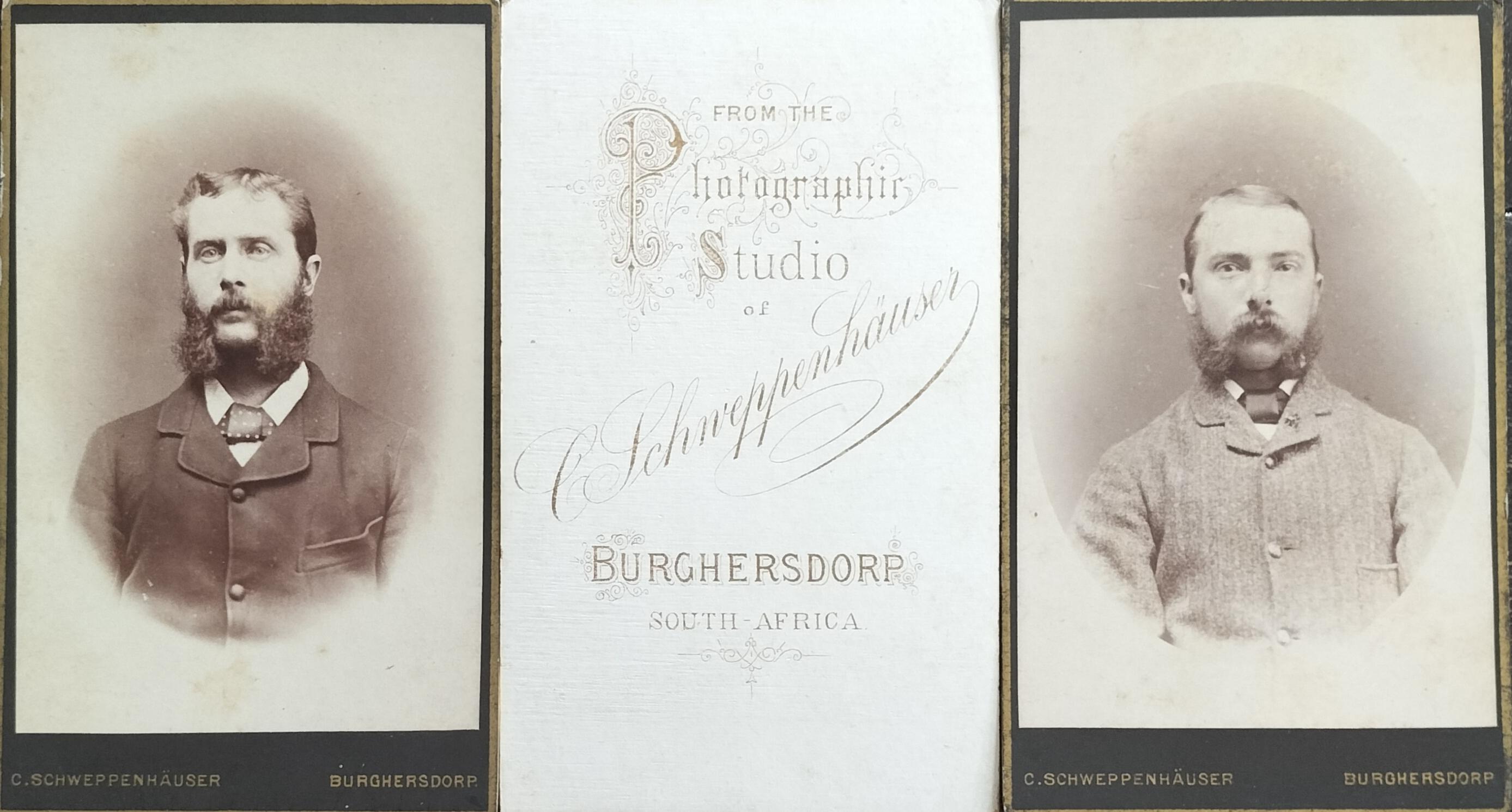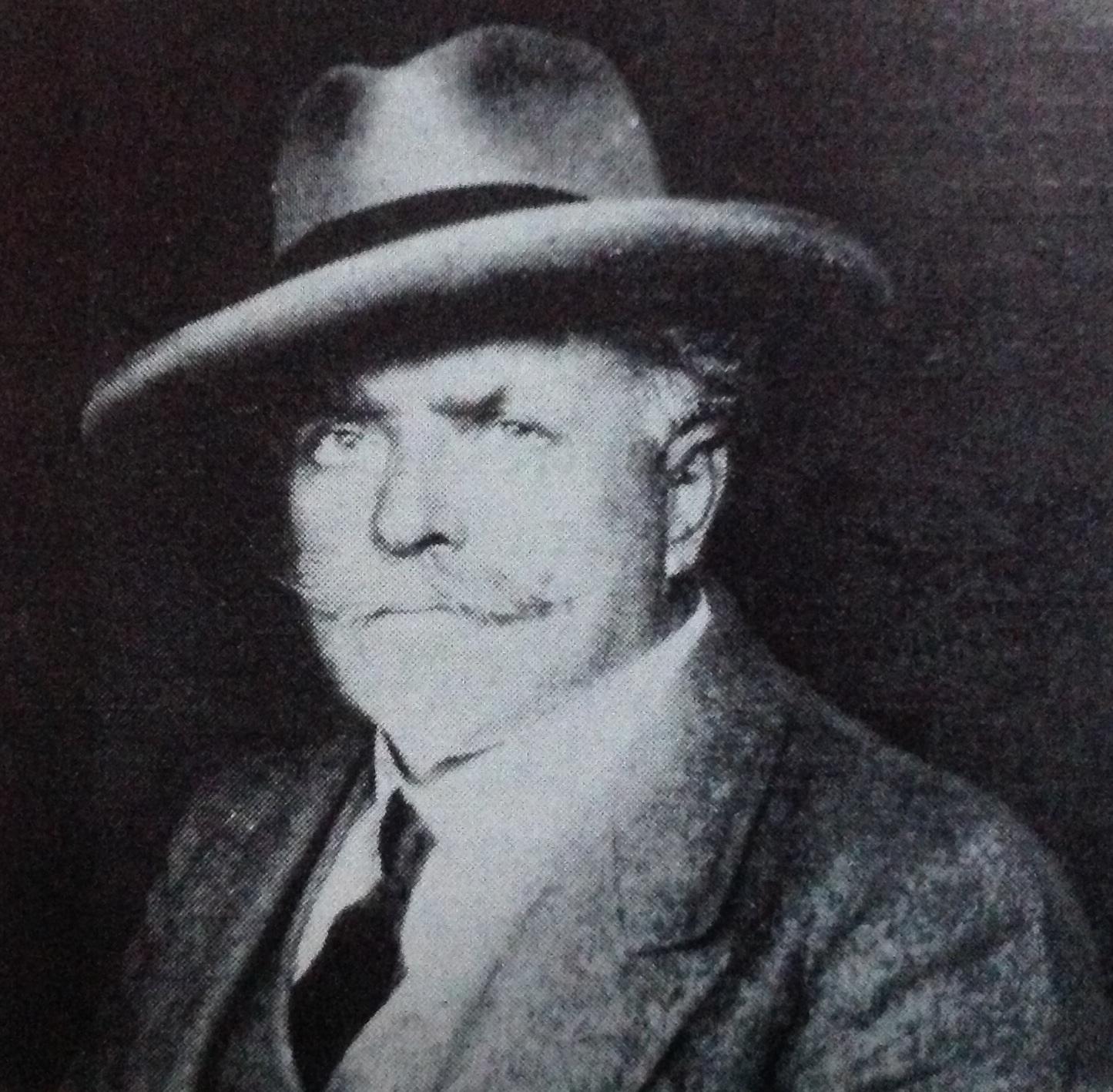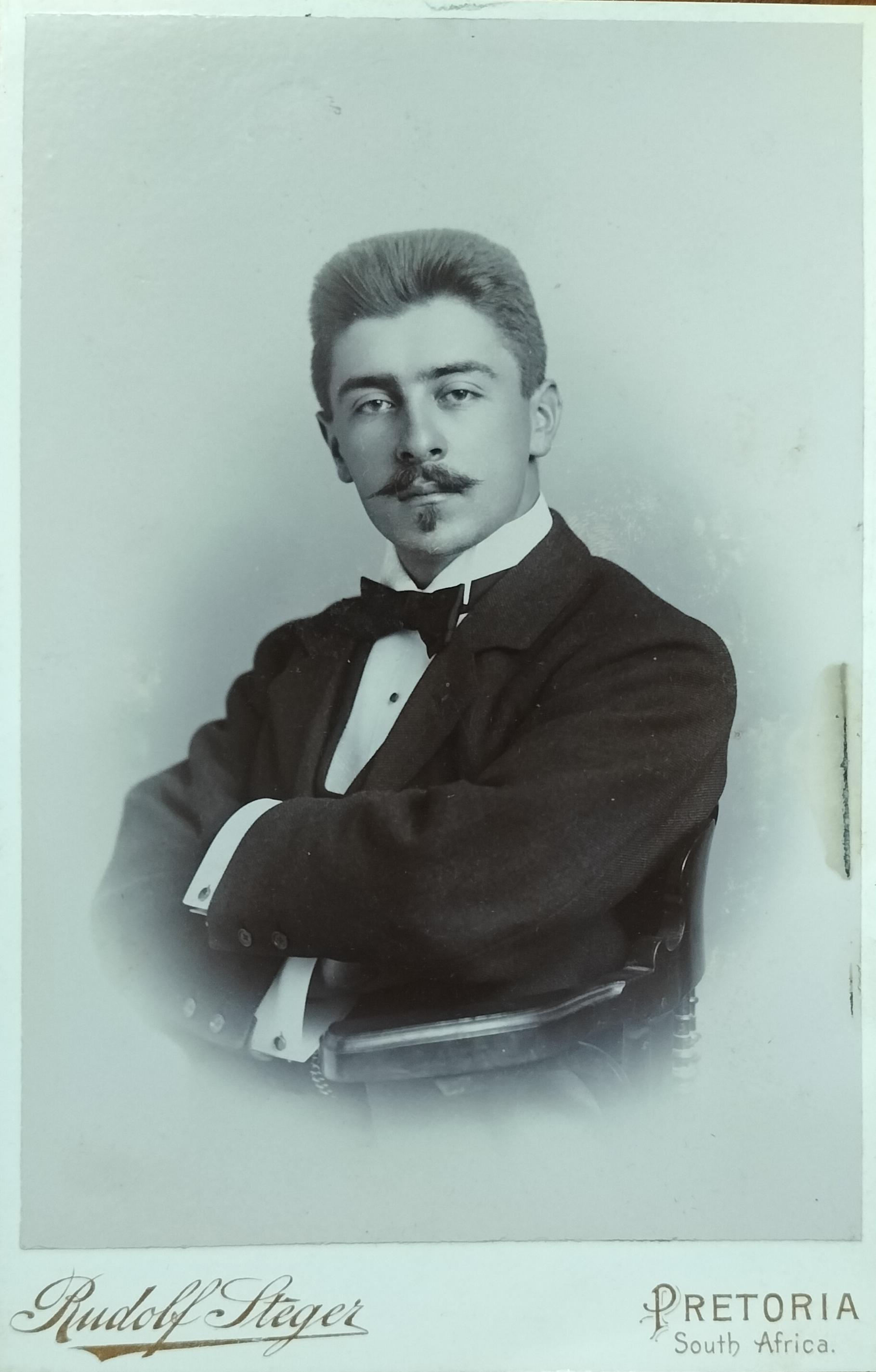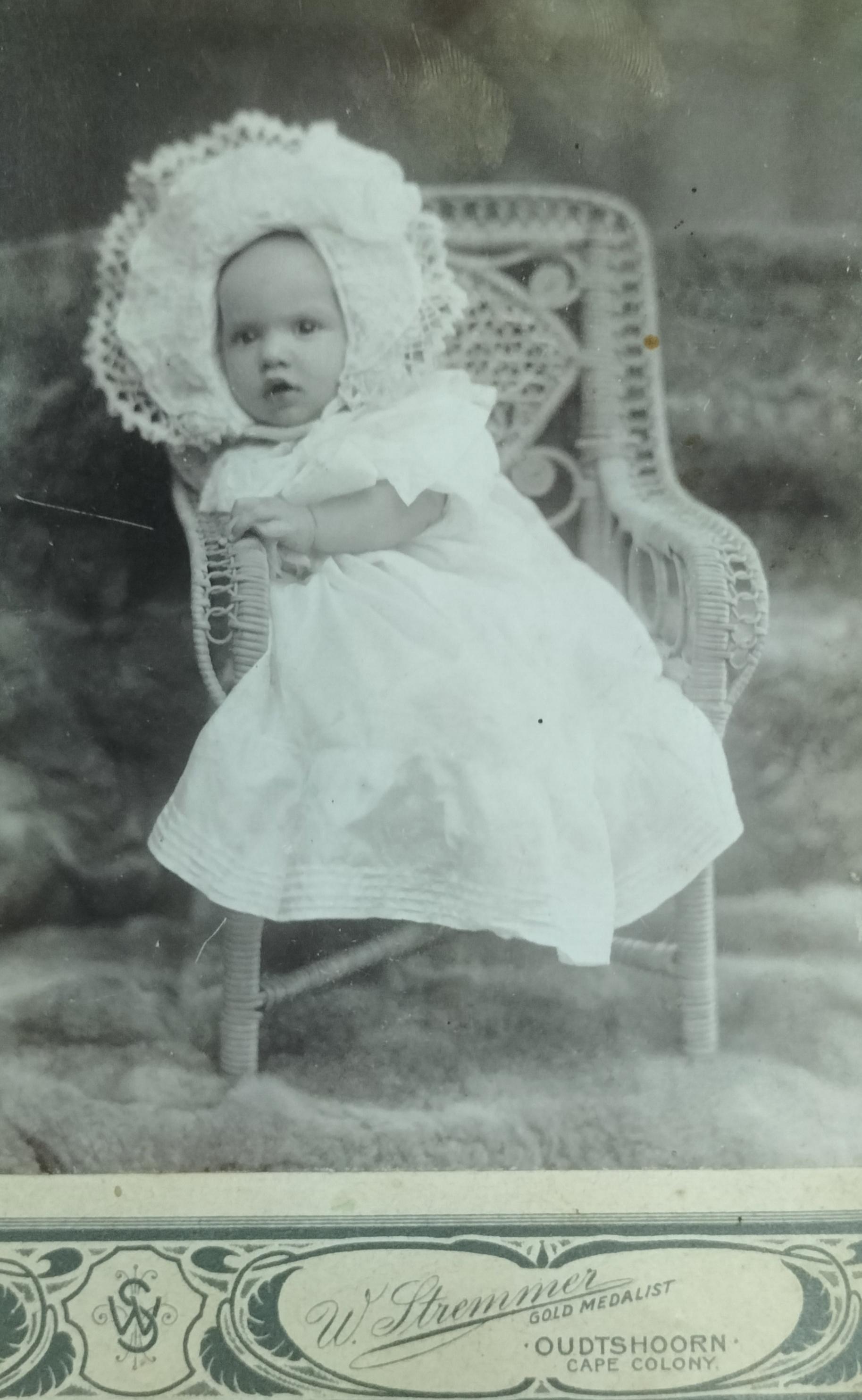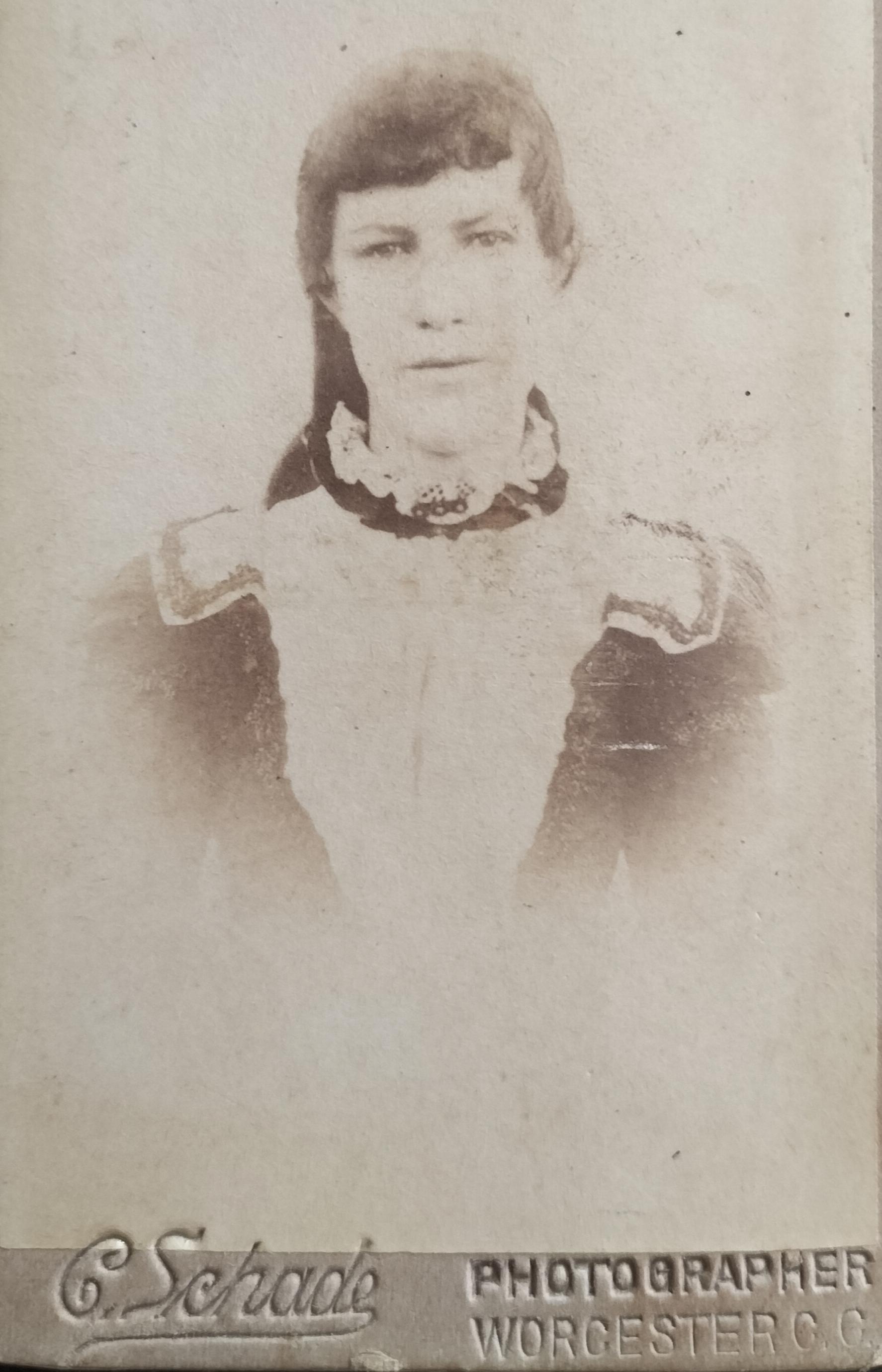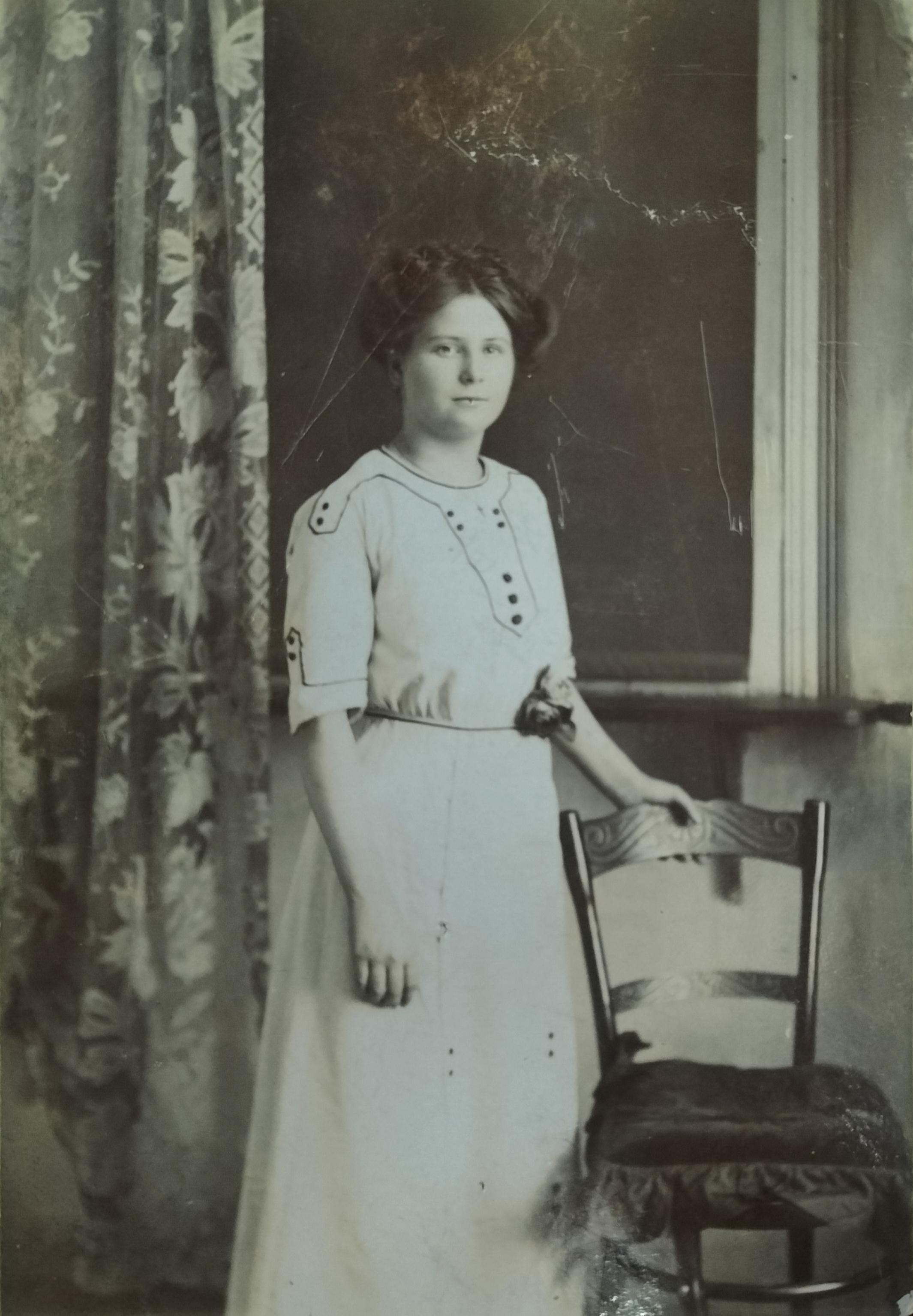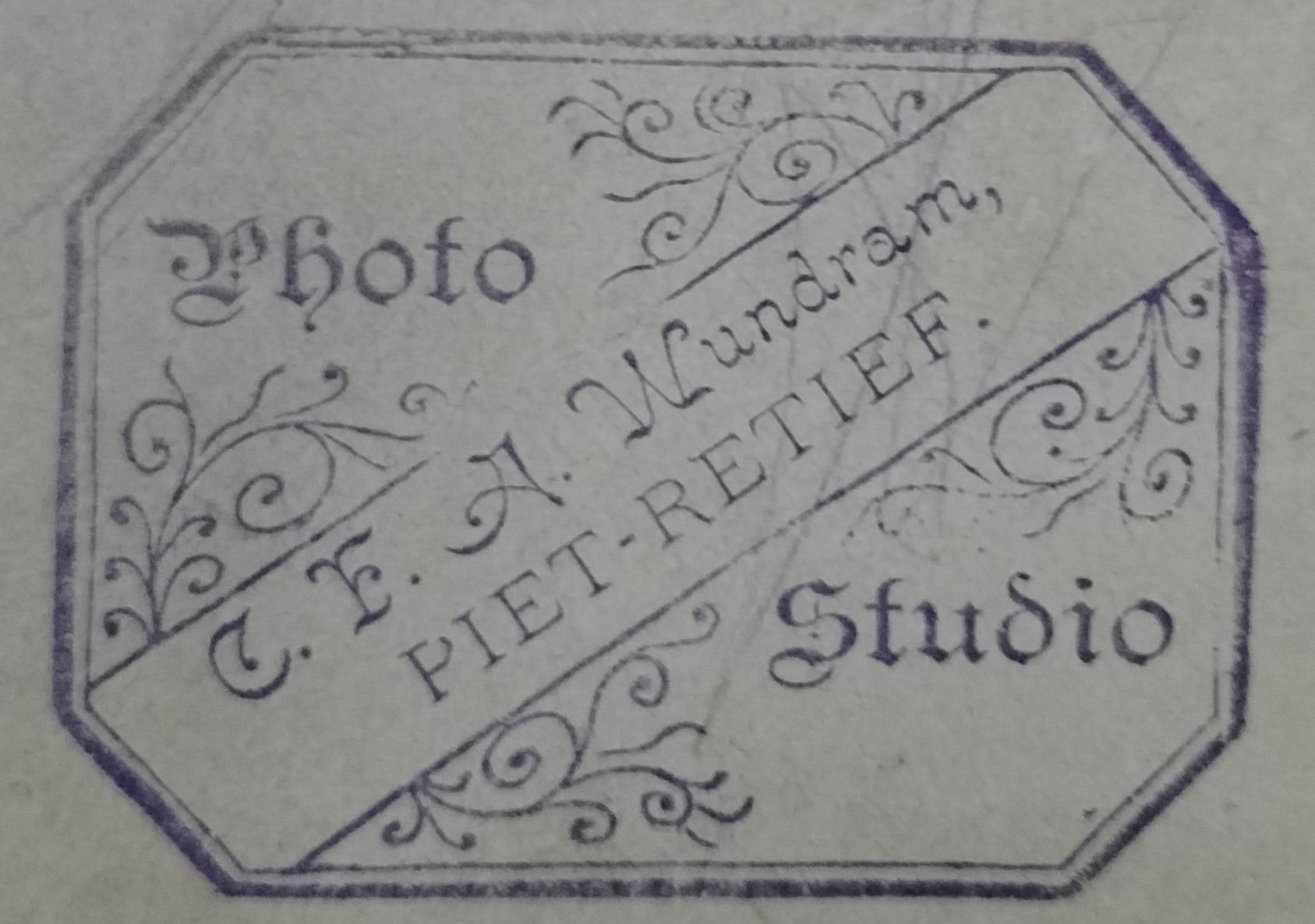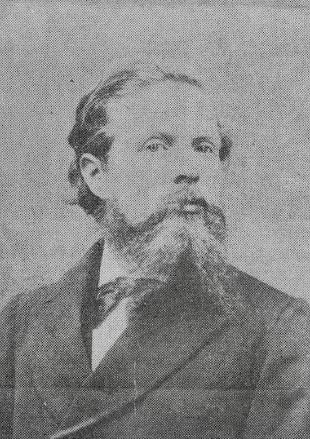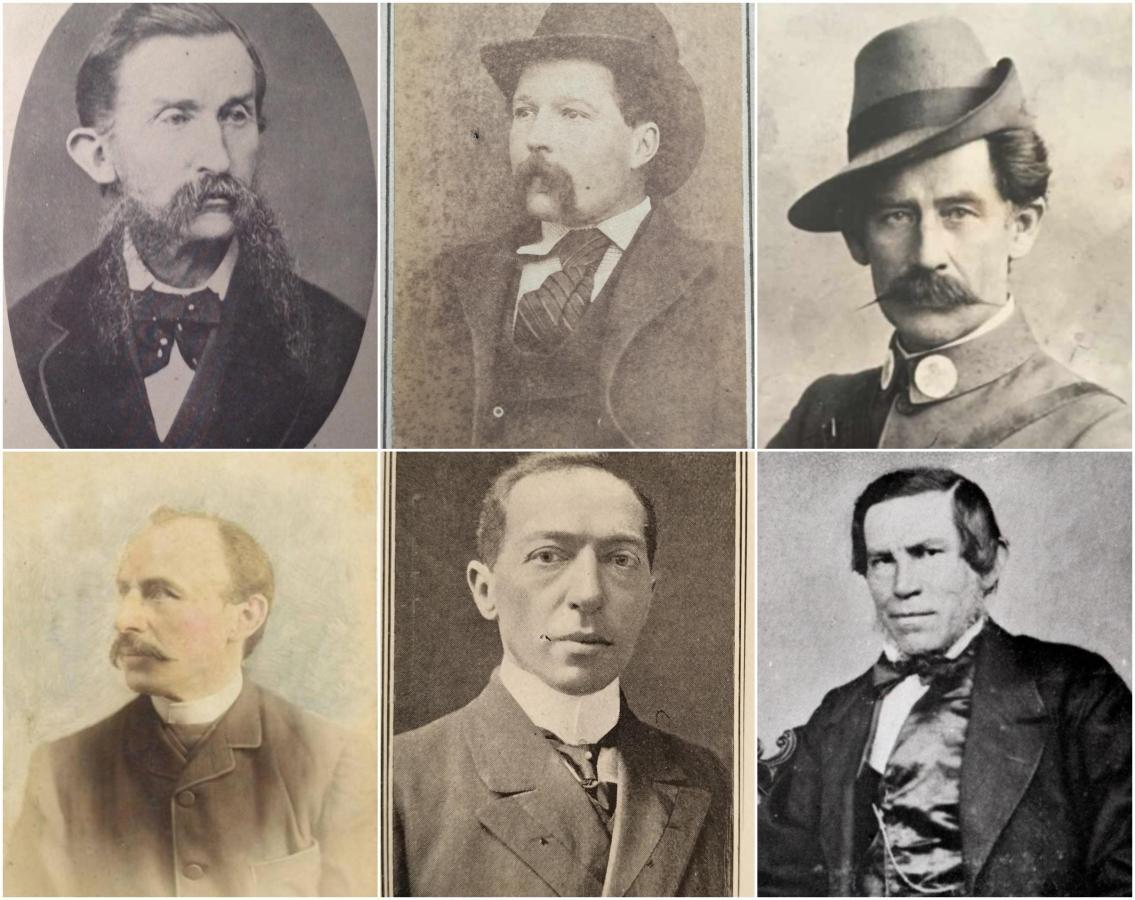
Disclaimer: Any views expressed by individuals and organisations are their own and do not in any way represent the views of The Heritage Portal. If you find any mistakes or historical inaccuracies, please contact the editor.
The history of commercial photography began in Europe in 1839, with a slower kick-off in South Africa.
The first commercial photographer active in South Africa was Julius Léger (October 1846) – a Frenchman who first set up his photographic studio in Port Elizabeth.
The first commercial photographer to advertise his services in Cape Town on 6 April 1847, was the German citizen, Carel Sparmann, a short-lived professional daguerreotypist.
Until 1854, all overseas professional photographers to set up studios in South Africa arrived mainly from either Britain, Germany or France.
None of the early Cape daguerreotypists prospered. In December 1847, all of Sparmann’s photographic equipment was sold at a public auction at his residence. Amongst the photographic equipment auctioned, were four daguerreotype cameras. Another daguerreotypist, the Dutchman Van Zweel, did not fare any better, his studio only lasting a few months.
It was only after the daguerreotype patent had expired in 1853 that pressure was placed on William Henry Fox Talbot to release his hold on British photography, by first allowing amateurs to practise the calotype process (*) freely, followed by him dropping his application for the renewal of the patent that the pattern changed in terms of commercial photography, resulting in an influx of European photographers to South Africa.
(*) Calotype process - an early photographic technique where a sheet of paper coated with silver chloride was exposed to light in a camera obscura. Areas exposed to light became dark in tone, yielding a negative image.
The purpose of this article is to present information on 50-plus German-born photographers who based themselves in South Africa between April 1847 and the end of 1915 – a period of 68 years. I have taken some free license to expand on individual narratives beyond 1915 for some of the German photographers who were active in South Africa before 1915 but were interned in South Africa up to and including 1919.
The German-born photographers listed below all made a significant contribution to the visual history of South African history (some more so than others). This is the first known attempt at recording their individual life stories, albeit incomplete and possibly somewhat brief in some instances.
About the list
From the outset I have to acknowledge that the information presented will be incomplete in that more German-born photographers, active in South Africa during this period, will be uncovered with ongoing research.
The research was complicated by numerous factors. Some of the challenges experienced with the research entailed:
- Verifying that each photographer recorded was born in Germany;
- Surnames that did not seem German in origin, turned out to be German and vice versa;
- Various spellings of names and surnames complicated the search;
- Differentiating between German-born and 1st-generation South African-born citizens of German descent;
- For one particular photographer, Meissner, I had to apply some creative license in constructing a narrative around him and his Egyptian-born son as I found the information available confusing and contradictory;
- In a few instances, only the studio name and no photographers’ names appear on the photograph, meaning that some of the photographers attached to the studio may well have been German- born.
The list below excludes:
- Individuals with seemingly German surnames who were born in countries other than Germany and eventually immigrated to South Africa;
- Individuals, of German descent, born in countries other than Germany, but settled in Germany before their final move to South Africa,
- German-born photo colourists who were in the employ of some of the more well-established photographers in South Africa;
- German-born businesspeople, such as Ludwig Karl Emil (Emil) Burmester, who was a photographic agent and supplier to the photographic trade during the mid-1860s. Although Burmester is recorded to have bought out Arthur Green’s equipment when Green declared himself insolvent in 1862, there is no evidence that Burmester ever practised as a photographer. Burmester in all probability sold the equipment again at a profit as a dealer;
- German photographers active in German South West Africa (Namibia today) – this aspect requires a dedicated article.
Where no photographic evidence exists of work done by these photographers, it became an even bigger challenge to identify them, more so for photographers:
- Who were active before the 1870s and would have produced daguerreotype and ambrotype images. When these photographic formats are found in South Africa, it is nearly impossible to confirm whether they were produced on South African soil or not;
- Who were not as prominent as photographers due to short-lived photographic careers, or they followed alternative career streams in tandem;
- Who had their professions captured as being photographers on passenger ship records, yet no evidence has been found that they had engaged in the profession whilst on South African soil;
- Who were photographic studio assistants, who, at best, are more challenging to identify as they worked in the background;
- Where some surnames were common surnames for those years, making it difficult to determine which one was the actual photographer;
- Some photographs only contain the surname of the photographer (without any initials);
- Some surnames included initials, which could infer a variety of first names;
- In a few instances German first names became Anglicised;
- Spelling errors or undecipherable names on photographs.
The list below is presented in four categories, namely:
- Pioneer German photographers active in South Africa before 1870;
- German photographers active in South Africa post 1870 (1870s to 1915);
- Shipping records suggesting that the occupation of some of their passengers was that of a photographer;
- One visiting German photographer of significance.
The list by no means purports to be a complete list of German photographers active in South Africa. There is no doubt in my mind that the list, and information captured below of identified photographers, may still expand as more information is uncovered.
Next to each name, the following aspects are recorded:
- Surname and full names (where known);
- Year and place of birth and death (where known);
- The primary South African town that the photographer settled in. Photographers often moved around before settling in a particular town.
The list below also includes three female photographers, namely the Ginsberg sisters and Keene.
In analysing the collated information on the 51 confirmed German photographers, it will be noticeable that there were several family partnerships, such as the Ginsberg sisters or father and son teams such as the Meissners, Haacks and Zeidlers.
Some other early partnerships did not last, such as that between Sparmann and Hager.
Some photographers sadly died young. This list contains at least 3 names of photographers who died before the age of 50.
The birth dates of the confirmed German photographer listed below vary between 1813 and 1874.
A) Pioneer German photographers active in South Africa before 1870
Photographs produced by German-born South African pioneer photographers are scarce for a variety of reasons - The format produced was either in daguerreotype or ambrotype format. Most of these photographs have either not survived because they were glass-based, or the photographer’s information was not recorded in the photographic case meaning that some archives or collections may unknowingly curate a surviving daguerreotype or ambrotype by a South African photographer.
Below is the list of seven pre-1870 German photographers.
1) Becker Heinrich (+-1843 – date of death unknown) – Cape Town
Becker arrived with fellow photographer George Vogtmann from Hamburg in May 1863 on the ship Steinwärder at the age of 20. The ship record has Becker’s occupation recorded as a “kauffmann” (merchant).
By October 1863, some 5 months after they arrived in South Africa, the two are recorded to have been based at the Portrait Rooms on 48 St. John Street, Cape Town, where they sold Cartes-de-Visite at 17s per dozen.
2) Hager Carl Otto (1813 – 1898) – Cape Town & Stellenbosch
Hager was born in Dresden on 16 October 1813.
He showed a talent for drawing at an early age. In 1825 he entered the Akademie der Künste in Dresden where he studied architecture, eventually qualifying in 1829.
One record suggests that Hagar arrived in South Africa in 1830, whilst a second and more probable source suggests that he arrived in 1838, following which he obtained prominence in South Africa as an architect, builder, painter and photographer.
Hager’s first commission as an architect in 1840 was the new Roman Catholic Cathedral of St. Mary in Cape Town. This commission came about when his compatriot Sparmann, also an architect based in Cape Town, invited Hager to join him in partnership after Sparmann was approached to build the new church. Hager agreed and subsequently drew the plans.
These very plans resulted in conflict between Sparmann and Hager in 1841 when Sparmann attempted to discredit Hager after Hager presented the plans of the very same church with his name allegedly hidden in multiple ornamental designs on the plans. This fall-out between the two resulted in their attempted business venture being unsuccessful.
Following this incident, Hager moved to Stellenbosch in the same year (1841) focusing on portrait painting. He taught himself to paint portraits in oil.
Hager married Cornelia Margaretha Susanna Jansen on 9 August 1842 in Stellenbosch. In April 1845, he left for a trip to Europe with his family and returned in December 1846. Back in the Cape, Hager started a snuff and candle maker business whilst still painting portraits.
Not long thereafter, he decided to advertise his skill as an architect, resulting in him becoming the architect of several early South African churches, amongst them the Lutheran church in his hometown, Stellenbosch (inaugurated in 1854) and The Wit Kerk in Middelburg (Mpumalanga – inaugurated 1890) further north.
It was only in May 1858 that Hager opened his photographic studio at 16 Plein Street in Cape Town as a daguerreotypist. His efforts in this form of art were short-lived in that he returned to Stellenbosch where he achieved more success in his architectural work. Although Hager attempted to re-establish himself as a photographer in Stellenbosch (he stated: “I obtained so much work that I had no time to eat”), his competence as an architect was in higher demand in that he received several commissions to build churches throughout the country.
Hager passed away in Stellenbosch on 8 October 1898.
Although no evidence of this has been seen to date, Hager’s son, South African-born Carl Louis, was later to become a professional photographer himself in the Cape.
Carl Otto Hager - Renowned South African architect, painter and photographer. No photographs captured by him have been identified to date. He would mainly have used the Daguerreotype or Ambrotype processes which complicates identification. (Wikipedia)
3) Mähler Carl Bernhard (+- 1839 – date of death unknown) – Cape Town
Biographical information on Mähler is limited. The exact date and location of his birth and death are not known at this stage.
When Mähler arrived in South Africa is also not known. This would however have been before 1868.
He marketed himself as a barkeeper, photographer and medical practitioner. In the same advertisement, he stated that he established himself as early as 1852 in Berlin, Rome and Paris. In South Africa, he was active in Cape Town, the Free State and the Transvaal.
What is known is that Mähler (aged 29) married Josephine Maria Litkie (aged 17) on 9 July 1868 in Cape Town. Mähler’s occupation is recorded as a photographer on the marriage register. The couple had an unknown daughter who was born on 13 December 1870 in Cape Town. Ironically, this birth was only registered post-1920s. Other births registered are for Johan Emil on 12 April 1878 (Newcastle) and for twin daughters Albertina Lavinia Catharina and Josephine Christina Harriet on 9 December 1880 in Frankfort (Orange Free State).
Where and when Mähler obtained his medical qualification is also not known.
His portrait saloon in Cape Town was based at 99 Long Market Street between 1868 and 1881. It is possible that he had an assistant managing the studio during his extensive travels of South Africa. Although still around in 1894, his last recorded activity as both photographer and medical practitioner was in Ventersdorp in 1889.
Mähler was clearly a restless soul in that he travelled South Africa extensively. It is recorded that he visited Colesberg as early as December 1870. He also photographed Pilgrimsrest and Standerton in their earlier years.
Mähler, in an 1873 letter to the Government, requested them to prevent others from copying his photographic material due to the costs of travelling the country via ox wagon. He was the photographer to President TF Burgers at the time. In the letter he referred to photographs of “large nuggets” (assumingly referring to gold found at Pilgrimsrest) and that the protection he was requesting was required in terms of his rights, time, and material cost. In the same letter, he stated that photographs produced by him are making the country better known.
In 1876 Mähler’s wife wrote a letter to the State President (who was in Middelburg at the time), requesting that her husband be granted leave to collect her and the children in Lydenburg. The President did not respond to this letter as he was no longer in Middelburg.
Mähler became known for his medical interventions in the Boer Commando during the conflict with the British in that he effectively attended to the wounded and by doing so built trust within the commando and the burghers.
In 1881 Mähler applied to be accepted as a district doctor in Heidelberg or elsewhere - a request that was approved. He was also in the service of the Potchefstroom commando in 1882, for which he closed his practice to provide this service at £3.3.0 per day.
So popular was Mähler that Commandants and field cornets requested General PJ Joubert that Mähler be reappointed in 1883.
In 1883, Mähler addressed a letter to President Paul Kruger stating that he had already been working in the field in Heidelberg and Potchefstroom as a medical practitioner (during the war against Mapoch), using his own medicine. He requested that he be paid a salary for February and March 1883. To this request he also attached an activity sheet, providing evidence of the medical services provided. Commandant PA Cronje confirms that Mähler has been working as a doctor in the lager at Mapochsberg using his own wagon, oxen and medicine.
Multiple further requests for payment are submitted by Mähler thereafter, namely:
- Mähler, confirms that between 15 March and 15 April 1883, he was based at another lager (Stinkhamsburg);
- In another invoice submitted on 16 April 1883 Mähler requests to be paid £233 for 74 days of work. Archival records indicate that he was paid £103.19 by the Government in April 1883;
- A further invoice requested payment for 55 days of medical services provided between 1 April to 25 June 1883.
Mähler was again commandeered by the South African Military in December 1884 to provide medical services to a military unit.
In 1886, Mähler was admitted as a medical practitioner in Stellaland.
Not only did Mähler offer photographs (mainly portrait photographs it seems) for sale, but also published a small booklet with 29 photographs of gold mining activity in the Transvaal (Pilgrimsrest) in 1873.
In a letter to the Government in December 1893, Mähler stated that he wished to sell medicine and medical instruments to the government (he was based in Christiana at the time).
In 1894, Mähler addressed a letter to President Paul Kruger. This letter, held at the South African National Archives, is barely readable or understandable and includes references to religious scriptures. It seems to have been written by a madman, including multiple exclamation and question marks. The recipient (on behalf of Pres Kruger) also states that the content of the letter was not understood.
This letter alone could be indicative of either a deterioration of Mähler’s mental health or a possible addiction of some sort.
It is then also from this date, namely 1894, that no further trace could be found of Carl Bernard Mähler, who went by the name of Bernhard Mähler. He would have been 55 at that stage. Did he possibly return to Germany?
Carte-de-Visite format photographs produced by Bernhard Mahler of an unknown couple (circa 1878). Mahler would have ordered the beautifully pre-printed cards on which the photographs are pasted in bulk from Europe.
Small photograph album containing 27 photographs produced by Bernard Mahler in 1873, titled: Goldfields – South Africa - Transvaal
Photograph 1 in the 1873 Bernhard Mahler album, titled: Off to the Goldfields
Photograph 21 in the 1873 Bernhard Mahler album, titled: Rosenkranz near Leydenburg (sic)
Muller family photograph by Bernhard Mahler. Standing on the left is Commandant DJ Muller who was the commandant for Lydenburg (1880/81). Seated far right is his father JC Muller who was a Voortrekker. Some of the children in the photograph are blurred due to them moving when the image was captured. Note the two spooky looking children – Mahler added their pupils afterwards.
4) Mehliss Otto (1830 – 1895) – Stutterheim / Dordrecht
Mehliss was born in Hanover. He passed away at the age of 66 on 14 March 1895 in Johannesburg.
Mehliss, a photographer within the German Legion, disembarked in East London on New Year’s Day of 1857.
He later became a government land surveyor based at Dordrecht. In 1868, Mehliss also applied for the role of superintendent of convicts in East London. It is assumed that this application was unsuccessful.
He was married to Austrian-born Caroline Katharina Arbesser. She died in Johannesburg on 20 August 1906.
The couple had 7 children of which 4 pre-deceased Mehliss.
Carte-de-Visite format photograph of what is believed to be of the photographer Otto Mehliss circa 1870
Carte-de-Visite format photograph by Otto Mehliss of an unknown sitter – circa 1875. Although the town he was based in is not stated on the preprinted card, it is known that he was active in Dordrecht and Stutterheim.
5) Roghe AW (date of birth or death unknown) - Cape Town
Roghe originated from Frankfort. He established himself as a photographer at 96 Long Street, Cape Town on 10 November 1849.
He became the first professional calotypist in the Cape. The calotype, or talbotype, is an early photographic process introduced in 1841 by William Henry Fox Talbot, using paper coated with silver iodide.
Roghe fared poorly in that his photographic portraits were not popular. A year after setting up his studio, Roghe was about to leave Cape Town, but following some encouragement, he stayed a little longer. It is however not known when he returned to Germany – probably around 1851.
6) Sparmann Carel (+-1813 – unknown) – Cape Town
In October 1838 Sparmann and his wife Ida sailed from Hamburg to Cape Town with Carl Otto Hagar. The journey however proved a tragic one for Sparmann. On arriving at the Canary Islands, his wife, who had been ill for a few days, gave birth to a child and died as they reached the Island of St. Lagos. She was buried there in the Catholic Cemetery. The baby died four weeks later and was buried at sea.
Sparmann set out to establish himself as a builder and architect and persuaded Hager to join him in partnership after he was awarded the contract to build the new Roman Catholic Church in Cape Town (St. Mary’s Cathedral). Hager accepted and drew up the plans. During their short-lived partnership, they rented a house on 7 Grave Street in Cape Town. The partnership however soon dissolved due to a dispute between the two.
Sparmann eventually set up his photographic studio in Grave Street in Cape Town called Sparmann & Co (his partner seems to have been August Pistorius). Edward Jones, a pioneer photographer himself, seems to have been Sparmann’s first assistant. Sparmann also rubbed shoulders with early Cape photographers such as Wagner and Groom.
The earliest known source referring to a photographer in Cape Town was by Captain F. Eardley Wilmot, the Director of the Magnetic Observatory, who wrote to Thomas McLear (surveying at Cape Point at the time) on 17 December 1844 to give him an update on the change at the Observatory, stating:
The municipality has cut Skirrow and employed Sparmann, a sort of daguerreotype dabbler (sic) and plumber and glazier or some such thing.
The change referred to was that Sparmann replaced the Cape Surveyor John Skirrow (who supervised the erection of the Royal Observatory).
The first formal reference to a photograph captured by a commercial photographer in Cape Town, and to Carel Sparmann as a photographic artist, appeared in Sam Sly's African Journal of October 1846, under the title "Something new under the Sun" in which it is stated:
We know of one instance in which Mr. Sparmann so admirably drew the photographic portrait of a beautiful lady, that strange as it may appear - her husband absolutely preferred it to the original.
Sparmann was also the first to advertise coloured daguerreotypes in South Africa. He did however not stay in the Cape for long in that his photographic equipment went on sale in December 1847. At the time of the sale, Sparmann had at least four daguerreotype cameras. It is therefore assumed that he stopped taking photographs in the same year.
Cape almanacs for 1848/9 still suggested that Sparmann was active as a photographer, but no evidence of this could be found after the sale of his photographic equipment the year before.
An entrepreneur at heart, Sparmann in 1844 set up a “Gilding and Plating” plant. He also manufactured gun cotton and is alleged to have invented liquid gas.
One record suggests that Sparmann passed away in 1846, but this is highly improbable. No such record exists of his death in South Africa.
The only known photograph of the early Cape Town-based photographer Sparmann (circa 1840s) extracted from 'Secure the Shadow'
7) Vogtmann George (+- 1841 – date of death unknown) – Cape Town
Vogtmann, aged 22 at the time, arrived in Cape Town with fellow photographer Becker from Hamburg in May 1863 on the ship Steinwärder. The ship register has his occupation recorded as a “kaufmann” (merchant).
By October 1863, some 5 months after they arrived in South Africa, the two are recorded to have been based at the Portrait Rooms on 48 St. John Street, Cape Town, where they sold Cartes-de-Visite at 17s per dozen.
Although this could not be verified, there is also a record of Vogtmann trading under JH Stiork & Co.
B) German photographers active in South Africa post 1870 (1870s – 1915)
The pioneer photographers above, along with their European counterparts, set the scene for a younger generation of German photographers to come and test their ability to generate an income from the art of photography in South Africa.
8) Alter Bruno Paul (1872 – 1942) – Rustenburg
Alter was born in Breslau in 1872. He married Meta von Ahrentshildt in Pretoria in 1898. The couple had 5 children, one of which passed away at the age of 2.
Alter died at the age of 70 in Rustenburg on 15 June 1942.
Wedding photograph of an unknown couple by Rustenburg-based Alter – circa 1900
9) Bättenhausen George Otto (1853 – 1939) – Port Elizabeth
Bättenhausen married Minna Sophie Hochapfel in Kassel (Germany). The couple did not seem to have any children. Minna’s mother was also a Bättenhausen.
The couple seem to have arrived in South Africa during 1892 where Bättenhausen then set up his studio at 27 Parliament Street. This same studio was later taken over by A. Kudielka.
The couple must have returned to Germany, probably during the Anglo-Boer war, in that archival records indicate that they returned to South Africa again in February 1920.
Otto passed away in Port Elizabeth on 16 December 1939, aged 86. The couple was residing in Philipstown at the time.
Minna passed away in Pinelands in November 1980.
Carte-de-Visite format photographs of unknown sitters by Otto Bättenhausen. Otto named his studio Vienna Photographic Studio. The photograph of the young man holding a tennis racket is rather unusual – circa 1872.
Cabinet Card format photographs by Otto Bättenhausen showing some of the different card backs in use by him – circa 1888
10) Bluhm Adolf Carl Friederich (1827 – 1897) – King Williams Town
Bluhm was born in Kiel on 11 May 1827.
Formerly an officer in the German Army, he married Maria Margareta Catherine (born Munsfeldt) in Hamburg.
The couple arrived in King Williams Town in 1857 with their first-born, two-year-old Carl Willem.
Bluhm’s experience in photography appears to have been acquired in Germany in that he disclosed this when he took over Irishman Michael Henry Durney’s studio in Berkeley Street, King Williams Town, in June 1864.
King Williams Town was a garrison town at the time. To cater to the many troops stationed there, an additional studio was erected in the Royal Engineer’s Barrack Yard during June 1868 resulting in men in uniform being able to obtain portraits and order views of the town at favourable prices to send overseas.
Bluhm, by special invitation from the Committee of the East London Agricultural Society, travelled to East London (some 60 km away) to photograph the judges at the Agricultural Show in May 1869.
Following an injury, Bluhm discontinued his photographic career after he was thrown from his wagon in 1883.
Most, if not all, of Bluhm’s studio work was produced in the Carte-de-Viste format. To date, no Cabinet Card format photographs produced by him have been identified.
Subsequently to his accident, he accepted work as an educator among the German children at Breidbach near King Williams Town.
Bluhm also took a keen interest in civic affairs where he for example was responsible for organising the Volunteer Company of German Burghers in 1877.
The couple had 8 children, namely Carl Wilhelm, Gustav Otto Hugo, Emma Helena Martha (Howell); Emerie Dorothea Minna (Sonnig); Berthe Louise Tony; Augusta Carolina Johanna (Jardine); Adolph George Herman (died at childbirth) & Bertha Caroline Louise.
Bluhm died in King Williams Town on 9 July 1897, being survived by his wife and five of his eight children.
Bluhm’s second eldest son, Gustav Otto Hugo, has also been recorded as a photographer. Although no evidence of his work has been identified to date, it is safely assumed that he was an assistant photographer to his father.
Click here to read more about Carl Bluhm
Photograph of the King Williams Town-based photographer Carl Bluhm. Bluhm was injured after he was thrown from a wagon in 1883 whereafter he stopped his photographic career.
11) Daubert Maximillian Alfred (1865 – 1951) - Wakkerstroom
Daubert was born in Braunschweig, Germany on 24 August 1865. His father was Heinrich Wilhelm Daubert and his mother Doretta Daubert (Nee Haacke). Alfred left Germany at the age of 23 and arrived in South Africa sometime during 1888.
Daubert initially moved around South Africa at regular intervals. He was in all probability an assistant photographer at the studios of some more established photographers in the towns he visited before he finally settled in Wakkerstroom.
The towns he was active in were as follows:
- Kimberley between 1888 and 1889;
- Johannesburg (Kerk & Harrison Street) between 1889 and 1891;
- Winburg between 1892 and 1896;
- Back in Johannesburg for 8 months during 1896;
- Volksrust for 2 months during 1896.
He settled in Wakkerstroom in 1896. Daubert’s house and studio in Kerkstraat (the then main street) was located behind the small commercial centre in Badenhorst Street. This house, referred to by the locals as the Daubert house, was sadly demolished during 1986.
Marthinus Wesselstroom, as Wakkerstroom was initially called, was established during November 1859, which makes Wakkerstroom one of the oldest towns in the old Transvaal.
Daubert remained in Wakkerstroom for 14 years (until 1911), before moving to Reitz where he also practiced as a photographer.
Due to Daubert becoming a prisoner of war during 1915, his wife had to sell the property in Reitz during 1916. From there she moved to Pietermaritzburg.
It seems that after his release from the prisoner of war camp, he was based in Pietermaritzburg for a while before retiring to the farm Weltevreden in the Utrecht district (near Wakkerstroom) where he then also passed away on 6 July 1951 at the age of 86.
It was during his initial years in South Africa (1890 – 1915) that Alfred clashed with the law regularly. The first incident (at least in South Africa) occurred in Johannesburg. Daubert was then aged 25.
Click here to read a detailed article on Daubert.
Cabinet Card format photographs of unknown sitters by the Wakkerstroom-based photographer Daubert – circa 1900. In his younger days, Daubert clashed with the law often and was even imprisoned in Wakkerstroom.
12) Drieselmann Wilhelm Peter Franz (1861 – 1915) – Heidelberg (Transvaal)
Drieselmann was born in Hanover, Prussia in 1861. On 19 May 1884, he married Auguste Bernadina Pistorius in Heidelberg. The couple had 8 children: Johan Friedrich Wilhelm Theodor, Getruida Catharina, Erwine Magdalena, Irene, Violet, Erina Agnes, Eleonora & Friedrich.
The Drieselmann studio was based on Market Square between 1889 and 1899.
It is also recorded that Drieselmann was in partnership with Peters. They did not restrict themselves to work in the Transvaal in that one of their cabinet cards in the Hardijzer Photographic Research Collection (HPRC) suggests that they were also active in the Orange Free State. To date, it has not been established as to who the partner Peters may have been.
Drieselmann passed away in Heidelberg on 7 August 1915, at the early age of 54. While photographs by him carry the initials FW, his death certificate confirms that he was a photographer at the time of his death.
His son Johann Friedrick Wilhelm Theodor Drieselmann, who was born in Heidelberg on 1 January 1886 may have assisted his father as a photographer and may even have continued his father’s photographic business from around 1905. He however became a farmer later in life.
The front and back of Cabinet Card by Heidelberg-based Drieselmann – circa 1900
13) Erdmann Johann Georg Theodor (1860 – 1931) - Johannesburg
Erdmann was born in Mainz on 28 June 1860.
He became a naturalised South African citizen during April 1921.
He first married Lucy Ellen Turnbull. It is not known when they got married, but they divorced in 1903. They had two children (Oliver & Ivy) at the time. Lucy passed away in 1926.
Lucy went on to marry an engineer (Gartzweiler) in 1903, while Erdmann married Martha Trieb in the same year. They had three children (Elizabeth, Elfride & Phillip).
Some records indicate that Erdmann’s name has been Angelized to John George Theodore.
Erdman was interned on 12 November 1914 following his arrest in Johannesburg. He resided at 36 Anderson Street in Turffontein at the time of his arrest (he was 54). He was interned at Fort Napier. A register at the time of his internship indicated that he had photographic “utensils,” a “whole plate” camera and a tripod in his possession, which indicates that he kept himself busy as a photographer in camp.
Erdmann must have arrived in South Africa in 1896 in that his internship documents (1914) indicate that he had already been in the country for 18 years at the time of his internship.
Whilst interned allegations were made that Erdman was deranged in that he suffered from night dreams waking his neighbours by shouting. The report also stated that he had a nervous disposition. The camp doctor however confirmed that Erdman was in good health in April 1915.
In October 1915, Erdman applied for his release. In his application, he stated that he has no military obligations in that he is older than 55. This request was declined.
Erdmann was eventually released almost a year later in August 1916.
Erdmann resided in Prichard Street (Johannesburg) at the time of his death on 16 May 1931.
Photograph by Johannesburg-based Erdmann of unknown sitters. Note the interesting composition of the sitters – circa 1905.
Photograph by Johannesburg-based Erdmann of unknown sitter in an unusual pose – circa 1914
14) Fresen Joseph Hubertus Aloysius (1874 – 1936) – King Williams Town
Fresen was born in Germany in 1874. The town and exact date of his birth is unknown.
He is recorded as a photographer on one of his son’s death certificates. At the time of his own death, he is however recorded as a bookkeeper. He was a widower at the time of his death in January 1936.
He married Anna Auguste Schmidt in King Williams Town on 11 January 1902.
His studio was located on Alexandra Road in King Williams Town.
Cabinet Card format photograph of two unknown girls by King Williams Town-based photographer Fresen – circa 1900
15) Friedenthal Leonhard (1851 – 1908) – Multiple South African Towns
Friedenthal was born in Argonau in 1851.
The second shipping record confirmed Friedenthal to be an “Afnemer & Horlogiemamker” (Photographer and watchmaker).
Friedenthal married Catherine Martha McDonald in Kroonstad on 3 April 1882. They moved around often in that their children were christened in Pretoria, Rustenburg and Edenburg. Friedenthal is also recorded to have been active in Burgersdorp, Kroonstad and Rouxville.
The couple eventually based themselves in Elliot (Barkley East). They had 10 children, four of whom died young.
Friedenthal passed away on 22 Nov 1908.
Cabinet format photograph of an unknown couple by Friedenthal. The town in which the photograph was taken is also not known – circa 1903.
16) Ginsberg Anna (1880 – 1950) – King Williams Town
Of Jewish descent and daughters to Leo Ginsberg and Louise Hoexter, the two sisters Else and Anna arrived in King Williams Town from Germany during the 1880s.
Anna was born in Alsace-Lorraine, a portion of land on the eastern side of France that was ceded to Germany by France in 1871 (post the Franco-Prussian war), only later to be returned post the France post-World War 1.
The sisters seem to have followed their uncle Franz Ginsberg, who left Germany during 1880, to join his brother-in-law Jakob Rindl as a photographic assistant, who was then already settled in King Williams Town, where he also ran a photographic studio. Franz later became a senator and successful industrialist.
Their photographic studio in King Williams Town (Art Studio based in Downing Street) was the first and only studio in South Africa to be managed by two women before 1900. It has been suggested that the sisters took over the existing establishment from the photographer Henderson.
Little is known about the Jewish community in the town during the last half of the nineteenth century (the period they would have been active as photographers). There was allegedly also not much organised Jewish life in the town at this time.
The two sisters are known to have produced some beautifully artistic child studies with delicate backgrounds.
The younger of the two sisters Anna, was born during 1880. She married her cousin Oscar Ginsberg in 1903. As such close marriages were not permitted at that time in South Africa; the couple had to cross the border to Portuguese Lourenco Marques to get married. They had two sons. The youngest son, born during 1904, passed away at the age of 22. The second son was born during 1909. Anna passed away on 15 July 1950.
17) Ginsberg Else (1874 – 1934) – King Williams Town
The older of the two Ginsberg sisters, little is known about the life of Else. She was born during 1874 and passed away during 1934.
Cabinet photograph of an unknown sitter by the King Williams Town-based Ginsberg sisters – circa 1905. They were the first female photographers in South Africa before 1900 to manage their own photographic studio, called the Art Studio.
18) Ginsberg Franz Joseph (1862 – 1936) – King Williams Town
Franz Ginsberg was born in Bytom-Beuthen (Upper Silesia) in Germany, now part of Poland.
Franz, aged 18, arrived in South Africa in 1880 and joined his brother-in-law, the Czech-born (Moravia) Jacob Rindl in his photographic establishment as an assistant photographer in King Williams Town.
Their customers were mainly German-speaking British German Legion members and their families who had been encouraged by the British to settle in the area around the 1860s.
Ginsberg began a match, candle and soap factory during 1886.
During 1905 he was elected as King Williams Town mayor and in 1927 he was elected as Senator to the South African Parliament – the first Jew to be bestowed this honour.
It is also recorded that Ginsberg and Rindl attempted colour photography with some success.
Photograph of Franz Ginsberg, the uncle to the Ginsberg sisters. Franz was also elected as mayor of King Williams Town in 1905. He later became a senator in the South African Parliament.
19) Glassberg Maximillian (1862 – 1954) – Paarl, Worchester and Malmesbury
There were two Maximillian Glassbergs based in Cape Town which complicated research. The second Glassberg was a successful architect. To add to the research dilemma, there was also a Marcus Glassberg.
Maximillian was born in Germany on 12 April 1862 (location unknown). He arrived in South Africa on 24 July 1890 on the steamship Pretoria aged 26. On 1 June 1896, he married Emerentia Johanna Catharina de Villiers in Cape Town. She passed away in Beaufort West in June 1931.
Max, as he was commonly referred to, had studios in Worcester (corner of Russel and Stockenstroom Street), Paarl (on Market Square next to African Banking Corporation), and at Malmesbury – African Mutual Buildings.
The Malmesbury studio was later bought out by H. Scott.
Max at one point submitted a claim against the architect Anthony de Witt for services rendered. These services related to Max photographing buildings designed and built by de Witt, such as the Paarl Wine and Brandy Company, Paarl Berg Wine Company, YMCA, Gymnasium Boarding School, various Cape Town Buildings plus 15 Cabinet Cards of De Witt himself.
Max died on 29 July 1954 aged 87 in Pretoria.
Cabinet Card format photograph of unknown sitters by Maximillian Glassberg – circa 1898. He had studios in Worcester, Paarl and Malmesbury.
A large format photograph of unknown sitters by Glassberg – circa 1910
20) Haack Carl Wilhelm Friedrich (1845 – 1918) Senior – Cape Town
Haack was born on 20 June 1845 in Neubrandenburg, Germany and married Anna Catharina Dorothea Hanschildt on 3 February 1873 in St Pauli, Hamburg. At the time of his marriage, he is recorded as having been an assistant photographer. Haack assisted as a studio photographer as early as 1865 in Neubrandenburg and Stargard.
Haack was a soldier during the Franco-Prussian conflict (1870 – 1871) after which he moved to Altona where he was active until his immigration with his wife and children to the Cape in the late 1870s. An Altona address book of 1880 however still shows the CWF Haack Photo Atelier at 18 Reichenstraße at the rear of the building.
Not long after his arrival, he opened his first studio on 220 Long Market Street in Cape Town. The studio was based in a double-storey residence.
Haack seems to have managed more than one studio at a time in that other Cape Town addresses that are recorded for Haack are 142 Long Market Street (around 1893); 2 Buitengracht Street (between 1886-94); 53 Loop Street (between 1890-97), 218 Long Street and 69 Long Street.
Haack became a naturalised British subject on 17 March 1907.
The couple had 8 children: Friederich (assumed to also be Carl Wilhelm Friedrich), Gustaf Arthur, Dora Webster, Margaret, Ottilie, Katharina Belli & Adolf. One of their sons, Joachim Carl passed away at the age of 27 on 11 December 1904. He is recorded as having been a painter residing with his parents at 22 Long Street.
Haack passed away in Cape Town on 2 August 1918 (aged 73), just more than a year after his wife (17 April 1917). He resided at 2 Dorman Street at the time.
Haack Senior was duly assisted by his son with the same names (see below). Haack Junior would only have used the Cabinet Card format photographs in that the Carte-de-Visite format would no longer have been in use when he entered the artistic world of photography.
Hand coloured photograph of the Cape-Town-based photographer Carl Haack – circa 1870s. Image provided by Uwe Luthje.
Carl & Dorothea Haack - circa 1880s. Image provided by Uwe Luthje.
21) Haack Carl Wilhelm Friedrick (Fritz) (1873 – 1944) Junior – Cape Town
The younger Haack with the same first names as Haack Senior above, was born in Hamburg on 1 February 1873. Haack Junior went by the name Fritz or Frederick. The only link found to date, linking the two Haacks, is the death certificate of Haack junior’s younger sister Margeret (1930) which provides the names and addresses of her siblings from the Haack Senior marriage above. On this certificate, Haack Junior is named as Fritz residing at 27 Gympie Street in Woodstock, the same address that appears on his death certificate in 1944.
Haack Junior would have arrived in Cape Town with his parents at the age of around 7 years old.
The younger Haack became interned during the First World War. Whilst interned, Haack was declared medically unfit and released on parole (March 1915) to his brother who was a prison warden in Pietermaritzburg. Haack was however re-interned 2 months later at the age of 42 and only released in August 1919.
In his application for parole, Haack provides the names of two fellow photographers who can vouch for him, namely W. Watson (Adderley Street) and Humphry (Long Street).
The younger Haack passed away on 22 June 1944 at the age of 71. He married Johanna Katrina Elizabeth Borchers on 26 April 1902. The couple resided at 27 Gympie Street in Woodstock and had three sons, namely Friedrich Ludwig Victor, Otto Wilhelm Albert and Herman Ludwig Friedrich.
Cabinet Card format photograph by Cape Town-based photographer Fritz Haack – circa 1900. He had the same names as his father, namely Carl Wilhelm Friedrich. The image is not of the best standard in that Fritz did not move the item in front of the camera (left of the photograph) before capturing the image.
Back of Fritz Haack Cabinet Card format photograph, confirming that his studio was based at 53 Loop Street in Cape Town. He probably shared this studio with his father.
22) Henkel Caesar Carl Wilhelm (1838 – 1913) – Eastern Cape
Henkel was born in Prussia in December 1838. He arrived in South Africa in 1857 as a legionnaire.
Henkel was originally an artist and only became a professional photographer post-1871.
He was initially based at Fort Peddie where he then also married Auguste Radue on 16 May 1870. The couple had 12 children.
Henkel owned at least 3 properties in Kokstad in 1885 and 5 pieces of land in Umtata (Tembuland).
It is recorded that during 1906 he owed monies (£200) to Rev. Richard Ross.
Henkel passed away at the age of 74, on 16 June 1913 in Umtata (Transkei). At the time of his death, his occupation is recorded as that of a retired conservator of forests.
His wife, Auguste, passed away in October 1928.
23) Hermann Wilhelm (1841 – 1916) – Cape Town
Hermann was born during 1841 in Frankfurt-am-Main in Germany.
Hermann was granted a travelling bursary to paint landscapes while on a sea voyage from Europe to the East via the Cape of Good Hope during 1869. So strongly attracted he was to the scenic beauties of the Cape Peninsula that he left his ship in Cape Town and went no further. He settled in Cape Town where he was active as a photographer between 1870 & 1890.
Hermann’s first South African Arts Association exhibition took place during 1871.
The Cape Monthly Magazine for March 1871 (p.158-161) paid high tribute to Hermann in a lengthy appreciation of his talents:
… until the arrival of Mr. W. Hermann at the Cape we have not been visited by any artist of acknowledged ability who could fairly claim to have succeeded in reproducing in oils many of the more striking characteristics for which our mountains and forests may be considered as celebrated.
The reference here is to “such samples of this gentleman’s skill as have lately been on view at Mr. Barnard’s photographic studio…"
Hermann however did not find it possible to make a living as a professional artist. He turned to photography instead. Although never financially affluent, he succeeded in making a living from this profession.
Hermann became one of only a handful of artists that turned professional photographers post-1871.
Hermann returned to Germany, but with the intention of setting at the Cape, which he then also did in 1875.
During his initial visit to the Cape, Hermann met Christine de Villiers whom he married on his return from Germany. The couple had three daughters, namely Marie, Lee and Elsa.
Hermann bought a stable on Stal Plein opposite the Government House where he built a large double-storey house designed by himself. This house stood next to Madeira house – where the family resided until 1903.
Though he could not earn enough through his painting, his young daughters loved to accompany him on his occasional sketching trips. He did not cease to paint and was allegedly never happier than when he was out sketching or working on his easel at home. The photographic studio was in front of the house, whilst his painting studio was in a larger room upstairs with a balcony.
During 1886 Hermann exhibited at the Colonial and Indian Exhibition in London. He was also the Art Master at the Diocesan and South African Colleges in Cape Town. Today still, the South African Art Gallery and National Gallery hold some his Hermann’s earlier artwork.
Hermann passed away in Cape Town during 1916 (at the age of 75).
Cabinet Card format photograph of unknown family by the prolific Cape Town-based Hermann – circa 1892.
24) Hochapfel Adam Frederick (1856 – 1919) – Town active in unknown
Hochapfel was born on 22 June 1856 in Kassel.
It is not known when he arrived in South Africa, but archival records indicate that he completed military service while in South Africa during 1900 (at the age of 44). Hochapfel became interned during the Boer War (Natal Prisoner of War 1-32561). He was given the responsibility as one of the official censors in the Boer War Prison Camp during which he designed a label for affixing to censored letters (familysearch.org). Being a dentist by profession he joined the Red Cross.
He married Wilhelmina Cornelia Simpson in Bultfontein on 11 August 1884. The couple had 6 children. She passed away in Oudtshoorn in 1918. The same year, and a year before his death, he married Florence Holden on 6 April 1918. They were based in Bloemfontein at the time.
Hochapfel died in Cape Town on 28 December 1919 at the relatively young age of 63.
Surviving photographic work by Hochapfel will remain rare in that photography was not his primary source of income.
Archival records also indicate that an Adam Hochapfel requested parole and returned to Germany. This Hochapfel was released and left for Europe in 1901 on the SS Herzog. On his release, he had to sign a declaration of some sort. It is assumed that this is one and the same Hochapfel and that he would have returned to South Africa post the Anglo-Boer war.
His brother was Hembald. The brothers served in the ambulance service of the commando during the Anglo-Boer War. It was claimed that the brothers never attended to any wounded. At the time, one of the brothers was a painter and the other a chemist.
Photograph of Adam Hochapfel. Adam did not function as a photographer for too long in that he qualified himself as a dentist. Photograph extracted from Familysearch.org
25) Hubrich Johannes Carl (1872 – 1936) – Cape Town & Paarl
Hubrich was born in Berlin during 1872. It is not known when he landed in South Africa.
He married Johanna Kuiepert in Cape Town on 30 December 1899.
Whilst eventually Lüderitzbucht-based (Namibia), he started his career in Cape Town before settling in the then German South West Africa colony, where he also passed away during 1936.
He had two studios in South Africa, namely Cape Town and Paarl which he ran in partnership with an unidentified individual. These studios were located at the City Chambers on 8 Grave Street in Cape Town (since 1903) and Market Square in Paarl. It is recorded that for one of these premises, Hubrich has not paid rent between October 1905 and April 1906. It was during this period that Hubrich in all probability moved to German South West Africa.
In 1914, Hubrich, at the age of 42, was deported from Lüderitzbucht to Robert Heights in Pretoria and eventually interned at Fort Napier (Pietermaritzburg) because he was viewed as an enemy subject. At the stage of his internment, his wife was back in Cape Town. The couple drafted a letter requesting permission for her to return to Lüderitzbucht in that she could no longer sustain herself financially. As an alternative, the couple requested for her to be sent to the internment camp at Robert Heights. The latter request was seemingly approved in that Hubrich shortly thereafter requested to be transferred from Fort Napier to Robert Heights to be with his wife. This request was declined due to the refugee camp there being closed.
Hubrich was released 11 months later.
Cabinet Card format photographs of unknown sitters by Hubrich. Hubrich had two studios, one in Paarl and one in Cape Town. He eventually moved to Namibia where he continued his photographic career.
26) Kaupper Johann Heinrich (date of birth or death unknown) – Cape Town
It is not known when Kaupper arrived in South Africa, but on 4 April 1857, he married Wilhelmina Hendrina Pietersen in Cape Town.
His initial profession is recorded as a bookbinder and printer. It is assumed that he started as a photographer mid-1860s in that he had a studio (New Saloon) on 66 Dorp Street in Cape Town in 1865 and on 63 Long Street in October 1868.
Archival records then also indicate that he held a mortgage bond during 1888 against the property on the corner of Long Market & Long Street, which he owned since at least 1884. This very property he acquired from a South African-based importer of photographic material, Emil Burmester. Records also indicate that Kaupper owed Emil Burmester £105, assumingly for photographic material.
Archival records further indicate that he was a churchwarden at the St Martin Evangelical Lutheran Church (based in Cape Town).
On 28 April 1869, Kaupper photographed the interior of the St. Mary’s Cathedral containing the coffin of the late Reverend Patrick Dunne.
Examples of some of the early Cape Town-based photographer Kaupper’s work. The image on the left, circa 1875, had some hand colouring applied. The image on the right shows an unusually creative technique. The lady would have stood behind the frame in the studio.
27) Keene Minna (1859 - 1943) – Cape Town
The illegitimate daughter to Dorothea Charlotte Töneböne (1832-1874), Minna Bergmann was born Doris Wilhelmine Charlotte Töneböne in Rumbeck, Waldeck (now part of the city of Hessisch-Oldendorf), on 5 February 1859.
Her mother subsequently married Louis Bergmann (1822-1879), a police constable and former musician, in Arolsen, Waldeck, in 1862. Ten years later (1872), she was confirmed as Minna Bergmann in Arolsen on Easter Sunday.
After relocating to England during the late 1870s, or early 1880s, Minna married Caleb Keene (b. 1862) in Chelsea, London, in 1887. Caleb was an artist and decorator.
The couple had three children, Louis (born 1888); Violet (born 1893) and Mona who died at infancy (born 1890).
With an inborn artistic feeling, it has been suggested that Minna’s interest in photography only developed after she received a camera from her husband Caleb, who once was also an ardent photographer.
Well entrenched as a photographer (mainly botanical) in England, Minna and her three children followed Caleb to South Africa on 17 September 1903.
Minna intermittently resided in Cape Town between 1903 and 1913. Photographs taken in South Africa during her 10-year stay were shown at exhibitions across the world.
On arrival in South Africa, Minna soon broadened her work to the photographing of the local, mainly Cape Malay community with much interest locally and abroad. During 1906, Keene registered a company to reproduce her photographs in the picture postcard format. The postcards were printed in England and sold in South Africa. Two examples of these post cards are presented below.
Between January 1907 and October 1909, Minna seems to have been abroad during which time she held exhibitions in amongst others London and Copenhagen.
During 1908, Minna was elected as a Fellow of the Royal Photographic Society, the first woman based in South Africa and one of only five women to have achieved this distinction at the time. During 1911 Minna received further acknowledgment for her outstanding contribution by being elected as a member of the prestigious London Salon of Photography.
Caleb immigrated to Canada during 1912 due to him being declared insolvent in South Africa. Minna remained behind and set up two successful photographic studios in Cape Town – One in Rondebosch and the second in Caleb’s showroom on Parliament Street. Minna closed her thriving studios when she left South Africa during May 1913 to join Caleb in Canada where she set up a studio in conjunction with her daughter Violet.
Minna also befriended Annie Botha, wife of Prime Minister Louis Botha. The Keene family often would visit the Botha’s at the official Cape residence of the South African Prime Minister.
It is recorded that Minna also photographed Captain Scott, images of which were exhibited at Darter’s Gallery in Cape Town during August 1910, an exhibit opened by Captain Scott in person.
Most of the information above was extracted from Corrigall’s (2018) well-researched article on Minna Keene.
Keene has not been recorded as a South African-based female photographer in my earlier article on South African-based female photographers (click here to view). It was actually Corrigall who introduced me to her work. Other than postcards, I have yet to find some of her original photographic work.
Photograph of Minna Keene (Wikipedia)
Keene had many of her images of the Cape Malay community commercially reproduced in post card formats. This is one such example – circa 1908.
Another Keene image commercially converted to a post card format – circa 1908
28) Kirchmann Hugo (1853 - 1947) – Kokstad/Barkley East & Umtata
Hugo Kirchmann was born on 25 November 1853 in Schwartau, Oldenburg
Before he arrived in South Africa, he ran a photo studio in Kiel between 1875 and 1876.
During 1904, whilst residing in Kokstad, it is indicated that he had already resided in the colony for 23 years, suggesting that he arrived in South Africa in 1881.
He became the first photographer to set up a studio in Barkley East in 1892. The studio was based opposite the Anglican Church.
Kirchmann married Maria Jenner in Barkley East on 10 May 1893. Maria was 15 years Hugo’s junior. The couple had eight children, 4 sons and 4 daughters.
It is not clear when the Kirchmann’s relocated from Barkley East to Kokstad (some 330km northeast of Barkley East), but Kirchmann’s naturalisation application in September 1904, at the age of 51, confirms that he was a photographer in Kokstad at the time.
Kirchmann was also active as a studio photographer in Umtata (almost 200km south of Kokstad).
The couple stayed in Kokstad until he was eighty-three (around 1936), whereafter they moved to Durban.
Kirchmann was a versatile and resourceful individual in that:
- He owned a mill and associated machinery in Barkley East, for which he borrowed money from his father-in-law William Jenner;
- In July 1915, he enquired whether he could contest a seat on the local council in Kokstad.
Archival records confirm that Kirchmann was also in partnership with the photographer Hawthorne at some point whilst based in either Barkley East or Kokstad.
During 2020, I had the privilege of engaging family members of Hugo Kirchmann. Gail Kirchmann facilitated an engagement between me and Shaun Kirchmann to view two Hugo Kirchmann albums curated by him. What an absolute privilege it was to be able to handle albums constructed by Hugo Kirchmann more than 120 years ago.
The first album contains work by Hugo himself - Some 120 larger format albumen print photographs of the Kokstad & Barkley East area (1887 - 1905). This album needs to be studied again in the hope of finding an image of his studio (unlikely though in that most of the photographs are landscape scenes). The photographs included below were reproduced from this album.
The second album does not contain South African images but confirms that Kirchmann had a fascination with ethnology. The album contains images of various ethnic groupings all over the world (American Indians included), mostly in Carte-de-Visite format. None of these images were captured by Kirchmann. He would have bought these or obtained them by corresponding with other photographers.
Kirchmann passed away at the age of 94 on 14 April 1947 in the Addington Hospital in Durban.
Photograph of Hugo and Mary Kirchmann – circa 1895. Photograph provided by Gail Kirchmann
Carte-de-Visite photograph confirming Kirchmann’s activity as a photographer in Kiel, Germany before arriving in South Africa – circa 1875. Image provided by Uwe Luthje
A spectacular 1888 photograph from the Kirchmann photo album showing the mill at Mapasseshoek (via Shaun Kirchmann)
Unusual photograph from the Kirchmann photo album showing the opening of the Loch Bridge near Barkley East - circa 1880s (via Shaun Kirchmann)
Photograph from the Kirchmann photo album showing a boat moored at Port St. Johns – circa 1880s (via Shaun Kirchmann)
29) Klock Johan Wilhelm Amandus (1850 – 1928) – Aberdeen
Klock was born in Hamburg on 27 April 1850. He arrived in Somerset East at the age of 23 in December 1873 and eventually settled in Aberdeen in March 1877 after a short stint in Adelaide.
Klock married Graaff Reinet-born Anna Dorothea Jansen on 16 June 1890 in Aberdeen. The couple had eight children. Anna was appointed as matron at the Aberdeen jail in 1894.
Klock’s main occupation, whilst based in Aberdeen, was that of a watchmaker.
Klock kept on applying for a variety of roles within the provincial government, suggesting that he found it difficult to maintain the family on a watchmaker’s or photographer’s income. He applied to be considered as chief constableship/messenger in Aberdeen as early as 1890. In the same application, he also states that he is available as a goaler. He submitted a similar application in Steytlerville.
Records indicate that he was also a relieving jailer as early as June 1894. He was appointed as a “lockup keeper” in August 1894. This was followed by further stints as a jailer at Piquetberg (January 1897); Bredasdorp (May 1899); Somerset West (August 1900); Middelburg (August 1902); Phillipstown (May 1903) and finally Jansenville (June 1907 to February 1912) following which Klock was advised by the resident magistrate in Jansenvile that he will be dismissed due to a restructure at the prison department.
Following his retrenchment, Klock directs an appeal to the Secretary of Justice requesting better treatment following his service just short of 18 years. He requests that he be granted an increased pension or be reinstated. In 1908, the arear contributions to his pension fund were accepted (Jansenville). The reason for the initial oversight with his pension is that he was initially debarred from contributing to the pension fund at the time of his appointment as he was thought to have been older than forty.
During his service as a jailer, Klock had the benefit of staying in staff quarters, free fuel, uniform, medical aid and school fees for his children.
Klock was thirty-nine when first appointed as a civil servant (9 August 1894). He is also recorded as a retired jailer at the time of his death in Aberdeen (23 February 1928) at the age of seventy-seven.
The above would suggest that Klock was only active as a photographer between 1873 and 1894. To date, I have not identified any photographs captured by Klock.
Klock became naturalisation in 1903 whilst based in Philipstown.
30) Koenig Siegmund Heinrich (1855 - 1923) – Cape Town/Potchefstroom
Koenig was born on 26 June 1855 in Hamburg and arrived in South Africa around 1898, aged forty-three.
Records indicate that Koenig was based in England for 17 years before settling in South Africa.
On arrival in South Africa, he was initially Cape Town-based where he and his business partner, Muniz, ran a studio named The Crown Photo Company on 38 Caledon Street in Cape Town. Muniz in all probability was also German, but no evidence of this could be found.
How long their studio was open is not known in that Koenig shows up as a storekeeper at the time of his internment following his arrest in Louis Trichardt on 28 October 1914.
During April 1915, whilst interned, Koenig stated that he was in bad health and requested to be released. This request was not granted in that the Doctor stated that he was in good health.
Later Koenig claimed that a fellow prisoner assaulted him. A doctor however reports that both parties were lying, and the case was dismissed.
Koenig again requested for parole to be considered in October 1915 due to valuables being stolen from his store during a robbery. Again his request was denied. A similar request was submitted again in May 1916.
It seems that Koenig was released at some point in 1916 or early 1917, in that during 1917, a letter from the local magistrate in Potchefstroom confirmed that Koenig was one of the Germans in town whereafter he was reinterned on 18 March 1917.
In June 1917 Koenig requested to be admitted to Rietfontein hospital at his own expense due to syphilis (syphilis of membrane in mouth). Medical parole was not granted, instead, the authorities approved the relevant medication for him.
Incarcerated in Pietermaritzburg at the time, the medical team also rejected the suggestion of a mental disorder. He did however suffer from chronic asthma. King, the alternative name Koenig went by, was only released in July 1919. When eventually paroled, he provided the address of a boarding house in Potchefstroom.
Koenig passed away in Potchefstroom on 23 May 1923 at the age of 68. His occupation is recorded as that of a photographer on his death certificate, which suggests that he still practised the art of photography after his release. He was single at the time of death.
Anglo-Boer War period Cabinet Card format photograph by Koenig (and his partner Muniz). Their studio, based on 38 Caledon Street in Cape Town, was called The Crown Photo Company. Koenig spent much of his time in South Africa interned as a German subject
31) Lempke Alexander William (1851 – 1934) – Volksrust & Wakkerstroom
It is not known where in Germany Lempke was born or when he arrived in South Africa.
Lempke married Caroline Elizabeth Davey in Wakkerstroom on 15 September 1881.
Lempke based himself as a photographer in both Volksrust and Wakkerstroom (23km away).
He however did not only rely on generating an income from photography as he was also a potato farmer and insurance agent, based in Volksrust.
At one point, Lempke engaged the Transvaal Department of Agriculture and Entomology Department informing them that he would hold them responsible for all losses if they did not come and inspect his potatoes (for some disease that was going around at the time). He adds that he will approach the minister if he does not get a response. The department in turn responded by stating that when he delivers his potatoes at Johannesburg they will be duly inspected there.
Lempke is also subpoenaed to appear as a witness as it relates to a smuggling case in the Standerton court. He complied and appeared on 2 May 1893 where the defendant assaulted him. Lempke claimed to have obtained two blue eyes, a broken nose, and a hole behind his head. The defendant, Paddow, was fined by the court for this assault. Following the incident, Lempke requested to appear in another court instead. A constable was however arranged to escort Lempke from Volksrust to Standerton for the next court appearance at Standerton.
In an 1899 Transvaal Lottery, where any person could buy a ticket, winners were to have land allocated for free by the government. Lempke argued that he won twelve claims and requested the lottery to honour this. His claim was however denied as per an article dealt with in the Transvaal Legislative Council on 10 June 1903 which stated: that no services were rendered by the person referring claim and that therefore there was no obligation to recognise the claim, and that the claimant was also not entitled to any special consideration. This ruling was made in 1905.
Lempke also presented The Mutual Life Assurance Society of New York in Volksrust. During the Anglo-Boer War, whilst at this office, he was informed by his loyal servant that the British military had arrived with six horses and had cut the fence and was breaking into his house on 12 June 1900. Due to some of the officers being sick, Lempke accommodated them. The military took about five hundred bundles of forage and left only two bundles for Lempke’s two horses. Lempke stayed in the local hotel at the time.
Four officers of the British military occupied Lempke’s house. They also took three ½ barrels of potatoes allegedly destined for the 11th Field Hospital. Lempke requested that the potatoes and forage taken be paid for by the military. The military offered him a cheque to the value of £3.30 which Lempke declined. The military eventually paid Lempke £25 in cash.
Lempke in addition claimed £37 for the paraffin used, feather pillows, blankets, breakage of crockery, fourteen tins of condensed milk and damage to the stable door. He also claimed £10 for the use of the house but was only awarded £3.
On vacating Lempke’s property a few days later, the British officers had their bags searched at the railway station on Lempke’s request following claims of theft. The search could however not be completed due to the train departing. One tiger skin rug belonging to Lempke was recovered from one of the British officers.
Lempke passed away in Johannesburg on 17 November 1934 at the age of eighty-four.
A Cabinet Card format photograph of an unknown sitter by Lempke. Lempke was based in both Wakkerstroom (Marthinus Wesselstroom) and Volksrust. His South African-born son also assisted him in the studio
32) Lindner Ernst Herman Guido (1860 – 1913) – King Williamstown
Lindner was born on 27 November 1860 in Weissensee, Sachsen, Germany.
It is not known when he arrived in South Africa, but he married Eliza Grace (Fraser) Gardner in King Williams Town on 14 October 1893.
In March 1897 Linder declared himself insolvent. During the voluntary surrender process, he declared forty-four printing frames, 1 large and 1 small camera with lenses, 1 camera without a lens, 3 camera stands, 3 headrests, 9000 glass negatives and 2 retouching desks.
Lindner must have recovered from his financial setback as he continued his profession as a photographer until the time of his death.
Lindner passed away at a relatively early age (53) in King Williams Town on 17 September 1913.
Unknown elegant ladies in Cabinet Card format by the King Williams Town-based photographer Ernst Lindner – circa 1898
The back of the King Williams Town-based photographer Ernst Lindner’s Cabinet Card
33) Lücke Eduard Bernhard (1865 - 1933) – Cape Town
Lücke arrived in South Africa in 1886.
At the time of his marriage to Johanna Getruida Pentz in Cape Town (May 1890), his profession is recorded as being an insurance agent. He eventually operated from a studio on 18 Plein Street in Cape Town.
At the time of his death (1933) he is recorded as being a retired architect. He therefore in all possibility studied architecture whilst generating income as a photographer – this however remains a hypothesis.
Carte-de-Visite photograph of unknown children by Cape Town-based Lücke – circa 1887
34) Meissner Friederich (Fritz) Wilhelm (1847 – 1914) - Paarl
Friederich (Fritz) Wilhelm Meissner, from Alt Chemnitz in Germany, arrived in South Africa aged fifty-four, with his wife and three children on 26 May 1888 on the steamship Roman.
On his arrival, he established a photographic entity in Paarl, where they lived until 1893 before returning to Germany.
Before his arrival in South Africa, Fritz was a professional photographer in Egypt during the early 1880s where his son, also Friederich Wilhelm (1873 – 1949), was born.
His son, Friederick Wilhelm Junior, got married abroad before returning around September 1900 to Paarl where he then established himself as a photographer.
Junior and his family eventually settled in Steynsburg. He studied part-time to become a dentist. Meissner Junior married twice and had seven children.
The only Cabinet Card format photograph by Meissner in the Hardijzer Photographic Research Collection (HPRC) of unknown sitters captured in Steynsburg (circa 1890)
35) Niesewand Carl Heinrich Ludwig (1858 – 1907) - Johannesburg
Niesewand was born in Hamburg in 1858. It is not known when he arrived in South Africa, but he married Julie Adelheide Bertha (born Richter) in Johannesburg on 20 March 1902.
Niesewand died suddenly at an early age (aged 49) whilst in a cab in Johannesburg on 16 May 1907.
None of his work has been identified to date.
36) Runge August Marius (1876 – 1949) – Stellenbosch/Wellington
Runge was born in Itzehoe during 1876. He seems to have arrived in South Africa during 1895.
Runge married Wilhelmina Petronella van der Merwe in Cape Town on 18 July 1901. The couple had three daughters, Lorna Madeleine, Lyndall Charlotte Augusta and Valerie. They lost a son during 1906.
Runge became interned at the start of World War I. At the time of his first capture (November 1914), Runge resided in Somerset West. He was released on parole in August 1915 but reinterned again on 20 April 1917.
When Runge was reinterned, he claimed that he was not a German subject and that he also did not appear on the Swiss list of Germans. He was only paroled in July 1919.
Runge passed away in 1949 at the age of seventy-three. His wife Wilhelmina pre-deceased Runge on 22 February 1928 (at the age of 46).
Runge still had photographic equipment in his possession at the time of his death. His estate indicates that he owned amongst others an Ilexpo camera, a portable camera, a cinematograph camera and an enlarger.
A Cabinet Card format photograph of an unknown sitter by Stellenbosch-based photographer August Runge – circa 1898
37) Rüdiger Reinhard (1873 – 1961) - Britstown
Rüdiger, a German Jew, was born in Kassel on 19 September 1873 and arrived in South Africa, aged seventeen, on 29 January 1892 on the ship Anglian from where he immediately settled in Britstown.
At the age of 35, he married Charlotte Poppenburg in Britstown on 30 August 1909. The couple resided in Britstown where he had multiple properties.
Rüdiger became one of the earlier entrepreneurs of the little village town. He owned the mineral water factory and the town’s first cycle shop. He was the local agent for the German-based Brennabor bicycles firm. Rüdiger is recorded to have been the first person to have owned a car in Britstown.
In 1904, Rüdiger was involved in an interesting legal battle (Muller vs Rüdiger) where he was not willing to release a bicycle that he repaired for a boy. This became a lengthy case. The Cape Town Archives hold multiple documents on this matter.
Rüdiger did not evade interment. Whilst interned, Rüdiger’s mother-in-law pleaded with the authorities for him to be released stating that his wife (her daughter) and children were destitute. This request was declined with the government adding that no support is provided to wives and families of prisoners and that “they should make the same arrangements for the maintenance of their families, as they would have done had their husbands been able to get away to fight.”
Rüdiger requested to be released in that he viewed himself as a South African citizen who had given up his original nationality several years prior. He also stated that he was a general dealer who needed to keep his business going. This request was declined in that the government was of the view that he would assist the enemy if released in that the Britstown is on the rail line conveying troops also adjoining the Prieska camp.
Rüdiger, along with the Hochapfel brothers (Julius Carl & Frederick Carl), was granted parole on 8 September 1914 but ordered to report to Robert Heights again in a letter dated 9 October 1914.
During his incarceration, he pleaded with the authorities in November 1914 that his wife, Charlotte Poppenburg, was not safe in Britstown. He requested for her to be placed in a prison camp. Whether this request was heeded is not known.
Whilst incarcerated, he requested the payment of £5 for a saddle commandeered in June 1915. This reimbursement was granted.
In December 1915 he again requested for 4-week parole to deal with the winding up of his business in Britstown – this request was however declined by the Department of Defence. He claimed that the partnership had become problematic since his internment.
This request was repeated In December 1916, during which Rüdiger claimed that his disease flared up again. He had painful coughs, stomach issues, rheumatism and cramps in his legs. He adds that he arrived in South Africa due to a lung condition and that German doctors recommended that the Karoo air would assist his medical condition. The camp doctor however indicated that he was healthy.
Rüdiger was held in the Prisoner of War camp in Pietermaritzburg in November 1917 (Fort Napier) for “Trading with the enemy”.
Whilst incarcerated, Rüdiger raised a complaint. The complaint related to a pack of sweets sent to him by his wife. It was brought into camp by FC (Karl) Hochapfel, but he alleged that the authorities confiscated it. The sergeant on duty denied that a packet of sweets was taken.
During February 1919, Rüdiger again requested for his release and although his conduct was described as favourable, the request was declined. He was finally released on 14 July 1919.
Rüdiger owned a considerable number of properties in Britstown (2 houses and 5 erven), which the treasury, during his incarceration, attempted to get their hands on as Rüdiger was viewed as an enemy to the state.
Rüdiger is recorded as having been a shop owner in Britstown at the time of his death (29 October 1961).
A poor-quality Cabinet Card format photograph of an unknown Britstown family by Rüdiger. This image suggests that Rüdiger had not optimally mastered the photographic development techniques – circa 1900
38) Schmidt Carl Heinrich Julius (1836 – 1918) – Richmond
Schmidt was born in Kassel in Germany during 1836.
It is not clear when he landed in South Africa, but records indicate that he started off as a Richmond-based photographer as early as 1863, where he was also a watchmaker and jeweller. He was also briefly active as a photographer in Graaff Reinet (some 130km from Richmond), based at a private residence in Somerset Street in 1864. No photographic evidence of Schmidt’s work originating from Graaff Reinet has been identified to date. His stay in Graaff Reinet was in all probability short-lived in that he would have competed with William Roe who was already well-established in town at that point.
He married Elisabeth Elenora Viljoen in July 1856, but she passed away at the age of 24 in 1860.
Schmidt married his second wife, Anna Rosina Eckard in March 1869.
On the back of some of his Carte-de-Visite format photographs, Schmidt used the wording “Sol Fecit,” meaning “The sun did.”
Schmidt passed away on 13 July 1918 in Richmond. His death certificate indicates that he was a retired farmer at the time of his death.
Early Carte-de-Visite format photographs of unknown sitters by Richmond-based photographer Schmidt. The meaning of Sol Fecit, as can be seen on the card in the middle, means “The sun did”. Schmidt was also briefly active as a photographer in Graaff Reinet during 1864.
39) Schweppenhäuser Charles Phillip (+-1850 – 1912) – Burgersdorp
Charles was born in Frankfurt in Germany.
He is recorded as being a watchmaker/jeweller in Burgersdorp (the oldest town in the North-Eastern Cape). It is assumed he arrived in Burgersdorp around 1891. Records also indicate that he was briefly based in Phillipstown in 1891 and owned land in Klipfontein (land on which Burgersdorp was established)
He married British-born Alice Ann Bibbey (1862 – 1939) on 12 March 1885 in George. The couple had three children.
Charles passed away in Burgersdorp at the age of sixty-two on 22 March 1912.
Charles also did some German interpretation in the Burgersdorp circuit court.
Early Carte-de-Visite format photographs of unknown sitters by Burgersdorp-based photographer Schweppenhäuser
40) Steger Rudolph Gottfried (1871 – 1943) - Pretoria
Rudolf Gottfried Steger was born in Germany on 11 March 1871. He left his country of birth at the age of ten to attend school in Switzerland, where after he completed four years of religious studies in Rome. Whilst in Switzerland, he also trained as a medical assistant at the Red Cross in Geneva – a skill that would later come in handy.
Steger arrived in South Africa during 1894 and became a naturalised burger (citizen) whilst based in Paarl during 1896. He established his first studio in Pretoria during 1898 aged twenty-seven.
During his 21-year photographic activity in Pretoria, Steger seems to have been based at five different studios, namely Schoeman, Koch, Pretorius, 201 Church and 333 Market Streets. Steger also reproduced many old photographs previously taken of Pretoria.
During November 1929, aged fifty-eight, he voluntarily entered the Pretoria mental hospital – seemingly for the last time. After 14 years of mental institutionalisation, Steger passed away in Pretoria during 1943 aged seventy-two. One report states that he was diagnosed as suffering from manic depression and psychosis which contributed to his talkative nature and believing that everyone is up against him. See detailed article on Steger here.
Photograph of the Pretoria-based photographer Rudolph Steger. It is recorded that he was a rather abusive husband. He passed away in the Pretoria mental hospital.
A Cabinet Card format photograph of an unknown sitter by the Pretoria-based photographer Rudolph Steger
41) Streicher Harry (1869 – 1936) - Riversdale
Little biographical information is available on the photographer Streicher. He seemingly never married. He died on 13 April 1936 in Riversdale at the age of 67.
42) Stremmer Wilhelm (1868 – 1910) - Oudtshoorn
Stremmer was born during 1868 in Gandeckesee in Germany. He married Frida Wilhelmina Gehrkens on 8 July 1904 in Oudtshoorn.
In 1905, the Stremmer Brothers (his brother may have been Arthur, born 1875), declared insolvency and amongst others listed an enlarging camera, Marions Perfection Camera on stand, Ross Universal lens No3, Studio camera, half plate Lancester camera & sixty printing frames. Travelling camera and stand plus picture frames. It is also stated that photographers JS Basson and Grant Lucke (both Paarl-based) owed him money. Stremmer was in partnership with JS Basson in Paarl before settling in Oudtshoorn.
Willie/Willy, as he was referred to, stopped photographing in 1907 – 3 years before his death.
He passed away at an early age (42) on 22 July 1910, just 6 years after getting married.
Cabinet Card format photograph of unknown child by the Oudtshoorn-based photographer Stremmer – circa 1904. Before settling in Oudtshoorn, Stremmer was also in partnership with JS Basson in Paarl
43) von Schade Carl Wilhelm (1871 - 1937) – Bloemfontein & Worcester
The surname is also commonly recorded as Schade.
von Schade was born in Landsberg in Germany in 1871 where he married Kunigunde Maria Frosch. The couple arrived in South Africa on 5 February 1898 on the ship Goth.
The von Schade’s initially settled in Worcester and later in Bloemfontein.
The first studio, which he started in 1899, was based in Worcester (Cuthberts Building). He took over the property/business from one Ruthyen. The couple resided in Russel Street.
von Schade claimed that work only started picking up two years after opening the studio but started falling off again in 1906.
Following the slowdown in business in Worcester, von Schade left for Bloemfontein and leased his studio in Worcester to an Ackermann. He hired an existing studio in Bloemfontein for which he raised a second bond on his property in Worcester. In Bloemfontein, he also did not have much success and returned two to Worcester with added debt two years later (1907).
To add to his woes, his studio in Worcester burned down whilst rented by Ackermann. Ackermann disappeared, resulting in von Schade building a small studio at home to make ends meet. He later leased a studio on High Street.
In 1910 he declared himself insolvent – included in his estate at the time was a travelling darkroom, a retouching desk, an enlarging camera, two background drops, a Universal camera and two camera stands.
Shortly after 1910, von Schade must have moved to Potchefstroom in that Maria died on the farm Hartebeesfontein (Potchefstroom) on 9 June 1917 at the age of nearly 42. She left one child at the time of her death, namely Emilia Kunigunde Maria, aged 3.
Less than a year after Maria’s death, von Schade married Anna Maria de Korte, 28 years his junior, on 15 May 1918. Not only was there a significant difference in age between the two, but Anna Maria also resided on the farm where von Schade’s first wife passed away.
The marriage was clearly troubled in that von Schade stated in a court application that his wife deserted him on 18 March 1923, some 5 years after their marriage. The couple were living on Zyferfontein (near Wolmaransstad at the time). In his application, he claims to have become destitute and living on government rations. He also claimed that he had been sick for a year and had been in hospital for months. At the time of this application, he seems to have resided with a Mrs. Gordon in Lichtenburg.
In the court application, he requested the courts for his conjugal rights to be restored, failing which, for a divorce to be granted. The marriage was subsequently dissolved.
Anna Maria resided in Klerksdorp at the time (when the request for divorce was submitted).
von Schade passed away in Lichtenburg at the age of 66 in 1937. He is recorded as being a widower at the time of his death.
Carte-de-Visite format photograph of an unknown sitter by Worcester-based von Schade. The imprinted card confirms that he went by the surname name Schade
44) Wink Theodor Christian (1856 – 1938)
Wink was born in Hamburg in 1856.
It is assumed that he was a family friend of August Zeidler in that they were on the same ship (Sophie) that arrived in South Africa during 1877. He was 22 years old when he arrived in South Africa with the German legion.
As one of the first photographers of the district, Wink arrived in East London in November 1877 where he formed photographic partnerships with father and son, August and Emil Zeidler. These partnerships were short-lived in that he established himself on the farm Gatberg in the district of Maclear as a sheep farmer, an attempt that failed. He then moved to Barkly East and in June 1887 got married where he tried his hand at farming again. In June 1897 he settled on the farm Greenland.
Wink married Maria Elizabeth Watson in Barkley East in 1887. The couple had 7 children, three of which were sons who eventually farmed in the Barkley East district (Johan, Theodore and Willem).
Two farmers provided statements against one of Wink’s sons Johan (also referred to as Johny) alleging sedition. One of the farmers stated that Wink allegedly commented that England was finished in that German submarines sunk a vessel from the British fleet near Cape Town and continued making statements against the government after General Botha commandeered German South West Africa. The second farmer stated that Wink commented that the English newspapers (as it relates to the war) as well as General Botha cannot be trusted in that he has misled his people and is therefore a fraud. He added that not a single shot would be fired and that Germany was sinking English ships faster than they could build ships in that Germany had already sunk 53 ships within a week (during 1917). He also stated that the Union Jack is not his flag. To this, he was challenged by fellow farmers who stated: 'If it is good enough to make money under this flag, he must then be willing to live under the flag.'
All this clearly got him into trouble. So much so that he was interned in March 1917. The magistrate commented that this talk by Wink had an impact on the community and that internment would be applicable.
Even though Wink senior had already been in South Africa for 40 years in 1917, he was still viewed as a danger to peace due to his allegiance to the Kaiser instead of the King. He was therefore also interned.
Wink passed away in March 1938, aged 82.
45) Wundram Carl Friedrich Adolf (1863 – 1931) – Piet Retief
Wundram arrived in Natal during 1885. Born on 8 January 1863 in Beckedorf, Prussia (lower Saxony), Germany, Wundram emigrated to South Africa at the age of 22.
Wundram clearly was a “Jack of all trades” in that records suggest that he was not only a photographer and telegraphist but also a Resident Justice of Piece, baker, dentist, watch repairer, hotelier and trading-store owner.
Wundram only seems to have taken up the art of photography as a side-line whilst based in Piet Retief from the mid-1890s onwards. It is further speculated that he may only have been active as a photographer in town for some 15 years or less. He named his studio the Piet Retief Studio. It is not clear where in town this studio was based.
To date, Wundram remains the only identified photographer active in Piet Retief between the 1890s and 1910s. All the photographs produced by Wundram were produced in the cabinet card photographic format.
As a photographer, Wundram was also acknowledged for the “beautiful, glossy, hand (painted) photographs….” The author has not come across any hand-painted photographs produced by Wundram, which was a unique skill.
During both 1891 and 1899, Wundram applied to be considered a naturalised burgher. He was successful in his latter application.
Wundram passed away in Piet Retief on 20 March 1931 aged 68. At the time of his death, the family stayed on the farm Weltevreden in the Niobe district.
Click here to read a detailed article on Wundram.
Photograph of Piet Retief-based photographer Wundram. He seems to have been the only photographer active in Piet Retief during the early 1900s
A Cabinet Card format photograph of an unknown lady by the photographer Wundram
The back of a Wundram Cabinet Card format photograph
46) Zeidler Augustus Adolf (1834 – 1905) – East London
Father, to Emil Zeidler, August Adolf Zeidler was born in Wöllstein in Germany on 1 September 1834.
Zeidler arrived with his wife and 6 children, Wilhelmine Ernestine (nee Jansch) on the ship Sophie in August 1877.
Zeidler came out to the colony under contract with William Berg’s agent in Hamburg.
On the shipping record his title is recorded as him being a Baron (this could not be verified). His occupation was recorded as that of a medical practitioner and farmer.
Panmure’s (the original village of Panmure is now the heart of East London) first photographer was the same Augustus Adolf Zeidler, who opened his studio in 1878 in Hanover Street (renamed to Gladstone Street during 1914) – a simple studio with a plain backdrop outside and a piece of linoleum covering the stony ground.
He was allowed to practise as a homeopathic doctor in Freystadt but was not accepted as a medical practitioner by the Cape Colonial Committee.
Archival records also indicate activity in King Williams Town during 1878. It is however unlikely that he had a photographic studio there.
The sale of some four hundred of Zeidler’s glass negatives on public auction during December 1880, suggests that he ceased his activity as a photographer two years after settling in East London.
No local scenery or studio images attributable to Zeidler have been identified to date.
Zeidler’s death certificate indicates that he was a photographer and farmer at the time of his death. He passed away on 27 July 1905 aged 70, at Signal Hill in East London.
On the ship with the family was Theodor Christian Wink with whom both August and his son Emil went into separate photographic partnerships.
Early East London photographer August Zeidler
47) Zeidler Emil (1858 - 1882) – East London
Zeidler, son to August Adolf Zeidler, was born in Frystadt in 1858. He practiced as both a photographer and hawker in East London.
Emil would have come across with his parents on the ship Sophie in August 1877 aged around 19. He died five years later of an unknown cause at Dordrecht at an early age (24, 3 years) on 28 May 1882.
At the time of his death, it is recorded that he left photographic apparatus, 1 wagon and half the share of the photographic establishment to Theodore Christian Wink who he was in partnership with.
Just before his death, it is recorded that he had a photographic studio in East London (Hanover Street). The studio had the name “Zeidler E and Co.” It is assumed that Wink was in partnership with him here.
C) Individuals recorded as photographers on shipping records
The following photographers have been recorded as being photographers on shipping records (Germans in South Africa).
Limited information is available on these photographers in that no additional biographical information could be obtained, nor has any evidence (i.e. – actual photographs captured by them) been found to date of their activity in South Africa as photographers.
It could be that they were assistant photographers in established studios, or that they moved to Africa after they arrived in South Africa.
48) Hartmann Willibald (1894 – date of death unknown)
Willibald Hartmann from Sachsen in Germany arrived in South Africa on 10 March 1912 on the steamship Gertrud Woermann aged 18.
No further evidence could be traced around his activity as a photographer in South Africa. It is possible that he, at such a youthful age, joined a local studio as an assistant.
49) Marz Carl (1895 – date of death unknown)
Carl Marz from Altona (Hamburg) departed for South Africa (Cape Town) on 30 April 1893 on the steamship Wega with his two children. He was 42 years old at that stage.
No evidence exists of him following a photographic career in South Africa. It is possible that he functioned as an assistant in an established photographic studio.
50) Meissner Julius (date of birth or death unknown)
Julius Meissner originated from Kempen am Rhein in Germany and arrived in South Africa (Algoa Bay) on 29 June 1883 on the steamship Nubian aged 34. No evidence of his photographic work has been identified to date.
51) Wunder Friedrich (date of birth or death unknown)
Friedrich (Frieda) Wunder from Graudens, Preussen arrived in South Africa with his wife Bertha during August 1894. The couple had three children, with the third seemingly born in South Africa. The family seems to have initially settled in East London, but Wunder was also active in Winburg as a photographer.
Friedrich’s activity as a photographer in South Africa was however short-lived in that he died on 2 February 1899 resulting in Bertha leaving her house with content behind at the outbreak of the Anglo-Boer War in October 1899 to relocate back to Germany.
In June 1903 she wrote a letter requesting the value of £945 to be paid out for movable and immovable property she left behind in Winburg. She received feedback that the house had been sold but not the content. She claimed damages as a German subject but due to there being no proof of any war losses her claim was rejected.
D) One visiting German photographer of significance
One German photographer who left a significant footprint on South African soil was Doctor Fritsch Gustav Theodor (1838 – 1927).
While Fritsch did not relocate to South Africa, his photographic work significantly added to Southern Africa’s historiography. He did however spend considerable time on the continent to capture some incredible ethno-historical images. It would therefore be an oversight to exclude him from this list of German photographers.
In the early 1860s, Gustav Fritsch, a 25-year-old German medical practitioner and anthropologist, travelled through southern Africa on a scientific expedition to study and photograph the locals of the continent. The resultant images are extraordinary in every way, with astonishing veracity (Dietrick & Bank, 2008).
Whilst only a visiting photographer to South Africa between 1863 and 1865, the ethno photographic images produced by him are extraordinary. Dietrich & Bank (2008) have compiled an outstanding reference source of the images produced by Fritsch.
Fritsch published several books on his South African experiences.
Closing
Some readers may ask, why attempt to produce a list of this nature?
Firstly, it is my view that research and therefore our knowledge on the topic of South African Photographic History remains limited. This is a subject that contains vast research opportunities.
Secondly, and probably from a more sentimental perspective, my maternal grandfather after whom I was named, Carol Heyl, arrived from Germany in July 1936 and settled in South West Africa (Namibia) as a farm manager for 15 years before eventually buying his own farm. In 1962 he moved to Wellington where he then also passed away on 24 March 1965.
Thirdly, the information captured can also assist genealogists and town historians.
This list was whittled down from a list of 142 possible German-born photographers. It could therefore safely be argued that at least another 30 individuals can be added from the remaining names on the list once confirmed that they were German-born.
From here the list can only be expanded through the assistance of German South African genealogists, original photographs by German-born photographers still to be uncovered, input from family members of these early photographers or broader research in general.
This theme in my view would provide for an outstanding post-graduate research topic. To facilitate such, I will be happy to provide my research notes to any interested parties.
Special acknowledgement to Erika le Roux from the South African National Archives in Cape Town for her outstanding support during March 2024 – my final stretch in refining information for this article.
About the author: Carol is passionate about South African Photographica – anything and everything to do with the history of photography. He not only collects anything relating to photography, but also extensively conducts research in this field. He has published a variety of articles on this topic and assisted a publisher and fellow researchers in the field. Of particular interest to Carol are historical South African photographs. He is conducting research on South African based photographers from before 1910. Carol has one of the largest private photographic collections in South Africa.
Sources
1. Bull, M. & Denfield, J. (1970). Secure the Shadow. Terence McNally. Cape Town.
2. Corrigall, M. (2018). Minna Keene: a neglected pioneer. Image & Text (Number 32).
3. Dietrich, K. & Bank. A. (2008). An eloquent picture gallery – The South African Photographs of Gustav Theodor Fritsch. Jacana Media, Sunnyside.
4. Denfield, J. (1965). Pioneer Port – The illustrated history of East London. Howard Timmins. Cape Town
5. De W, L. (1963). Wilhelm Hermann – Artist. Africana Notes and News (Vol 15, Nov – March).
6. FamilySearch (www.familysearch.org)
7. Hardijzer, C.H. (2017). Alfred Daubert (theheritageportal.co.za)
8. Hardijzer, C.H. (2018). Carl Friederick Adolf Wundram (theheritageportal.co.za)
9. Hardijzer, C.H. (2018). Rudolf Godfrey Steger (theheritageportal.co.za)
10. Hardijzer, C.H. (2018). Pretoria Photographers (theheritageportal.co.za)
11. Kirchmann, G. (email communication). Email communication between Carol Hardijzer and Gail Kirchmann
12. Kirchmann, S. (2019). Granting access to, and providing permission to reproduce some images from Hugo Kirchmann albums
13. Lüthje, U. (email communication 4 December 2020). Email communication between Gail Kirchmann and Uwe Lüthje
14. Otterman, R. (2006). Duitsers op Stellenbosch. (www.safrika.org/articles)
15. Pelteret, R.M. (2007). It’s just an ordinary envelope. The story of E. Burmester of Cape Town. (pelteret.co.za)
16. Schubert, J. (nd). Germans in South Africa (https://safrika.org/intro_en.html)
17. South African National Archives (Variety of individual files). Pretoria and Cape Town
18. Unknown (nd). Carl Otto Hager (oxfordartonline.com)
19. Unknown (nd). Carel Sparmann (artefacts.co.za/main/Buildings)
20. Unknown (nd). Senator Franz Ginsberg (https://www.geni.com)
21. Wikipedia (extracted 12 June 2023). Carl Otto Hager (wikipedia.org)
22. Wikipedia (extracted 12 June 2023). Carel Sparmann (Wikipedia.org)
23. Yamey, A. (2006). The migration of German Jews to South Africa. (www.jewishgen.org)
24. Ancestors.co.za (2021 - extracted 17 July 2024). Roses Round Up – January 2021 No 325 (https://www.ancestors.co.za)
25. Unknown (extracted 17 July 2024). Theodor Christian Wink. (https://artefacts.co.za/main/Buildings/archframes)
Comments will load below. If for any reason none appear click here for some troubleshooting tips. If you would like to post a comment and need instructions click here.

